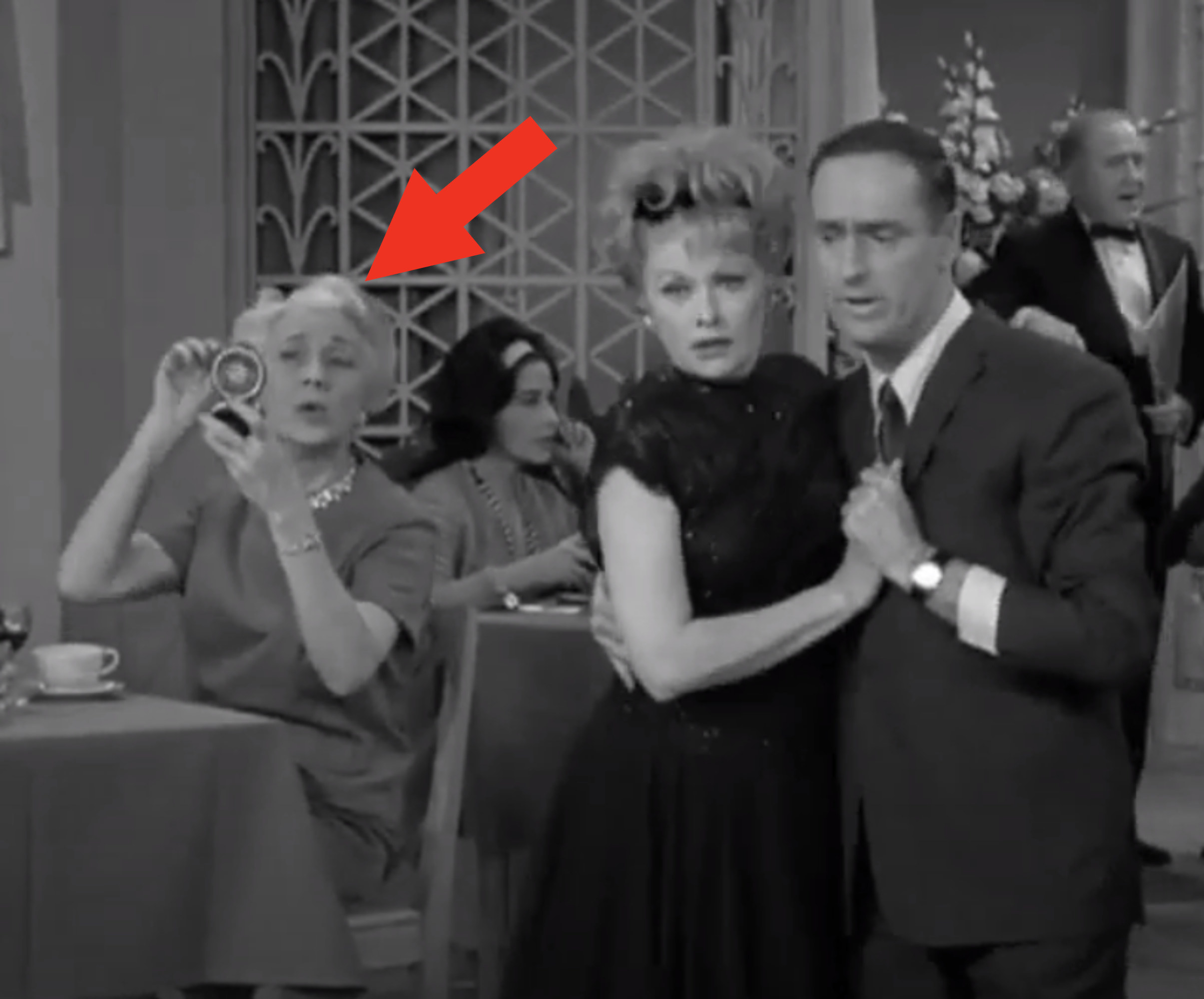I adore a good fun fact, whether they're behind-the-scenes details about some of my favorite movies or a shocking story from history.
I love facts so much that every week, I put together a post full of the most fascinating things I've learned each week. At the end of the month, I like to put 'em all together in one mega-post for your reading pleasure.
With that being said, that means there's a chance you've seen these facts in other BuzzFeed posts before!
So, without further ado, here are 61 utterly fascinating things I learned in December 2022:
1. Walt Disney wanted to enlist in the military during World War I, but was turned away because he was only 16 years old. He later learned that the Red Cross was accepting 17-year-olds, so Disney forged the birthday on his passport, changing his birth year from 1901 to 1900. Once he was officially a member of the Red Cross, he was sent to France, where he worked as an ambulance driver and assisted with post-war operations after the armistice was signed in 1918.
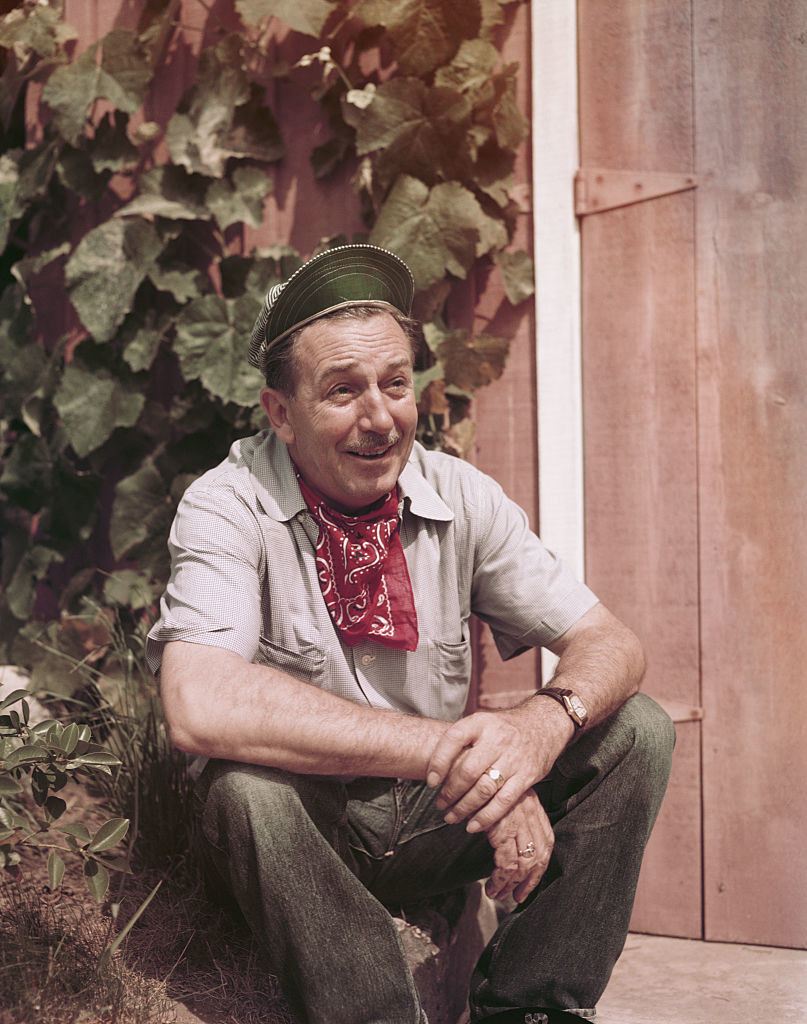
Disney wasn't the only soon-to-be-famous face working for the Red Cross. During training, Disney befriended Ray Kroc, who would later go on to turn McDonald's into a fast food empire. Kroc also had wanted to enlist in the military but turned to the Red Cross when he learned he was too young. While in France, Disney allegedly spent most of his time drawing. "I found out that inside or outside of an ambulance is as good a place as any to draw," he said.
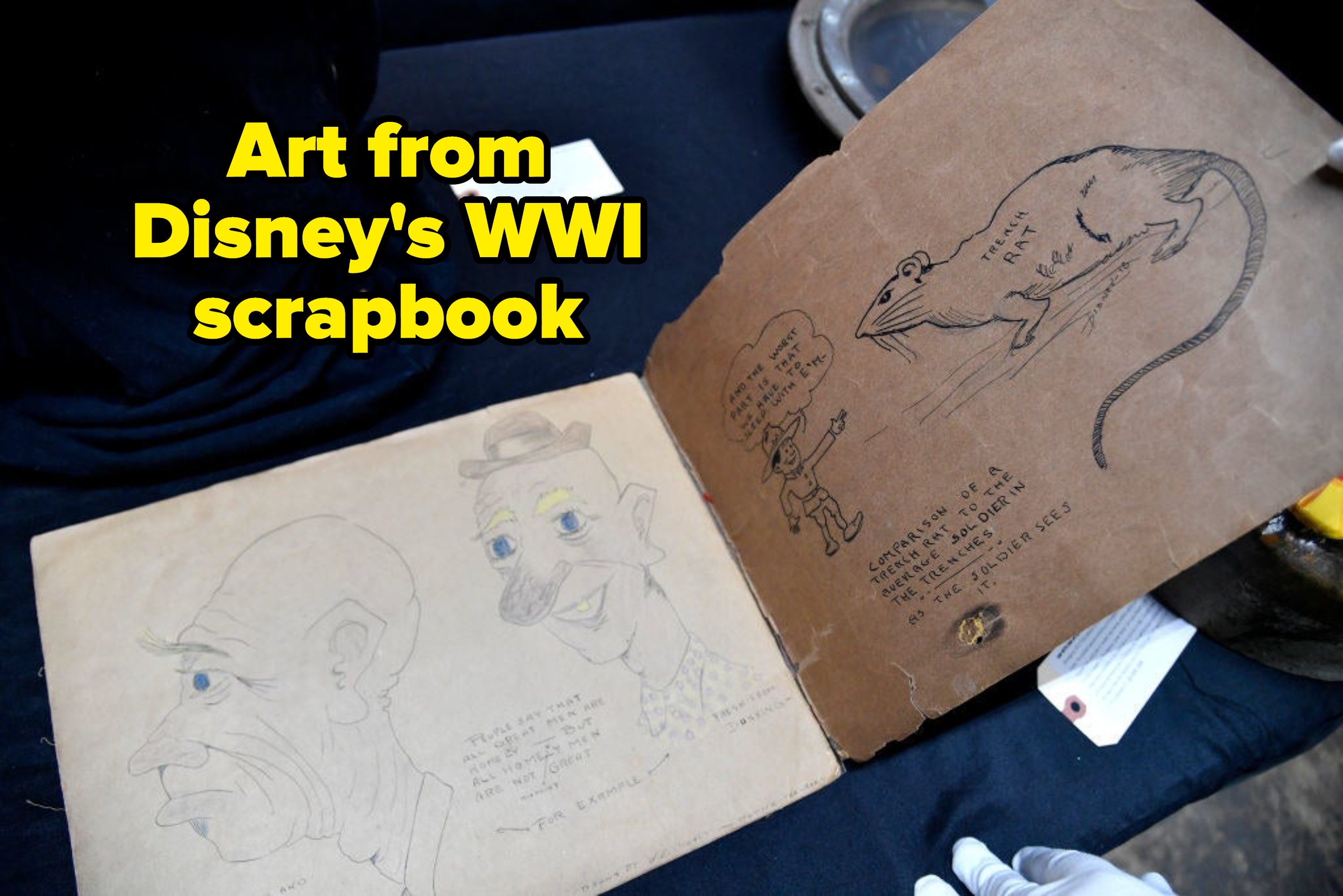
2. At Kaziranga National Park, located in India, park rangers are given permission to shoot poachers in an attempt to save the park's declining rhino population. When the park first opened, there was reportedly only a small handful of rhinos. Due to conservation efforts, the park boasted 2,400 rhinos by 2017, which make up about two-thirds of the world's rhino population. Rangers estimate that about 20 poachers are shot at the park each year. The BBC reported that in 2015, more poachers were killed in the park by rangers than rhinos killed by poachers.

3. The Sopranos' finale is widely regarded as one of the most memorable of all time, due in part to the ambiguity of the closing scene, which features Tony Soprano playing Journey's "Don't Stop Believin'" on the jukebox as the screen cuts to black. Turns out, the song was not the obvious choice for the scene. In an interview, David Chase, who created the show, revealed that he selected "Don't Stop Believin'" because it got a less-than-stellar reaction from his staff.
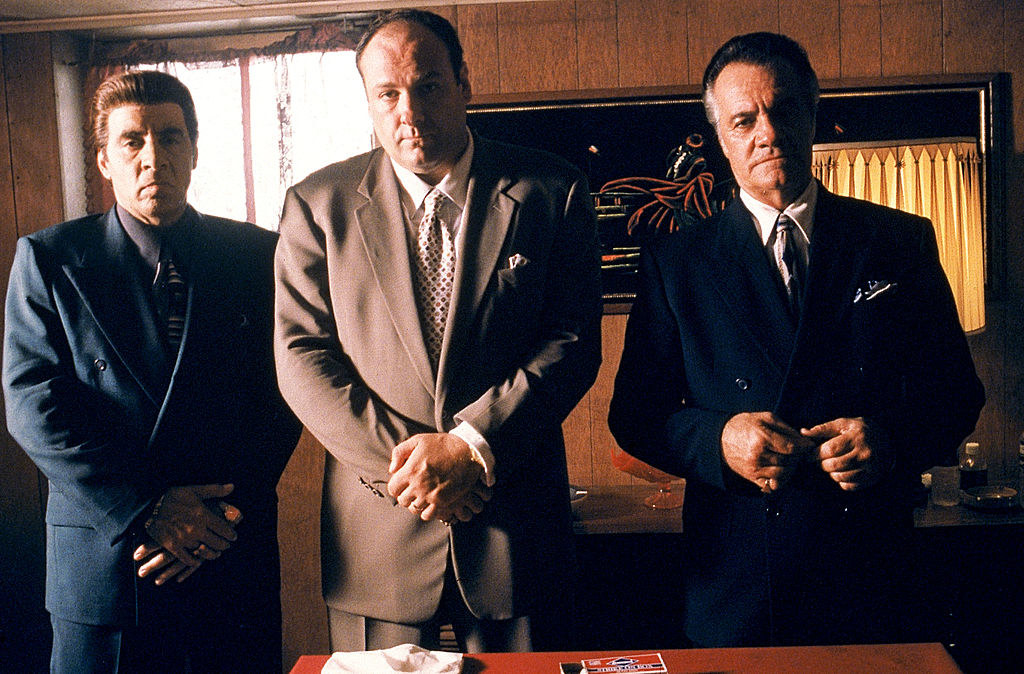
"In pre-production [for the final season], there was going to be a song at the end [Tony] was going to play in the jukebox," Chase said. "I was in the scout van with the department heads…and I had never done this before. I said, 'Listen, I’m going to talk about three songs that I am thinking about for ending the show.'" When he mentioned "Don't Stop Believin'," Chase said everyone immediately objected. "I said, 'Well, that’s it. That’s the one.' I wasn’t saying that just to throw it in their face. That was kind of my favorite, and it got a reaction of some kind. So, I can make this song lovable, which it had been."
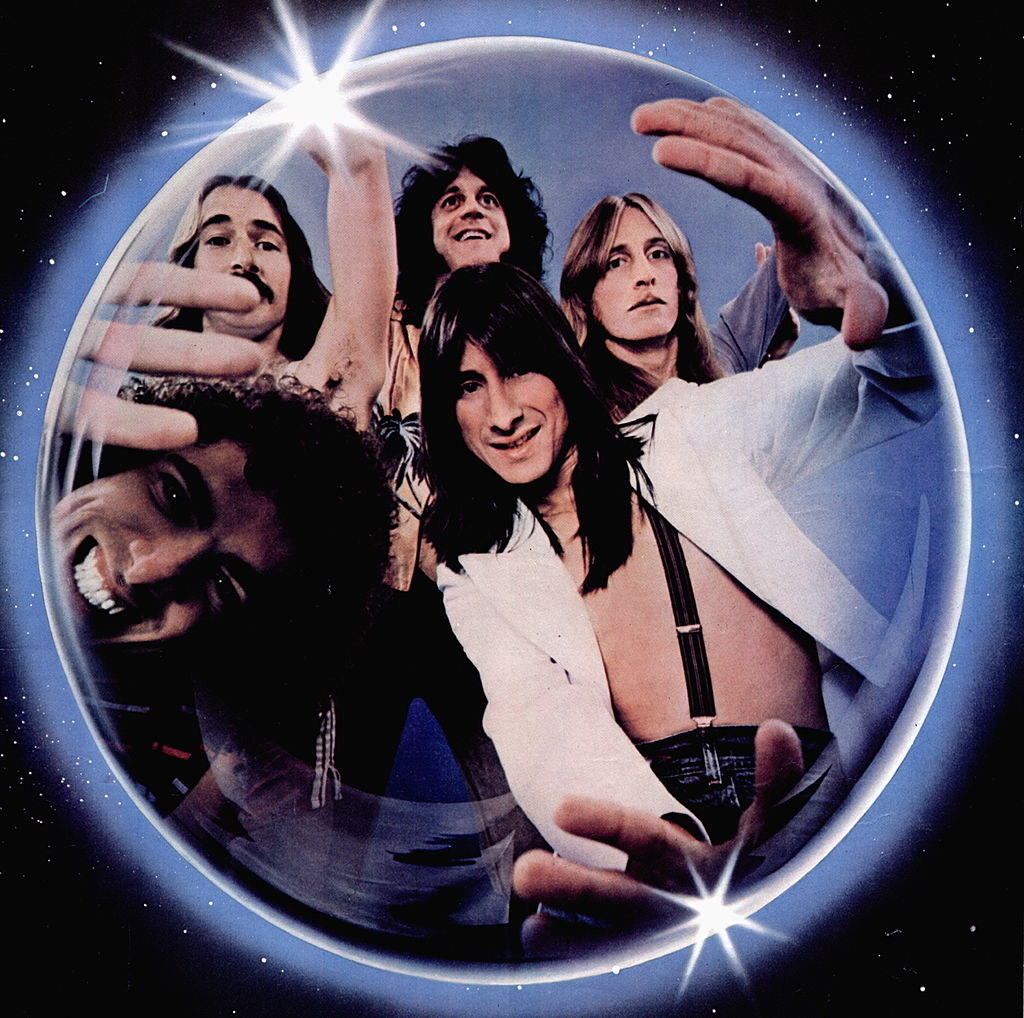
Meanwhile, Journey was worried about having their song close the show. "The request came in a few weeks ago, and it wasn't until Thursday that it got approval, because I was concerned," Steve Perry, the former lead singer of the band, revealed. "I was not excited about [the possibility of] the Soprano family being whacked to 'Don't Stop Believin.' I told them, 'Unless I know what happens — and I will swear to secrecy — I can't in good conscience feel good about its use.'"
View this video on YouTube
4. While the third-class accommodations on the Titanic were allegedly much nicer than the third-class areas on comparable boats, I was still shocked to learn that between 700 and 1,000 third-class passengers aboard the ship had to share just two bathtubs.
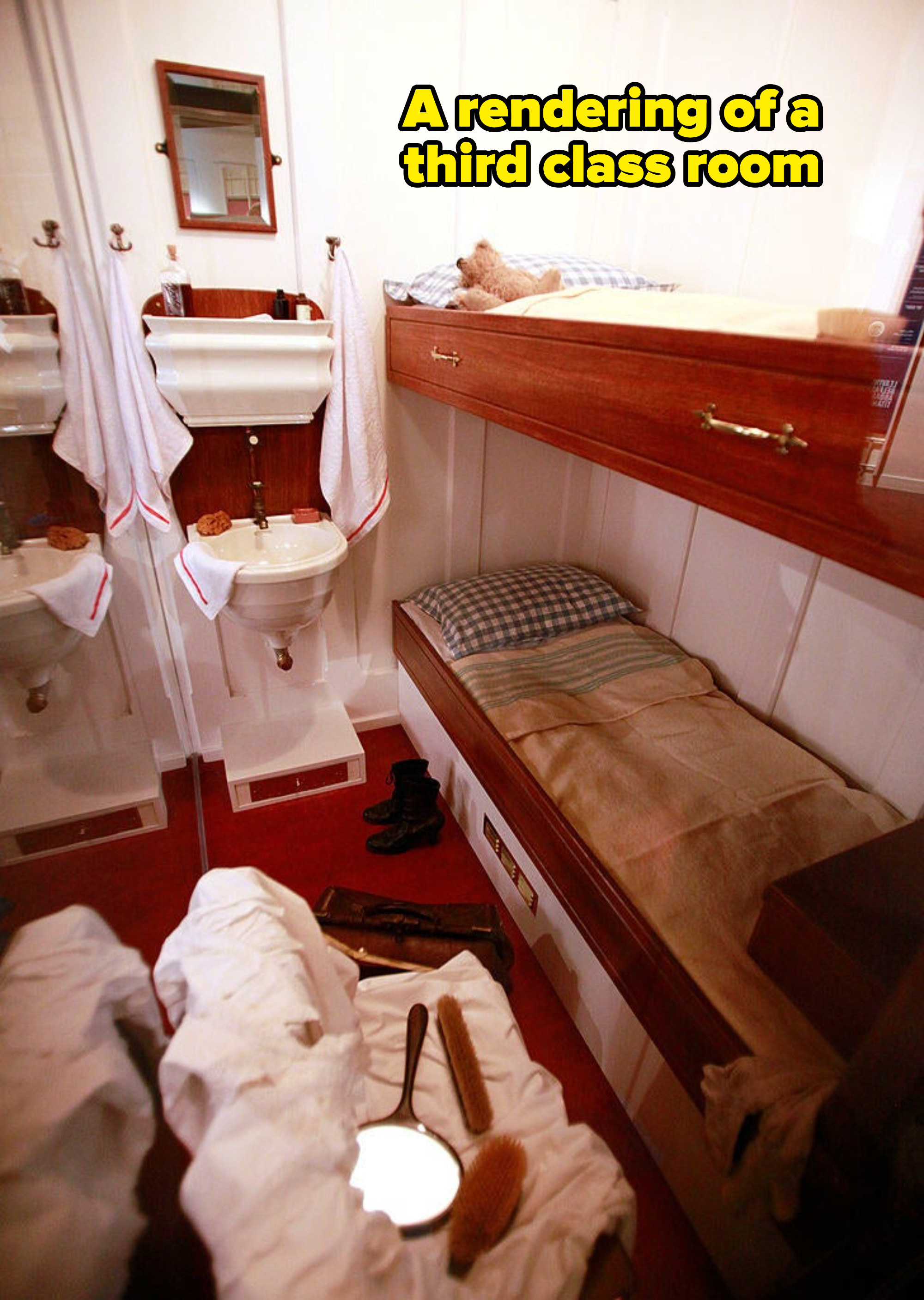
5. Kate Warne, believed to be America's first female detective, was responsible for revealing a plot to assassinate Abraham Lincoln before he took office. While not much is known about Warne's early life, she was born in upstate New York to an impoverished family. She allegedly longed to become an actor, a dream her parents reportedly quashed. By 1859, Warne had pivoted to detective work, helping investigators track down a man suspected of embezzlement from a company in Alabama. Warne allegedly changed her Northern accent into a Southern drawl and befriended the perpetrator's wife in order to eventually elicit a confession.
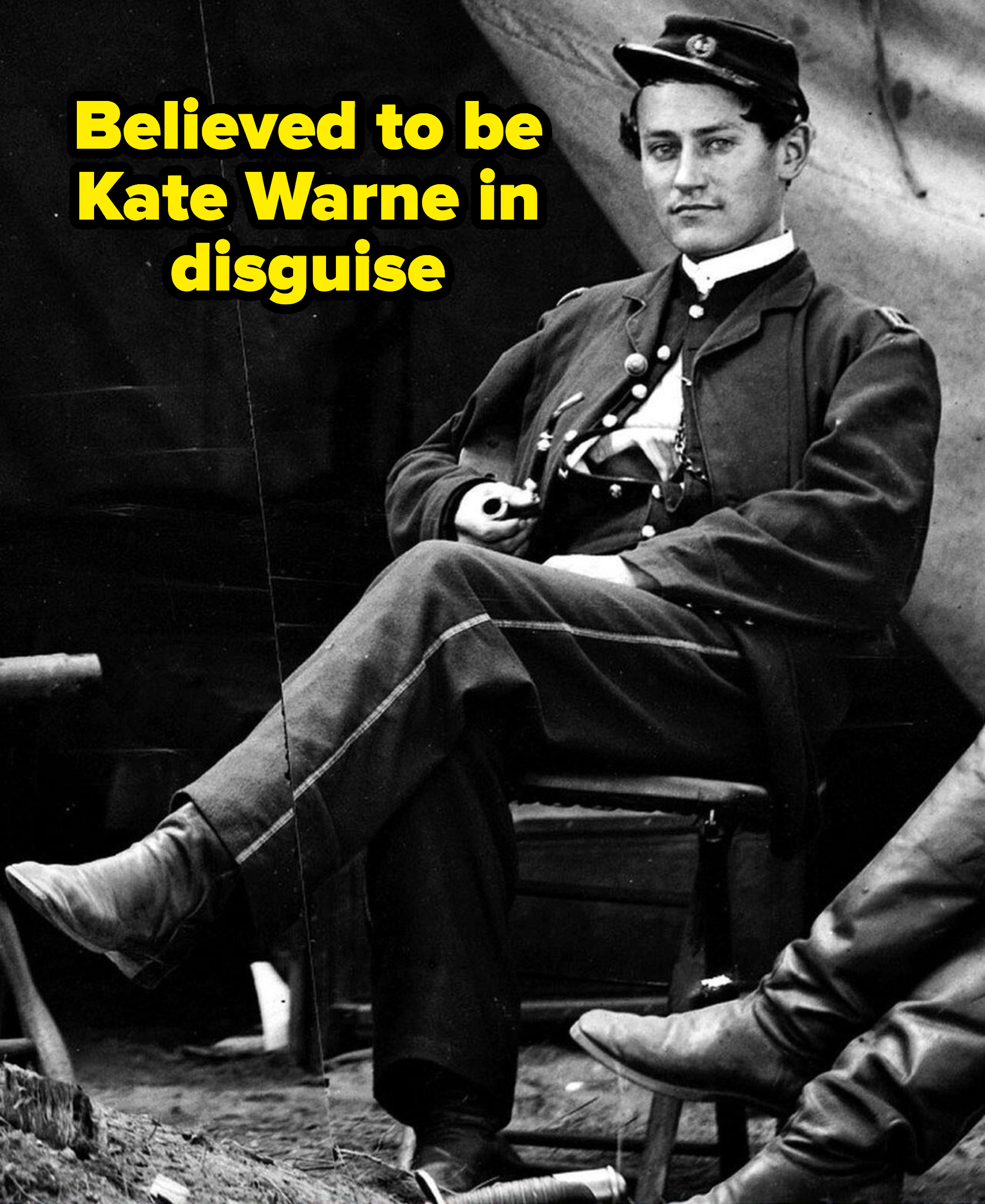
In 1860, Warne was asked to be the head of the Female Detective Bureau, an offshoot of an agency created by detective Allan Pinkerton. Warne accepted the role, went on to hire several female detectives, including some who spied for the Union during the Civil War, and even helped expand the Female Detective Bureau into other locations. In 1861, Pinkerton approached Warne to assist with busting a plot to assassinate newly elected president Abraham Lincoln. Samuel M. Felton, a railroad president, had received a tip about a “deep-laid conspiracy to capture Washington, destroy all the avenues leading to it from the North, East, and West, and thus prevent the inauguration of Mr. Lincoln in the Capitol of the country."
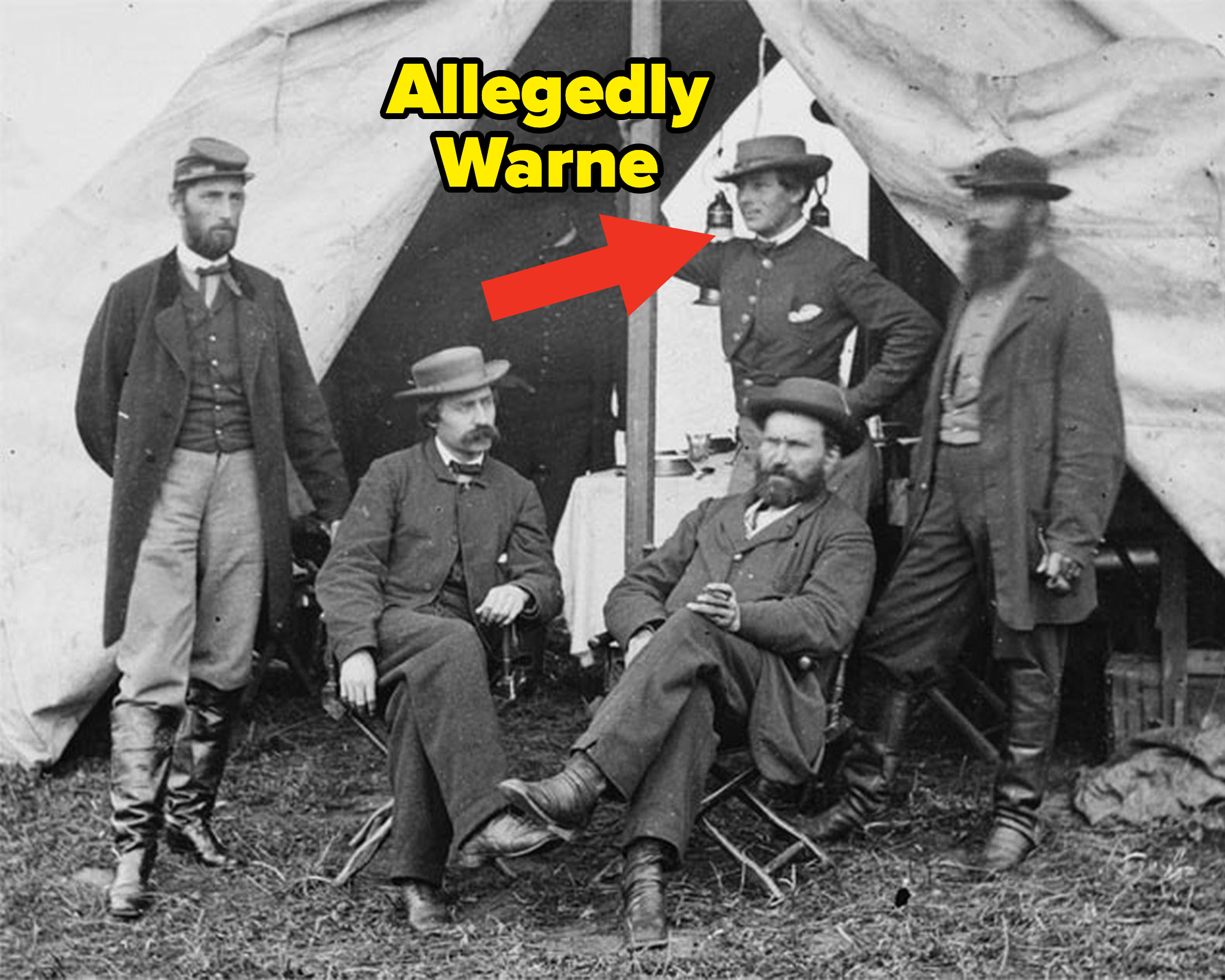
They believed the attempt would happen in Baltimore, the only slave-holding city on the president's route from his home in Illinois to Washington, D.C. Warne went undercover to break up the plot. She resumed the Southern belle identity she had previously used and befriended the wives and sisters of the men involved in the plot to kill Lincoln. After uncovering more details about the assassins' plans, Warne helped sneak Lincoln into Baltimore on an overnight train. Lincoln pretended to be Warne's disabled brother and helped Warne win over the conductor, who gave them their own private train car. Once Lincoln was safely delivered to D.C., Warne continued her Southern belle act, using it to find out insider information about the Confederate army. She died of pneumonia in 1868, and was believed to be 34 or 35 years old at the time of her death.
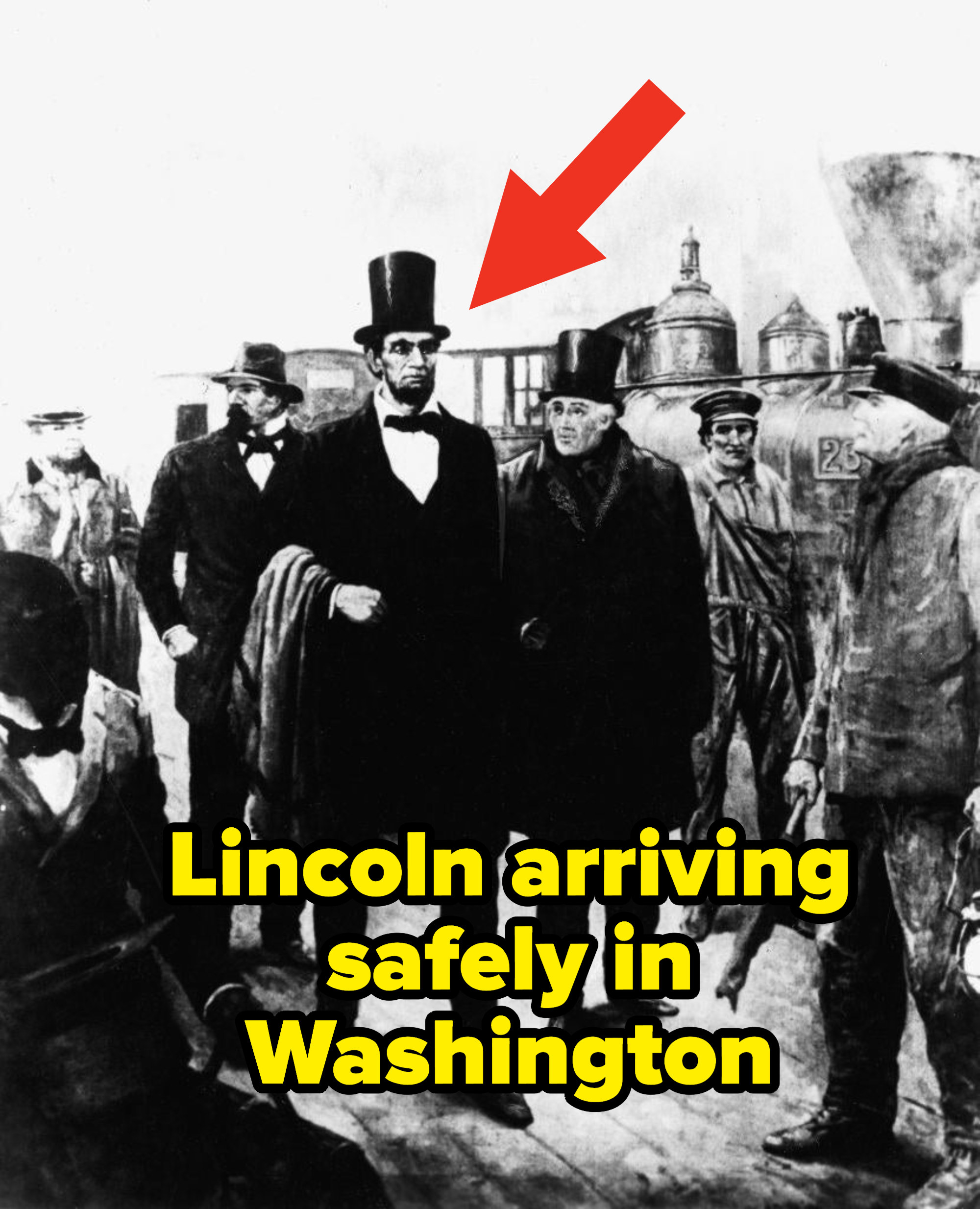
6. If you've ever seen a Pixar movie, then you're probably familiar with the post-credit scenes normally included in each film. The post-credit scene in Toy Story 2, which came out in 1999, featured Stinky Pete offering two Barbie dolls a role in a movie, with some believing that the scene's dialogue insinuated that the parts would be theirs if they performed sexual favors for him. "So, you two are absolutely identical? You know, I’m sure I could get you a part in Toy Story 3," Pete says while clutching one of the doll's hands. Once he realizes he's on camera, he drops the doll's hand and instead innocently offers acting tips.
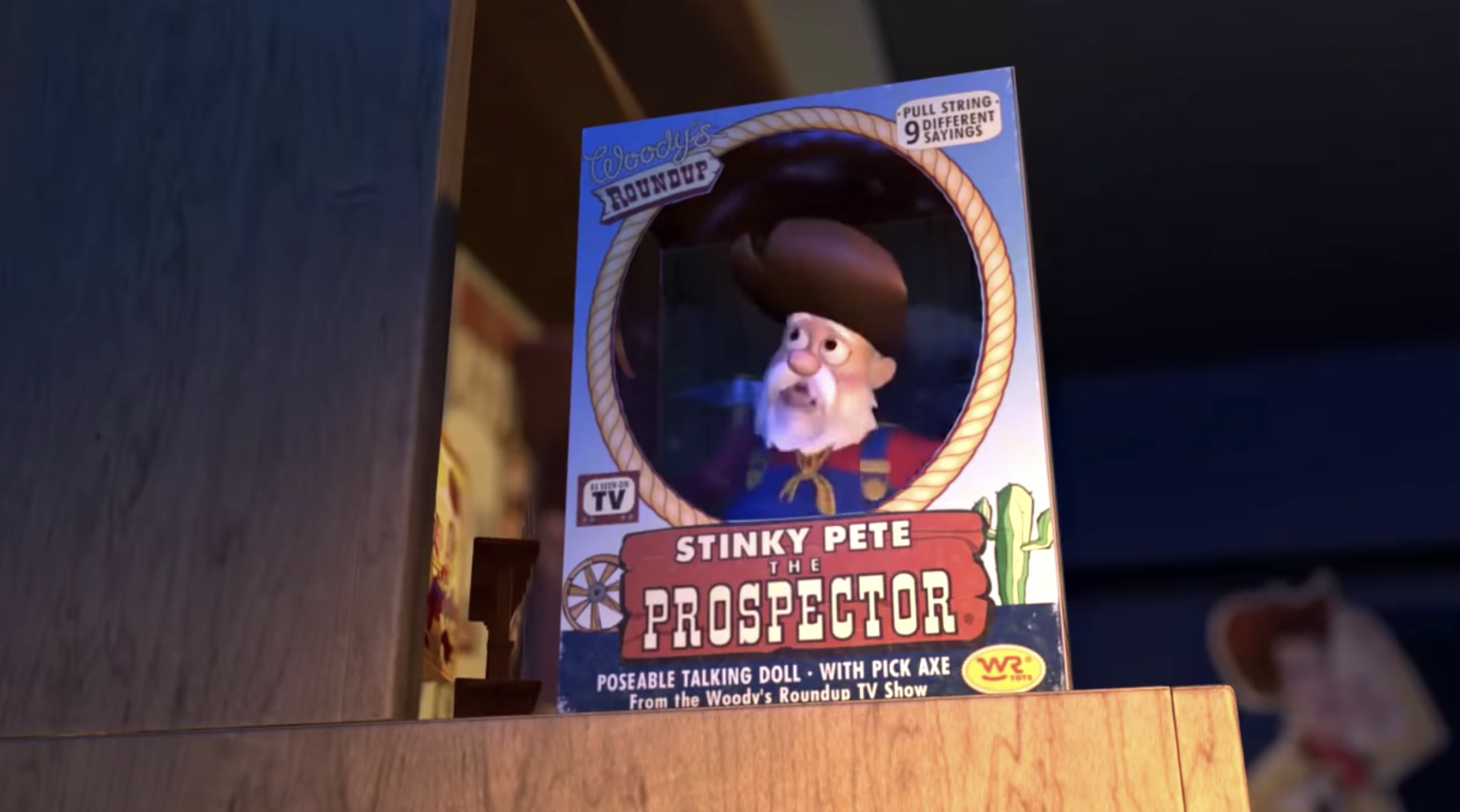
In the wake of sexual assault allegations against prominent Hollywood figures like Harvey Weinstein and Disney's own John Lasseter during the #MeToo movement, Pixar was called out for the inappropriate joke on several online forums after the scene was included in a reissue of the film. As a result, Disney removed the scene from both digital and new physical copies of Toy Story 2 but made no official response in the wake of the backlash surrounding the scene.
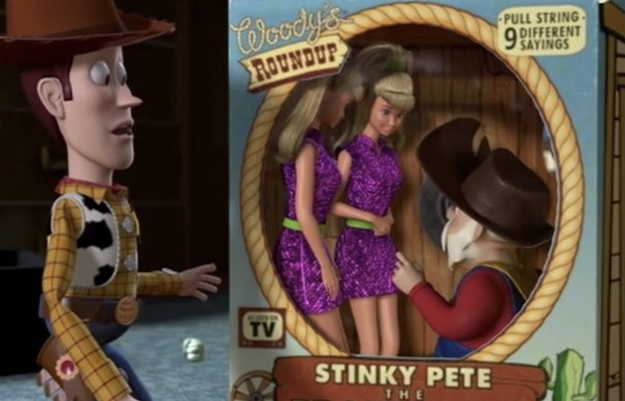
7. This is a fact that deeply disturbs me, so if I had to learn it, now you do, too: The front teeth of squirrels and other rodents never stop growing. While the length of the average squirrel's teeth is kept in check because of their frequent gnawing on nuts, their teeth grow an estimated six inches per year.
8. Turns out the original World Cup trophy, which was known as the Jules Rimet trophy and was in use from 1930 to 1970, has a pretty wild history! During World War II, there was concern about potential damage to the trophy, so Ottorino Barassi, the Italian vice president of FIFA, took the trophy from a bank vault in Rome and hid it under his bed in a shoe box. It remained under the bed until the World Cup resumed in 1950.
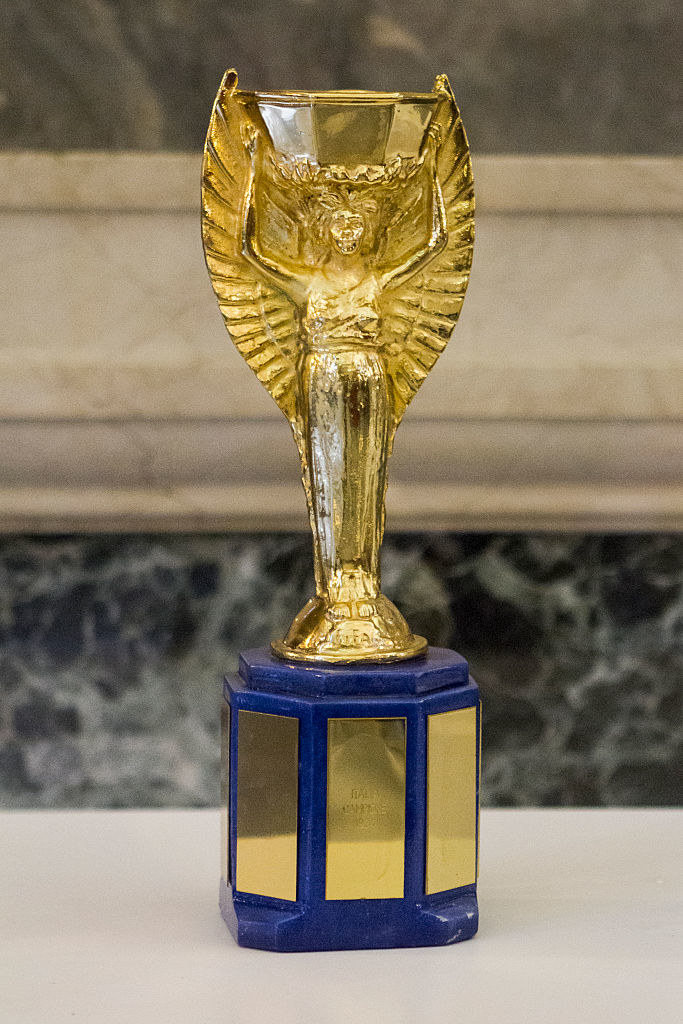
Ahead of the 1966 World Cup, which was held in England, the trophy was on display to the public as part of a sports exhibit. On March 20, 1966, the trophy was stolen. While law enforcement searched for the trophy and the culprit, Joe Mears, the chairman of the Football Association, received a ransom note from someone named "Jackson," who demanded 15,000 pounds in exchange for the trophy. The letter also included a removable piece of the trophy to prove its legitimacy. A team worked to find Jackson's identity and finally tracked him down, only to watch him jump from a moving car to escape. He was finally revealed to be Edward Betchley, who had previously been arrested for theft.
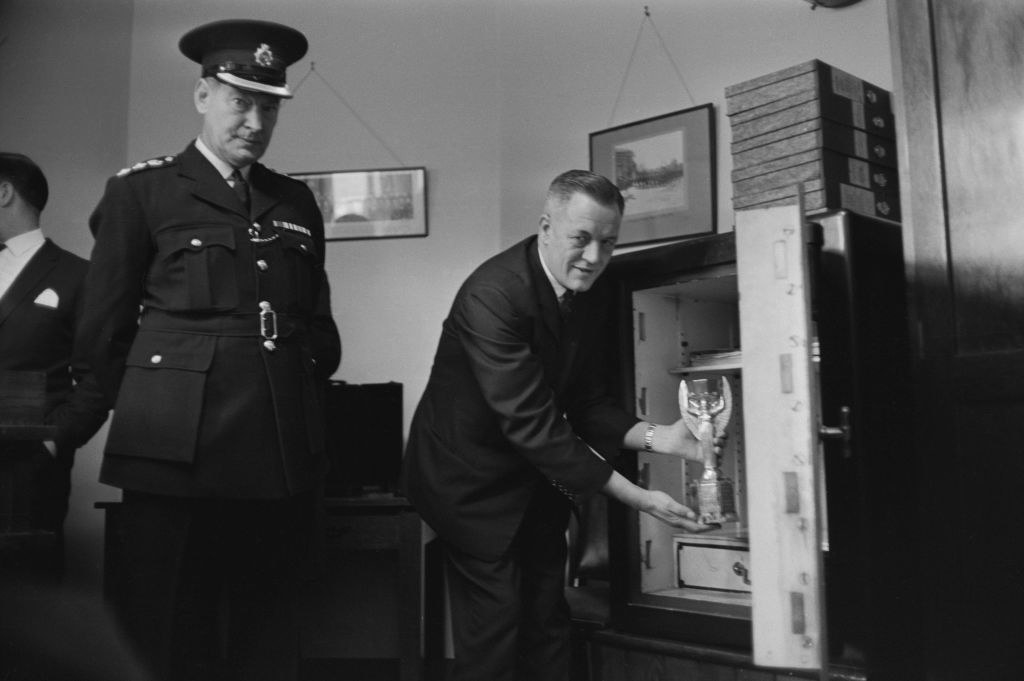
Betchley claimed that he was not the actual thief, and instead, was working as a middleman for someone called "The Pole." About a week after the trophy had been stolen, a barge worker named David Corbett was out walking Pickles, his dog. Pickles beelined to a car with a wrapped package underneath it. Corbett said he initially worried that the package was a bomb, but opened it to find the stolen World Cup trophy. He took it to authorities, who briefly detained him under suspicion that he was "The Pole." Luckily for Corbett, he had an alibi, and soon, he and Pickles became national heroes. England went on to defeat Germany in the World Cup on their home soil, and Corbett was invited to the team celebrations as a thank you for locating the trophy.
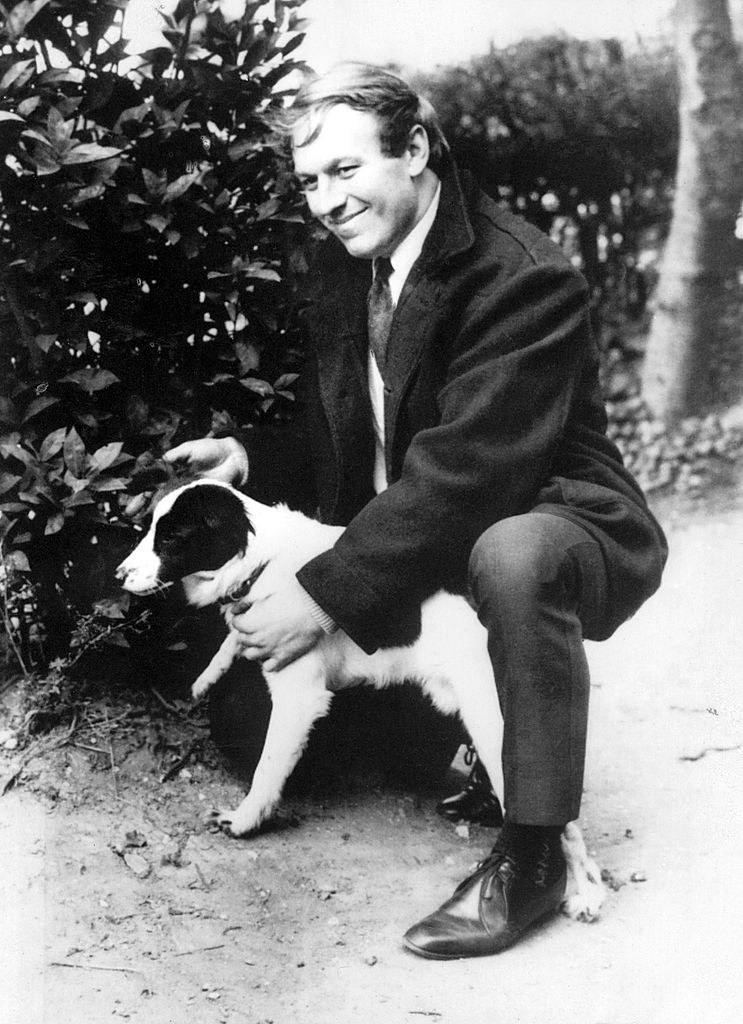
In 1970, Brazil won the World Cup for the third time. The rules of the trophy stated that should a team win three World Cups, then they were able to keep the trophy forever, thus retiring the Jules Rimet trophy. In 1983, the trophy was once again stolen from its new home at the Brazilian Football Confederation headquarters in Rio de Janeiro. It has never been found, and it's believed that the trophy was melted down into gold bars. Now, World Cup winners are presented with the FIFA World Cup trophy, which has been in circulation since 1974. The new trophy remains in FIFA's possession at their headquarters in Zurich. Winning teams now receive a bronze-plated model of the trophy that they get to permanently keep.

9. In the 1950s, Soviet dictator Joseph Stalin allegedly told the KGB to kill actor John Wayne because Stalin believed that Wayne's anti-Communist beliefs were a threat to the Soviet Union. Stalin reportedly first learned about Wayne from Sergei Gerasimov, a Russian filmmaker. Wayne was a huge supporter of the House of Un-American Activities Committee (HUAC) and was a fan of Senator Joseph McCarthy, the lead perpetrator of the Red Scare. Wayne also helped to enforce the "Black List," which destroyed the careers of many actors, writers, directors, and producers who expressed political beliefs that didn't align with those of HUAC.
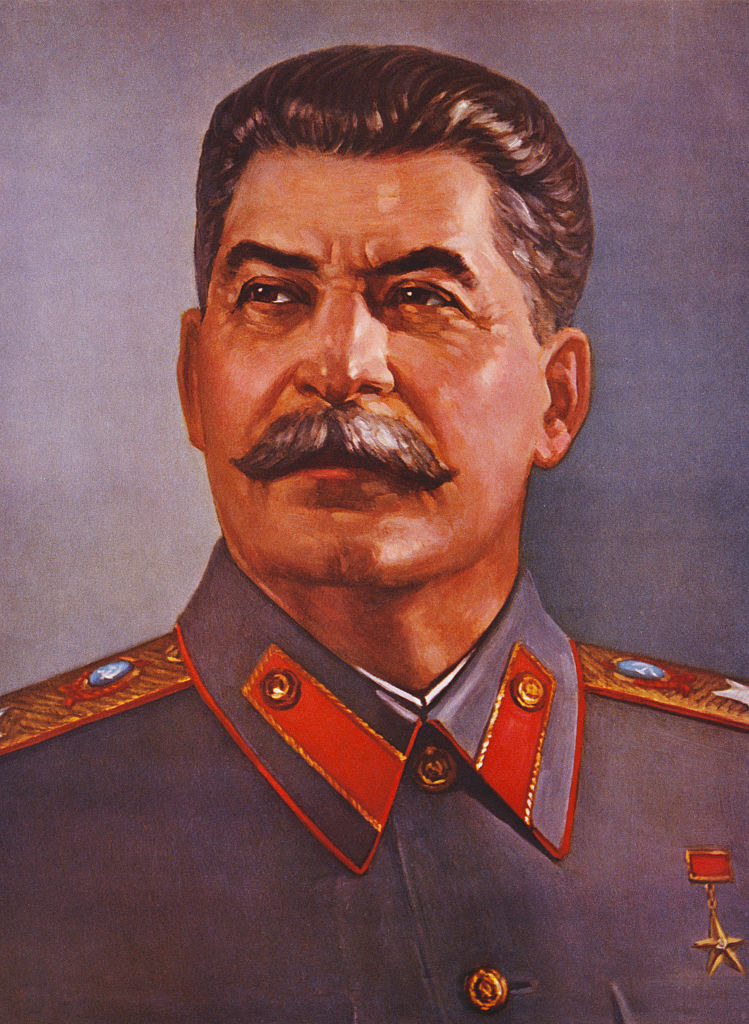
After learning exactly how popular Wayne was in America, Stalin allegedly ordered the KGB to kill him. In the book John Wayne: The Man Behind the Myth, Michael Munn wrote that Stalin sent two Russian hitmen dressed as FBI agents to Wayne's Los Angeles office to kill him. Wayne and his scriptwriter, Jimmy Grant, allegedly abducted the hitmen and staged a mock execution. According to Munn, Wayne's friends later revealed that the KGB hitmen allegedly began working with the FBI after their experience with the actor.
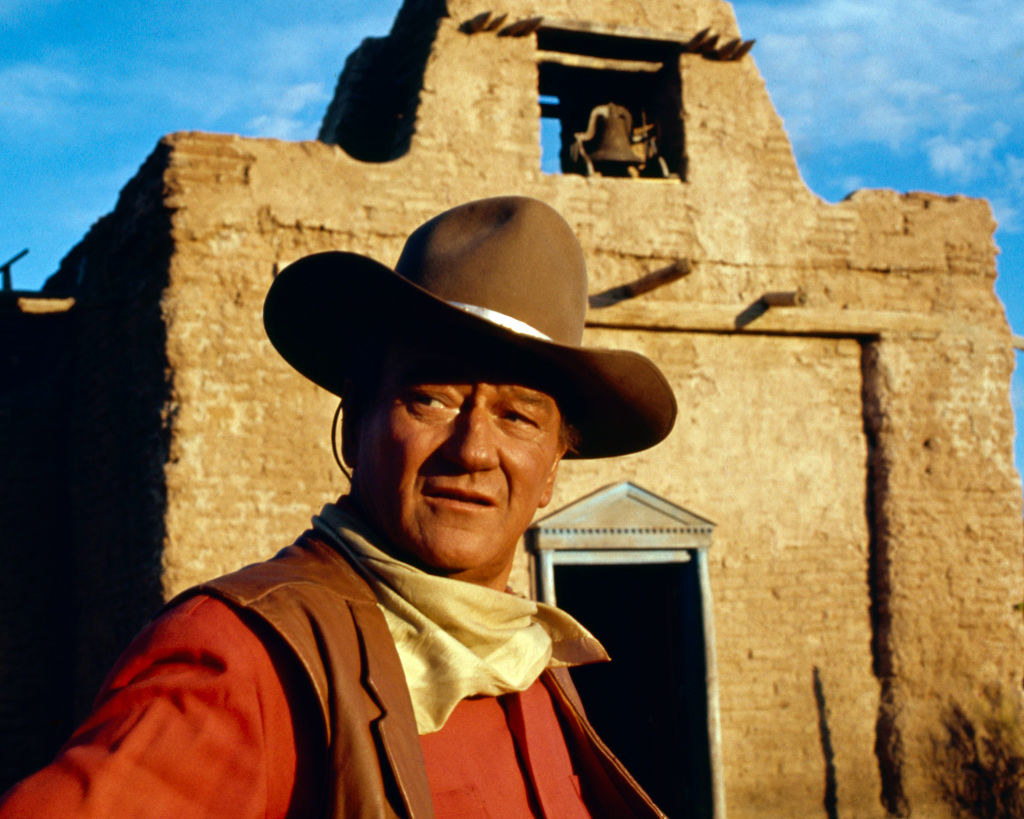
In 1953, Wayne was filming the movie Hondo in Mexico, when the KGB allegedly once again attempted to kill him. Munn also wrote that Mao Zedong, the chairman of the Chinese Communist Party, had hired a sniper to take out Wayne. After Stalin's death in 1953, Nikita Khrushchev, Stalin's successor in the Soviet Union, said he revoked the order to kill Wayne and informed the actor of his decision during a 1958 meeting. While the FBI supposedly offered Wayne protection, he refused. He also never told his family about the threats against him. Wayne allegedly was able to foil the attempts on his life because a group of Hollywood stuntmen he was friends with infiltrated Communist groups around the country to gain intel.
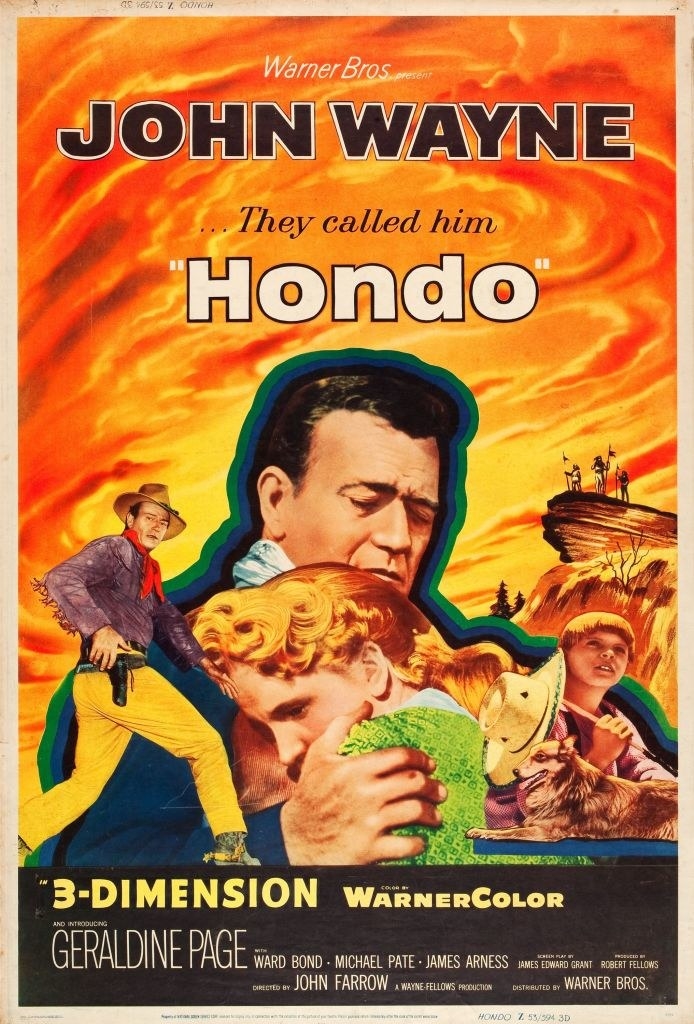
10. If you thought that the fast food chain Wendy's was named after founder Dave Thomas's daughter, then you'd be right. But you also might be shocked to find that his daughter's name isn't even Wendy! Thomas's daughter's actual name is Melinda Lou Thomas. Her siblings allegedly had a difficult time pronouncing her name, so they called her "Wenda" instead, paving way for the restaurant to be named Wendy's. Melinda said that nearly 30 years after the chain opened, her father apologized for naming it after her, acknowledging that it put a lot of pressure on her and claiming that he should have just named it after himself.
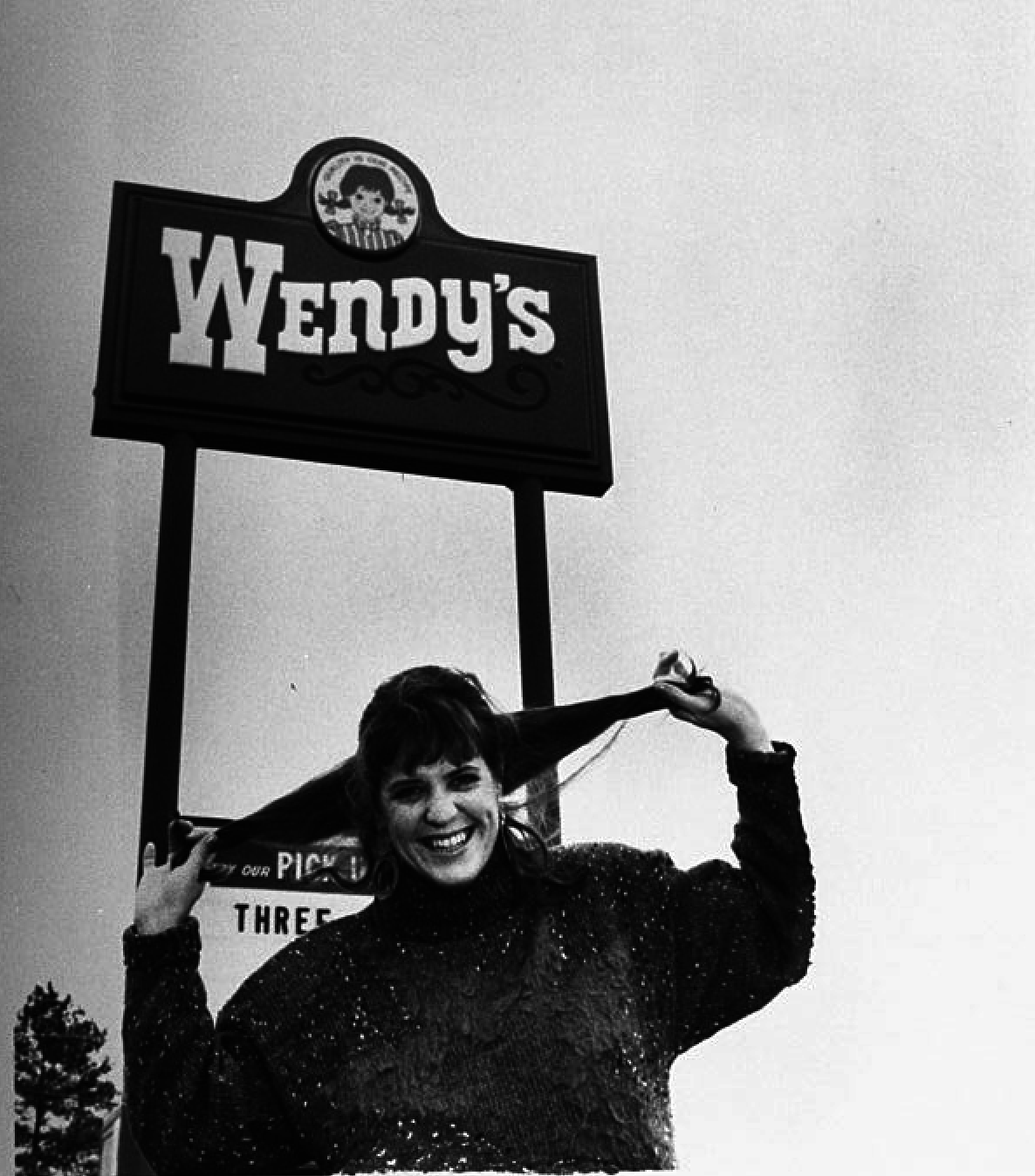
11. In 1995, Princess Diana and John F. Kennedy, Jr. had a secret meeting in Manhattan. Kennedy, who was the creator and editor-in-chief of George magazine, had approached Diana about appearing on the cover. Diana agreed to a meeting with Kennedy, who was often called American royalty, to hear about his ideas for the potential photo shoot. They decided to meet at the Carlyle Hotel in New York City. The issue? Both Diana and JFK Jr. were incredibly recognizable people, and they wanted to ensure that their meeting went unseen by the public. RoseMarie Terenzio, Kennedy's executive assistant, said her boss was pretty doubtful that the pair would be able to successfully evade the public. "I remember him saying, 'There’s no way someone is not going to leak it. There’s going to be paparazzi everywhere,'" she said.

After suggesting everything from disguises to secret entrances, Kennedy's team finally decided that he and Diana would enter the hotel through the front doors, because they believed that the paparazzi would be staked out near the hotel's more private side entrance. Sure enough, the press was nowhere to be found as the pair entered the hotel, and instead were clustered by the side door. Despite the promising start to the meeting, Diana ended up never posing for George magazine. Kennedy had nothing but nice things to say about the princess. "I do remember him saying, 'She’s really tall!' He also said she was very shy. He was surprised how demure she was," Terenzio said. "I think they had both met Mother Teresa so they spoke about that. And he said how lovely she was."

12. In 2002, Jared Hess, who was a Brigham Young University film student at the time, filmed a black-and-white short called Peluca. After the short got accepted into a film festival, he decided to turn it into a feature-length film. The movie, known as none other than the cult classic Napoleon Dynamite, was shot in Idaho for a mere $400,000. When the movie was released in 2004, it ended up grossing over $44 million. In 2005, the Idaho legislature presented Jared and Jerusha Hess, Jared's wife and a co-writer on the film, with a resolution commending them for their depiction of Idaho in the film. They thanked the Hesses for the movie's frequent use of tater tots, saying that it "promot[ed] Idaho’s most famous export." The resolution concluded by saying that anyone who “vote[d] Nay on this concurrent resolution are Freakin’ Idiots.”
13. Despite the fact that Millard Fillmore has gone down in history as one of the most forgettable US presidents, his wife, Abigail Powers, was actually an incredibly popular public figure. Fillmore grew up as an indentured servant and had very little formal schooling. In 1819, he went to the New Hope Academy to enroll in classes. Powers, who was a teacher at the school, began to work closely with Fillmore and tutored him through various subjects. When Fillmore's family abruptly moved, the pair were separated.
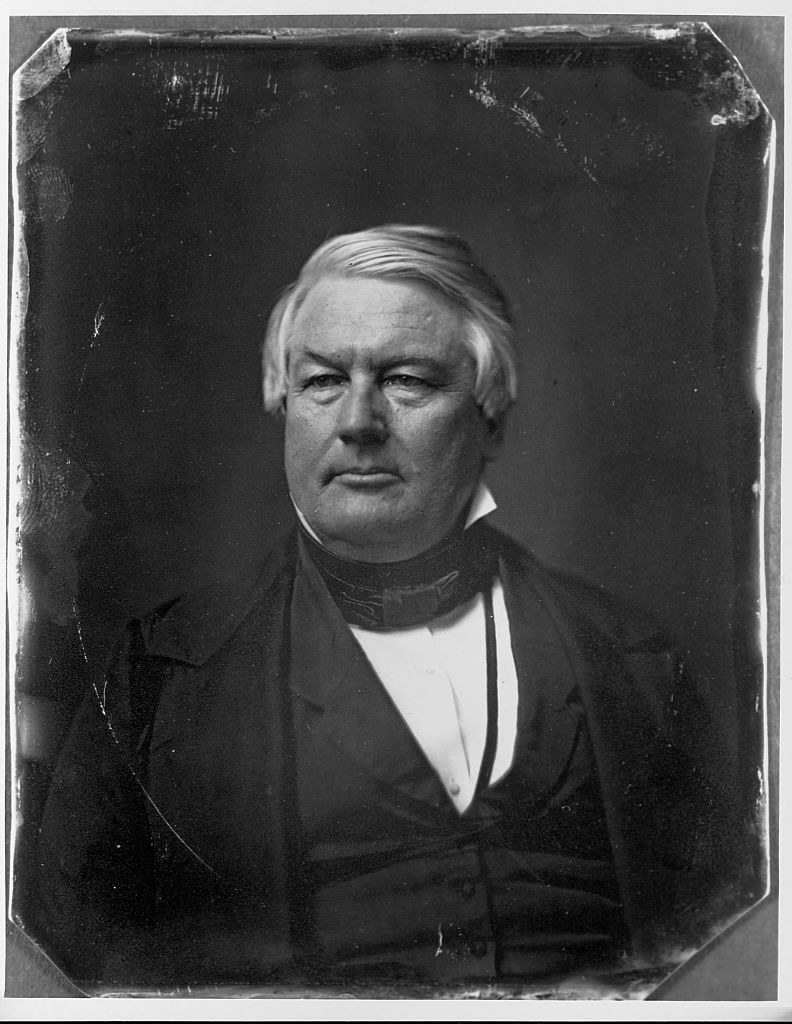
After Fillmore moved, he said he realized he had been "unconsciously stimulated by the companionship." The pair kept in contact via letters for three years, until Fillmore moved back to East Aurora, New York, to open a law practice. They wed in 1826. Powers continued to work as a teacher after marrying Fillmore, making her the first US First Lady to make her own salary after marriage. Fillmore soon got involved in politics. In 1836, Powers moved to Washington to live with her husband while he served in Congress. In 1848, Fillmore became Zachary Taylor's vice president. When Taylor died in 1850, Fillmore took over the presidency. Powers was seen as a "bona fide public figure." Newspapers frequently wrote about her and often mentioned how charitable she was with constituents.
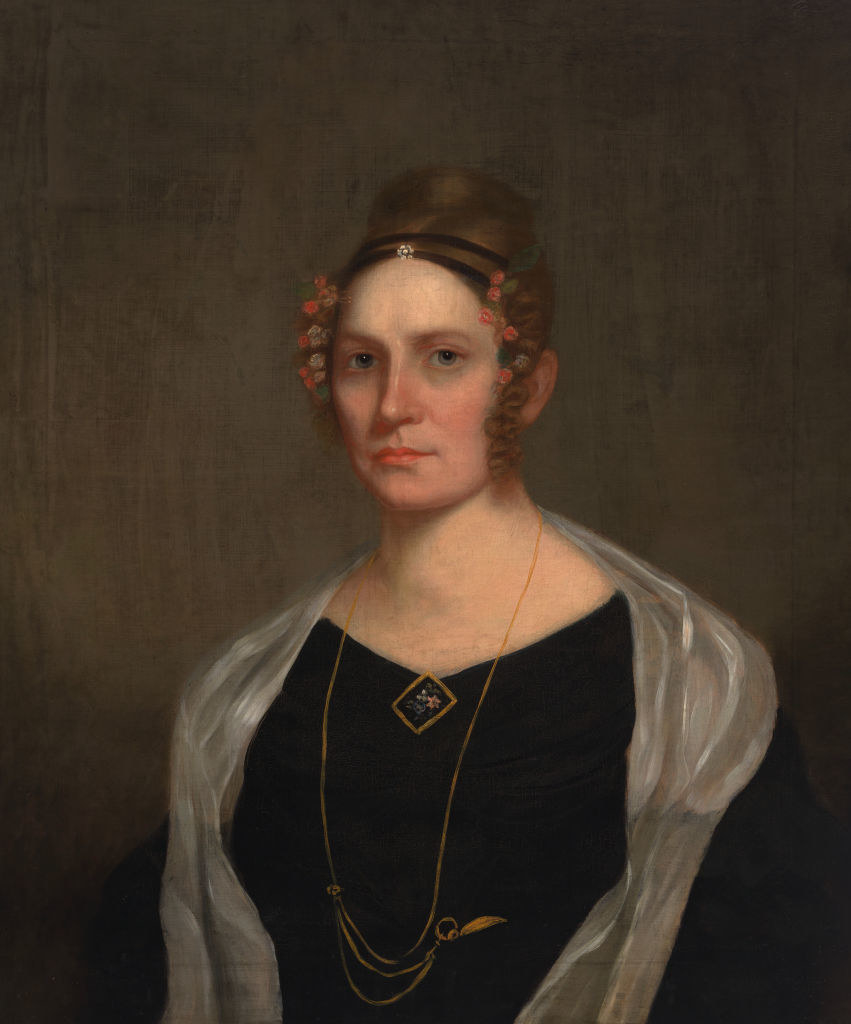
Powers was known for being "highly conscious of her public appearance." She was the first First Lady to wear clothes made with a sewing machine. By 1853, the White House began selling postcards with her photo on them. During her time in the White House, Powers shocked the world as she accompanied her husband to various events, bucking against the idea that a wife should be a private person who stays at home. Powers was also extremely into pop culture. She was frequently spotted at concerts and maintained friendships with popular authors of the time period. Shortly after leaving the White House in 1853, Powers developed pneumonia. Her death was allegedly more widely reported on by the media than the deaths of any First Ladies before her.
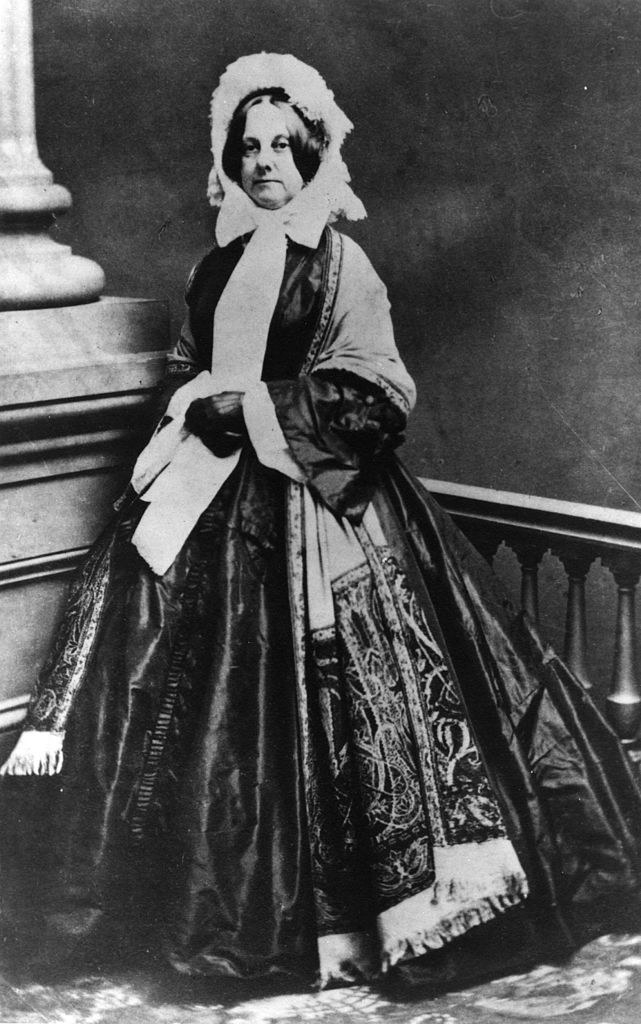
14. "72 Hours," an episode of The Golden Girls that aired in 1990 shed light on the AIDS crisis in America in hopes of eliminating the stigma around the disease. In the episode, Rose (Betty White) receives a letter telling her that she may have contracted HIV from a blood transfusion during a gallbladder surgery several years earlier. Rose decides to get tested for HIV, and finds that some of her housemates are initially hesitant to be around her. As Rose waits for her test results, she tells Blanche that "this shouldn't happen to people like me." Blanche responds with, "AIDS is not a bad person's disease, Rose. It is not God punishing people for their sins."
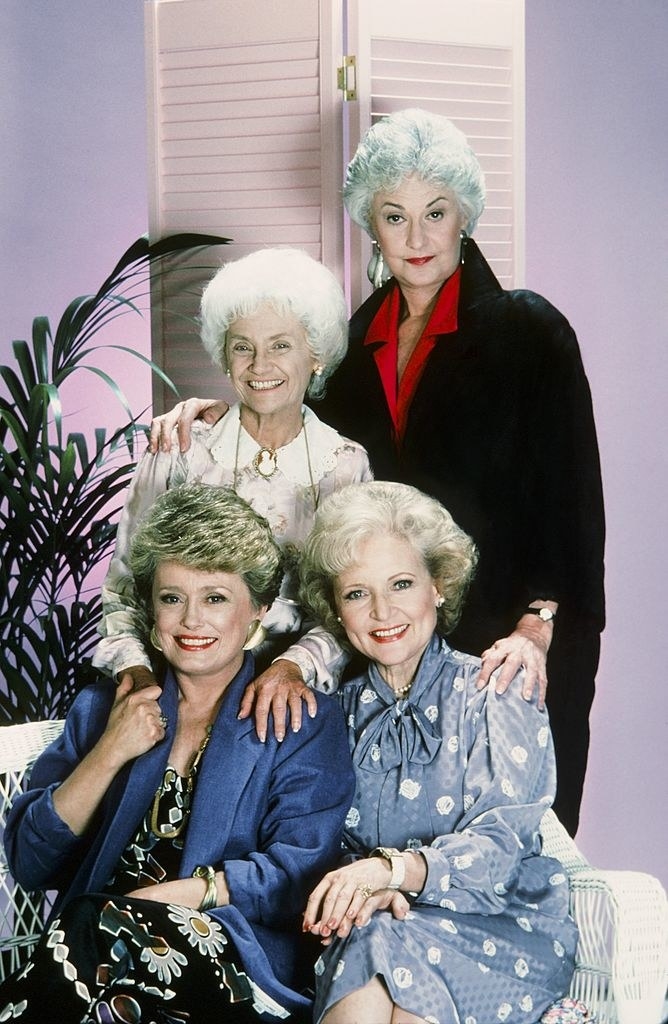
Although the episode eventually revealed that Rose was HIV-free, it helped to spread the idea that HIV/AIDS is not just a disease for gay people. When the episode debuted, AIDS testing was still relatively new. For some, the episode hit close to home. Tracy Gamble, one of the show's producers, revealed that "72 Hours" was based on the time his mother needed to be tested for HIV after a blood transfusion. Peter D. Beyt, an editor working on the show, said that his partner was dying of AIDS. He recalled breaking down while editing the episode. "From that point, right in the middle of my partner’s battle, I no longer thought I was a bad person," he said. "The show changed me in that moment of desperation. And my God, did the world ever need that to be said!"

15. Sharks are older than trees. According to Smithsonian magazine, the earliest species of trees, located in what is now known as the Sahara Desert, have been traced back a mere 350 million years, while sharks have been swimming around for over 400 million years.
16. In 1982, Madonna was discovered by executives from Sire Records after she convinced the DJ at Danceteria, a nightclub in New York City, to play her song. After meeting the singer, they agreed to a meeting. While Michael Rosenblatt, a Sire executive, said the demo "wasn't anything amazing," he noted that Madonna "radiated star power." Seymour Stein, Sire's founder, was in the hospital but agreed to meet with Madonna from his hospital room after realizing that she could become a huge star. After signing Madonna to the label, they settled on "Everybody" as her debut single. The song was a unique blend of dance music and the New Wave scene, so Rosenblatt believed it would attract a wide variety of people.

One of Rosenblatt's marketing tactics was to leave Madonna's photo off of the album art. "I didn’t want her picture on the cover of the 'Everybody' single, because I thought I could get a lot of R&B play on that record, because a lot of people thought she was Black," he told Rolling Stone. Instead, they created a collage using photos of everyday people clipped from magazines. According to Mary Cross's Madonna: A Biography, the song was often played on radio stations with predominantly Black artists, like New York's 92 KTU. Any misconception about Madonna's race was cleared up shortly after, once she released a music video to accompany the song. The album artwork was later revamped to feature a photo of the singer.
View this video on YouTube
17. In 2000, Blink-182 released a music video for their song "All the Small Things." The video, which was filmed at a rocky California beach, poked fun at popular boy bands of the time by mimicking their dance moves. Coincidentally, in 2011, One Direction, now considered one of the biggest boy bands of all time, filmed the music video for their hit "What Makes You Beautiful" on the same beach. Both videos feature some fascinating parallels, although it's unclear if One Direction took any inspiration from Blink-182's parody.
View this video on YouTube
18. You've probably seen Duncan Hines's cake mix at the store, but did you know Duncan Hines was actually a real person? Hines was a traveling salesman who loved to eat but often struggled to find good food on the road. As a result, Hines began carrying around a small journal where he would jot down notes about the best places to eat. He would even peek into the kitchens and examine the dumpsters at restaurants to ensure they were following food safety practices. People soon began begging Hines to share his knowledge. In 1935, he finally obliged and included a pamphlet featuring 167 restaurant recommendations across 33 states in his Christmas cards. By the next year, Hines had self-published his first official restaurant guide.
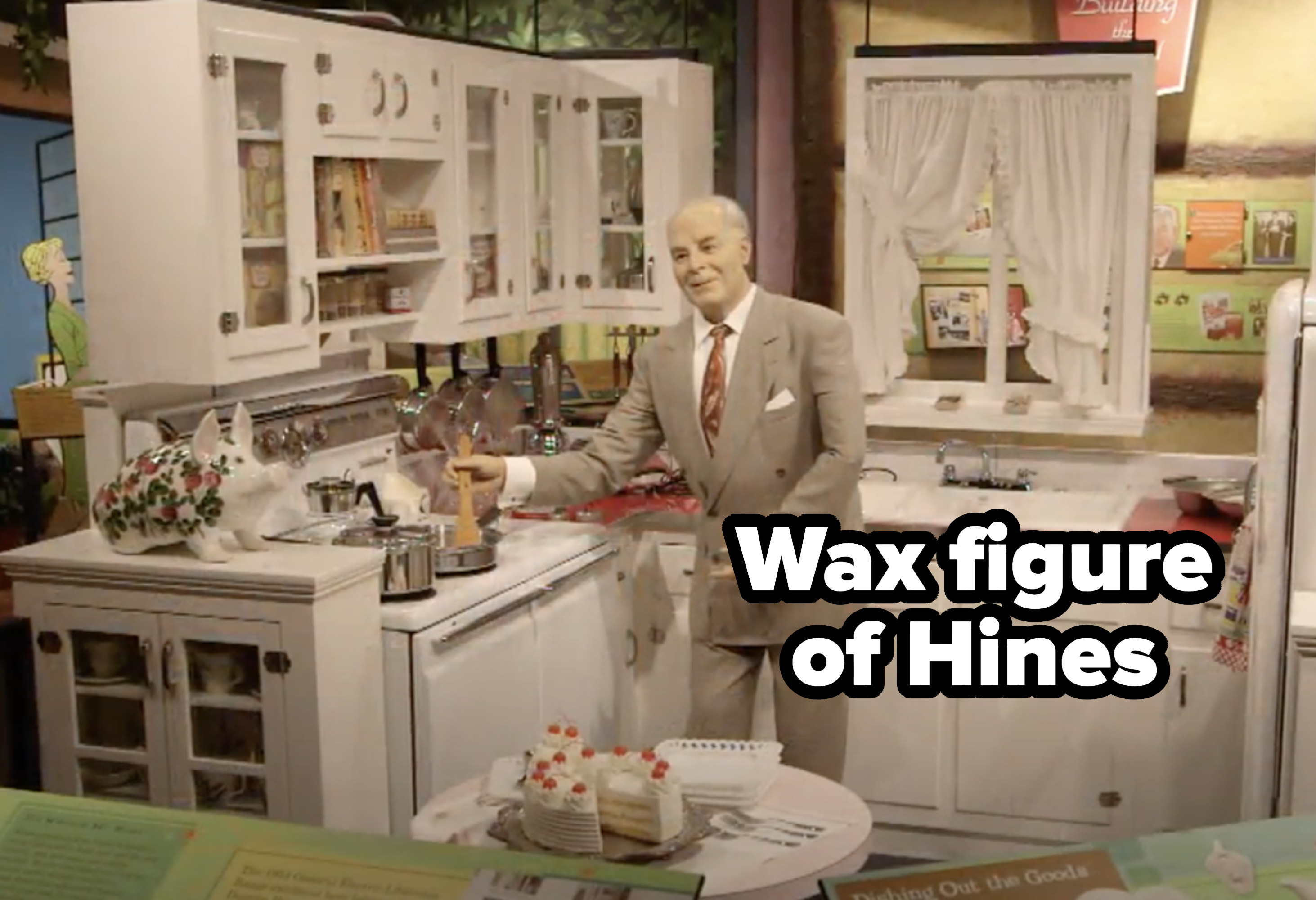
Hines updated his guides every year from 1935 to his retirement in 1954. He would remove restaurants that he had previously recommended if they didn't remain up to his high standards, and refused to accept any ads or endorsements. Soon, restaurants began to boast if they were included in Hines's Adventures in Good Eating. In 1952, Hines partnered with Roy H. Park, who helped develop the Duncan Hines product lines that included everything from cake mix to ice cream. Hines died in 1959.

19. If you always thought you had the standard 206 bones, you might want to think again! A study showed that over 36% of participants had what scientists called "accessory bones" in their feet. Accessory bones are most commonly found near the wrist, hand, ankle, foot, or neck, and are typically small and pebble-like. Around 10% of adults have an extra lower vertebrae in their spine, while others have cervical ribs, which can be found slightly above the collarbone. The presence of cervical ribs can occasionally lead to health problems.
20. While you might know that Neil Armstrong, Buzz Aldrin, and Michael Collins were the astronauts aboard Apollo 11 during the 1969 moon landing, the actual crew almost looked very different. Aldrin had longed to be a part of NASA. In 1962, he was turned down because they were only looking for test pilots, while in 1963, NASA had concerns about his health after he and his wife allegedly contracted hepatitis from bad wine. Aldrin finally got an assignment as the backup to an astronaut on the Gemini 10 flight, which meant that he would be guaranteed a main spot on the Gemini 13 mission. The issue? The Gemini flights ended up stopping at Gemini 12, once again seemingly leaving Aldrin out.
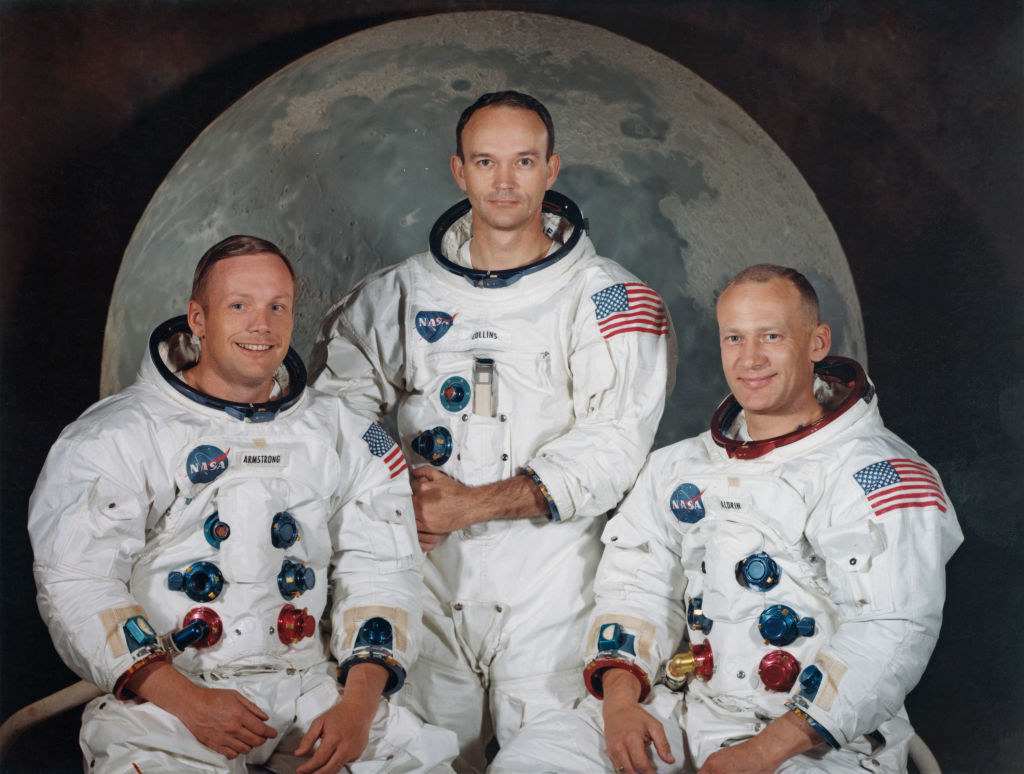
After two astronauts who were part of Gemini 9 were killed, Aldrin found himself with a spot on Gemini 12, where he performed "flawlessly," raising his standing at NASA. Meanwhile, Armstrong had been informed that he would command the Apollo 11 mission, which would end up being NASA's attempt at landing on the moon. Armstrong was asked if he'd like to replace Aldrin, who he had previously worked with, with Jim Lovell. NASA officials "recognized that Aldrin's personality grated on several of the other astronauts." Armstrong elected to keep Aldrin on his crew, because he believed that Lovell was so talented that he deserved to command his own mission. NASA gave Lovell the command role on Apollo 13, which was aborted after an oxygen tank failed. Luckily, all of the astronauts on board survived the disaster.
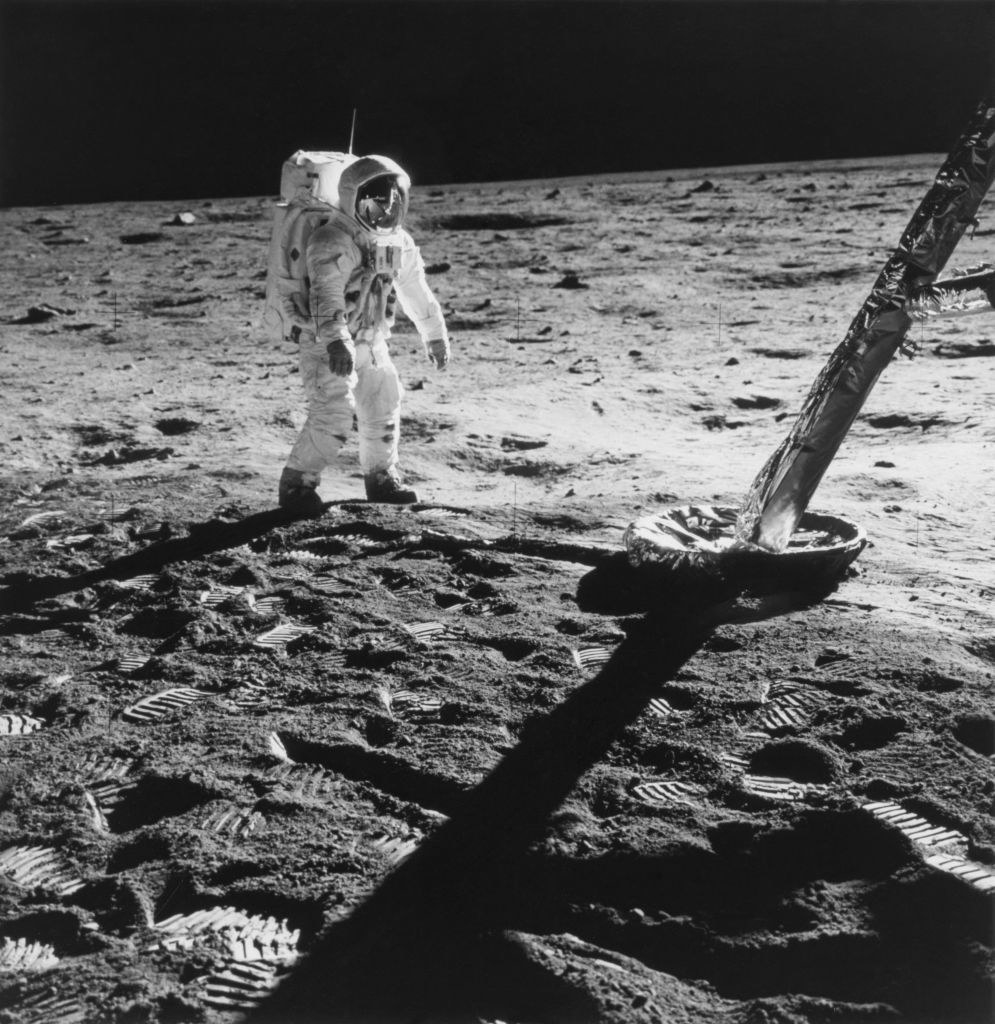
21. Candace Cable is the first woman to ever medal at both the summer and winter Paralympic Games. Cable grew up as an avid hiker, swimmer, and skier. In 1975, when she was just 21 years old, Cable severely injured her spinal cord in a car accident, leaving her unable to walk. She spent over six months in the hospital and said she became depressed and addicted to pain medication after the accident. In 1978, Cable sought help to process her accident. Soon, she enrolled at Long Beach State University and became involved with the Disabled Student Services group, where she participated in her first wheelchair race.

Wheelchair racing was relatively new at the time, and Cable, who excelled at the sport, joined the movement to popularize it. She helped design equipment and worked to develop the rules of the sport. In 1980, she made her Paralympic debut and won two gold medals. She went on to appear in three more summer Paralympics and five winter Paralympics. At the 1992 Winter Paralympic Games, Cable won three medals in skiing, making her the first woman to win medals at both versions of the games. Cable has also won 84 marathons, including six wins at the Boston Marathon. After retiring from competition in 2006, Cable began working as an advocate for Paralympic sports. In 2019, she was inducted into the Team USA Hall of Fame.
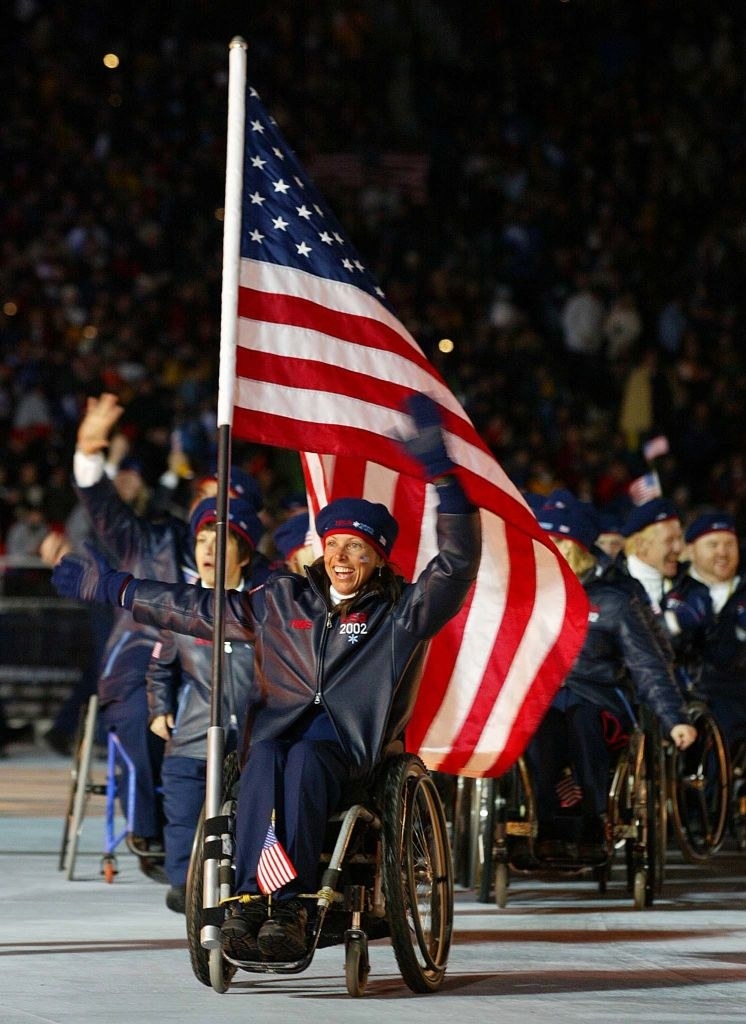
22. In 2018, Barbra Streisand revealed in a Variety interview that two of her dogs were clones. After Samantha, Streisand's Coton de Tulear, died in 2017, Streisand reportedly had cells taken from Samantha's mouth and stomach to create clones of her beloved pup, which she named Miss Violet and Miss Scarlett. She told the magazine that she was "waiting for them to get older so I can see if they have her brown eyes and her seriousness." According to the New York Times, the cloning procedure likely cost between $50,000 and $100,000.
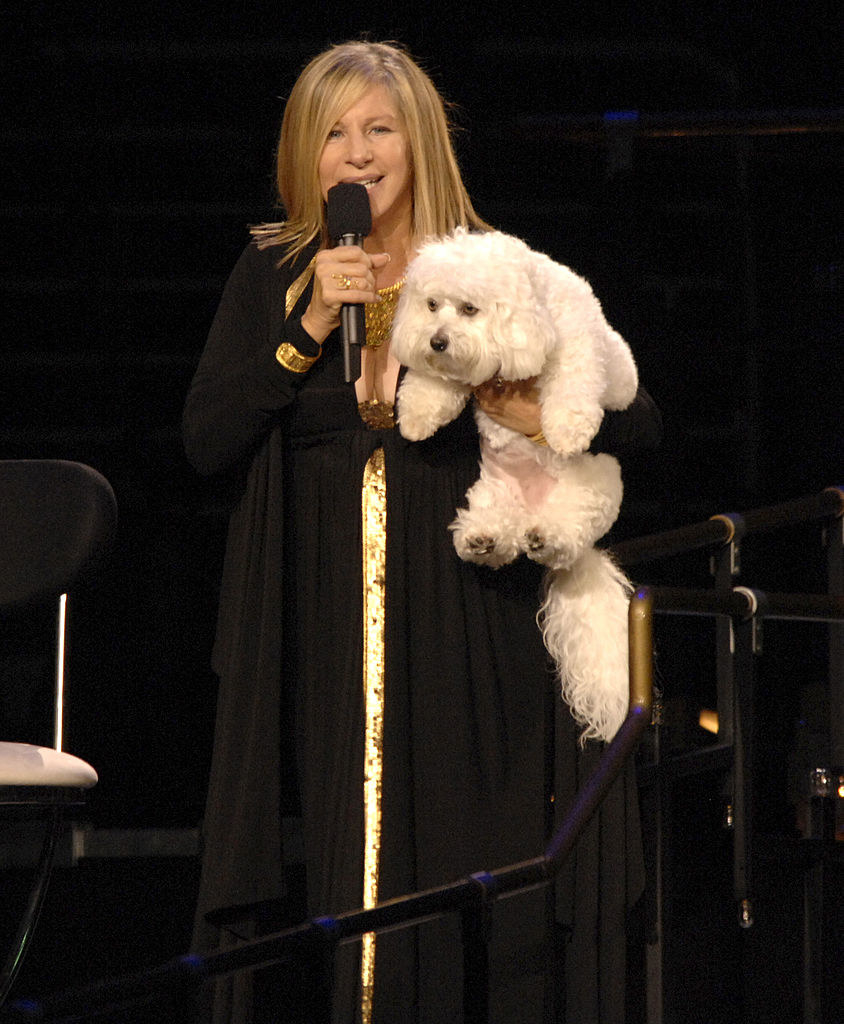
23. A Charlie Brown Christmas might have singlehandedly changed the artificial Christmas tree industry. Fake trees first rose to prominence in the late 1880s, when German companies began selling wire trees with goose feathers on the branches. By the late 1930s, some companies were attempting to develop metallic trees, with a 1937 Popular Science article telling families to spray their real trees with aluminum paint. Soon, the metallic tree trend was booming. In 1955, the Modern Coatings Company secured a patent to sell aluminum trees, but their iteration cost nearly $730 in today's money. Other companies decided to try their hand at the trend, and in 1959, engineers from the Aluminum Speciality Company developed a tree covered in foil needles that could sell for $25. The trees became incredibly popular, although they were a major fire hazard.
During the tree's peak popularity, production on A Charlie Brown Christmas was underway. CBS had written the special off as a flop before it even debuted. Despite their reservations, it became a massive hit, with over 15 million people watching the premiere. The special questions the consumerism of the holiday season, and features a scene with the Peanuts characters forgoing the popular aluminum trees for a droopy and rather sad tree. From this point, manufacturers noted drops in aluminum tree sales, and instead, started to create artificial trees that closely resembled real Christmas trees, complete with green needles instead of the sparkly versions. By 1970, the Aluminum Speciality Company halted production on all aluminum trees.

24. In 1948, Tony Signorini, who lived near Florida's Clearwater Beach, pulled off a pretty hilarious years-long hoax. One morning, a beachgoer discovered massive, three-toed footprints in the sand, with tracks later appearing at other local beaches. Months later, a New York zoologist named Ivan Sanderson decided to investigate, and surmised that the prints came from a 15-foot-tall penguin. Decades later, in 1988, Signorini, who was known for being a prankster, revealed that he was behind the prints. He told local press that years before, he had seen an article in National Geographic about dinosaur footprints, and decided to make his own using massive iron feet attached to a pair of sneakers.

25. On December 8, 1980, John Lennon was murdered outside of the Dakota, his New York City apartment building, by Mark David Chapman, an obsessed fan who had been allegedly lingering outside the building all day. In fact, Lennon reportedly even signed a copy of his Double Fantasy record for Chapman earlier in the day. After Lennon was shot, he was immediately rushed to Roosevelt Hospital. Alan Weiss, a producer for a local news station, had gotten in a motorcycle accident earlier in the night, and just so happened to be waiting at the hospital on a gurney when Lennon was rushed in.
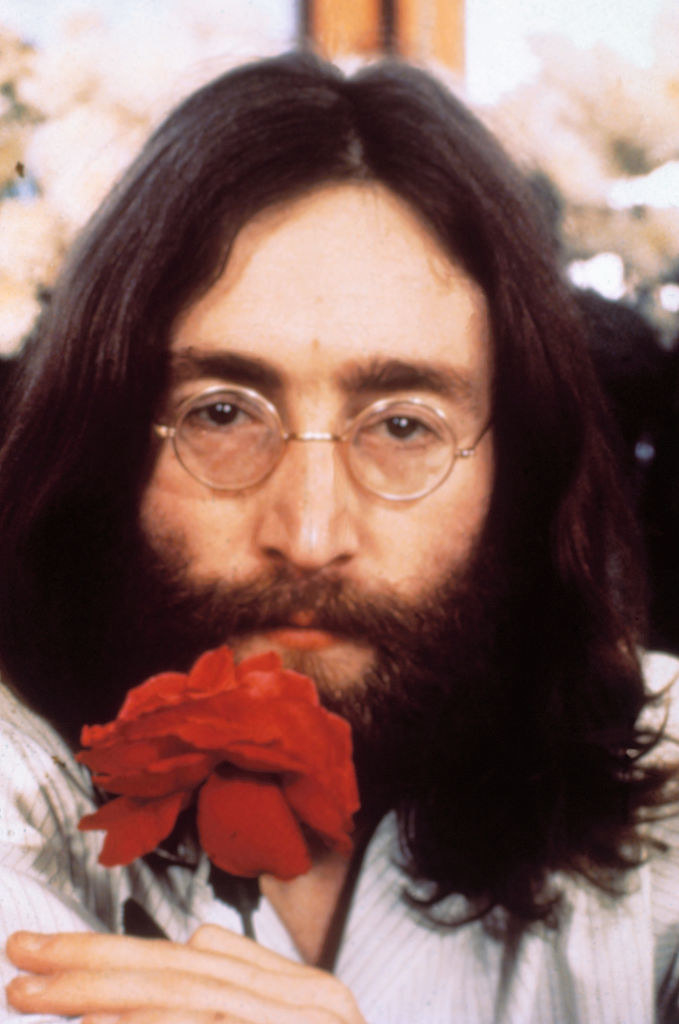
After overhearing that the patient was John Lennon, Weiss called his bosses to tell them that Lennon was dead. Around 11:50 p.m., a little after an hour from the shooting, sportscaster Howard Cosell broke the news during the Monday Night Football broadcast. Lennon's death shocked the world, as the former Beatle had been slowly re-emerging into the spotlight with new music after several years away. In the few days before his death, Lennon had given several interviews about his career. When asked his thoughts about Beatles fans in England who were allegedly unhappy about Lennon's solo success, he responded, "What they want is dead heroes, like Sid Vicious and James Dean. I’m not interested in being a dead f***king hero."
View this video on YouTube
26. It comes as no surprise to me that Dolly Parton is so talented that she can use her NAILS as an instrument. During a 2019 appearance on The Tonight Show with Jimmy Fallon, Parton revealed that a typewriter-like sound on her hit song "9 to 5" was achieved by tapping her signature acrylic nails together. "When I actually wrote this song, I used my acrylic nails on the set when I was writing it," she told Fallon. "They make noise that kind of sounds like a typewriter." Parton added that the nails even received credit for their performance. "It says Nails by Dolly on the album!"

27. Maybe I'm biased because I wholeheartedly believe that Home Alone is the greatest Christmas movie of all time, but the behind the scenes details from the making of the film are pretty fascinating! John Hughes, who was famous for writing movies like The Breakfast Club and Ferris Bueller's Day Off in record time, got the idea for the script during a family vacation. "I was going away on vacation, and making a list of everything I didn't want to forget," he told Time. "I thought, 'Well, I'd better not forget my kids.' Then, I thought, 'What if I left my 10-year-old son at home? What would he do?'" He ended up writing the script in just nine days.
Although the writing process appeared to be smooth sailing, production was a bit rockier. The movie's rights originally belonged to Warner Brothers. Budgetary disputes during pre-production actually almost led to the cancelation of the project! Hughes said that production costs reportedly totaled about $14.7 million, while Warner Brothers refused to pay more than $14 million for the project. Luckily, 20th Century Fox stepped in and purchased the rights to the script, allowing filming to proceed as scheduled.
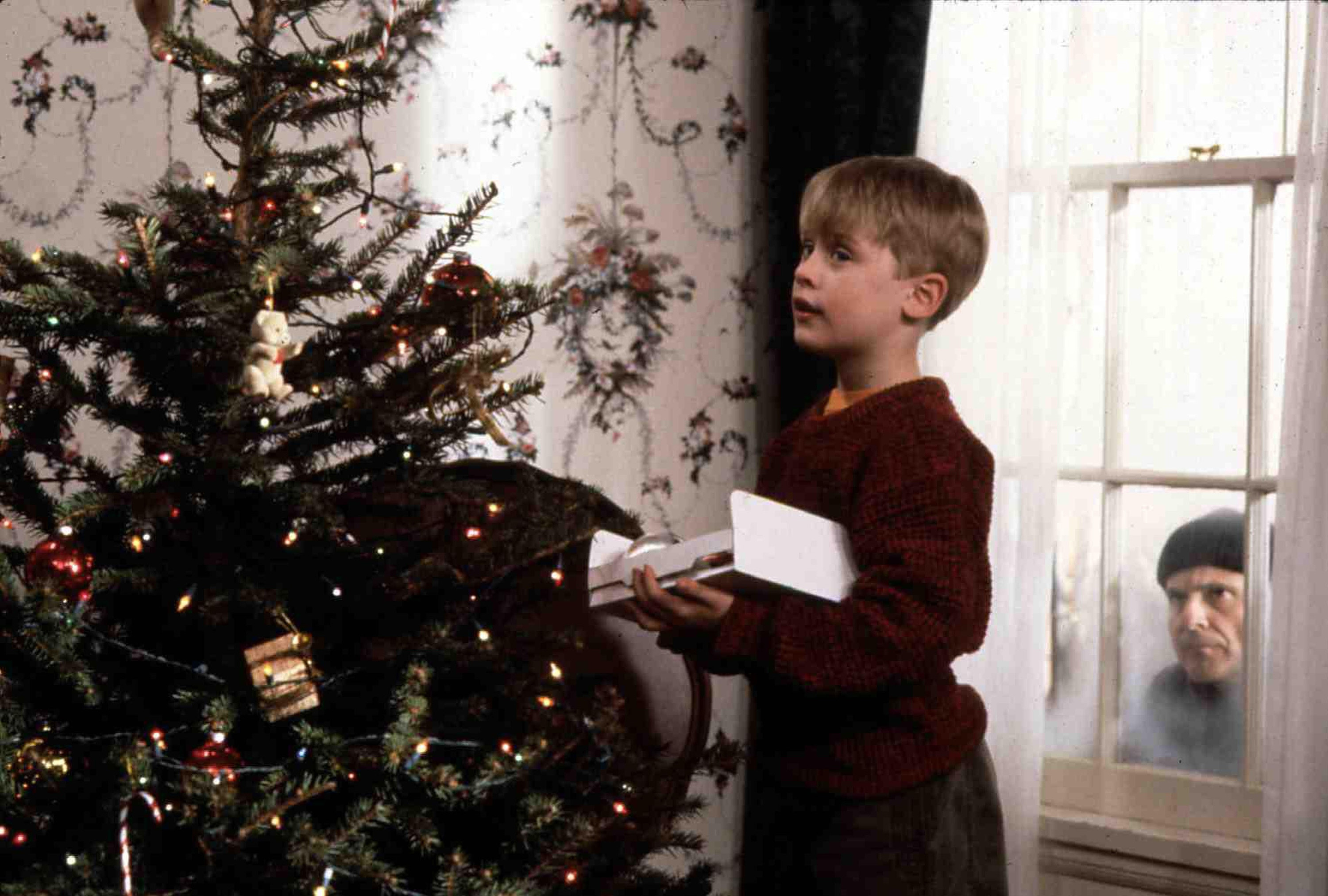
During filming, Joe Pesci allegedly tried to stay as far as possible from Macaulay Culkin on set so that Culkin would actually be scared of him. Culkin revealed that Pesci took method acting very seriously. "In the first Home Alone, they hung me up on a coat hook, and Pesci says, ‘I’m gonna bite all your fingers off, one at a time,'" Culkin said. "And during one of the rehearsals, he bit me, and it broke the skin." Home Alone went on to become the highest-grossing film of 1990, and remained in the top 10 films until June 1991. It even earned a Guinness World Record for the highest-grossing live-action comedy. Home Alone held the record for 25 years until it was beat out by Never Say Die, a Chinese comedy.
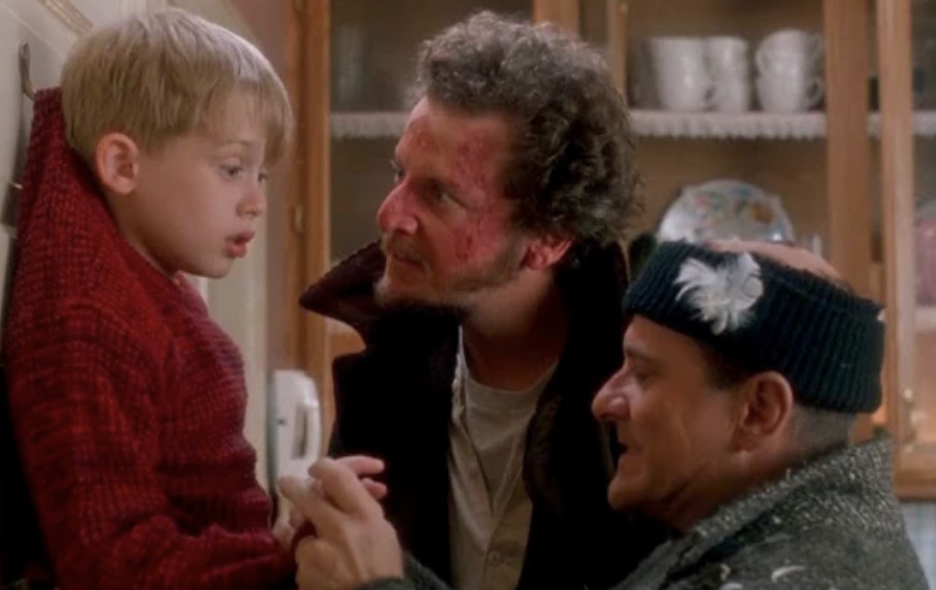
28. Back in the 1980s, Steve Martin reportedly would hand out business cards reading: “This certifies that you have had a personal encounter with me and you found me warm, polite, intelligent, and funny," to autograph seekers as a quick way to acknowledge fans. Honestly, it's a pretty smart idea! Some of the cards even appear available to purchase on eBay. In the years since, actor Jonah Hill has adopted a similar method, although his card allegedly reads, "I just met Jonah Hill…and it was a total letdown."
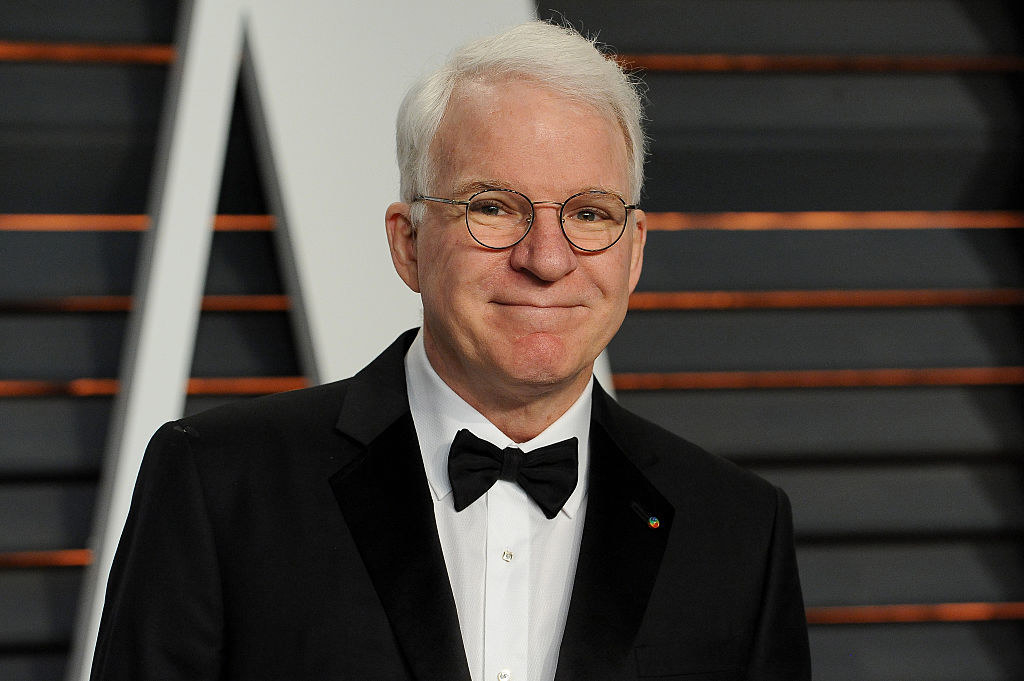
29. Before heading to the moon in 1969, NASA faced a major challenge in developing a spacesuit that was inflated, pressurized, tough enough to withstand vast temperature ranges, and flexible. Many defense contractors entered bids to design the spacesuits that would make it to the moon, until one unlikely competitor ended up with the job. Playtex, famous for manufacturing bras and shapewear, ended up winning the contract to develop the spacesuits. They were eventually named a subcontractor to Hamilton Standard, which was a leading defense contractor.
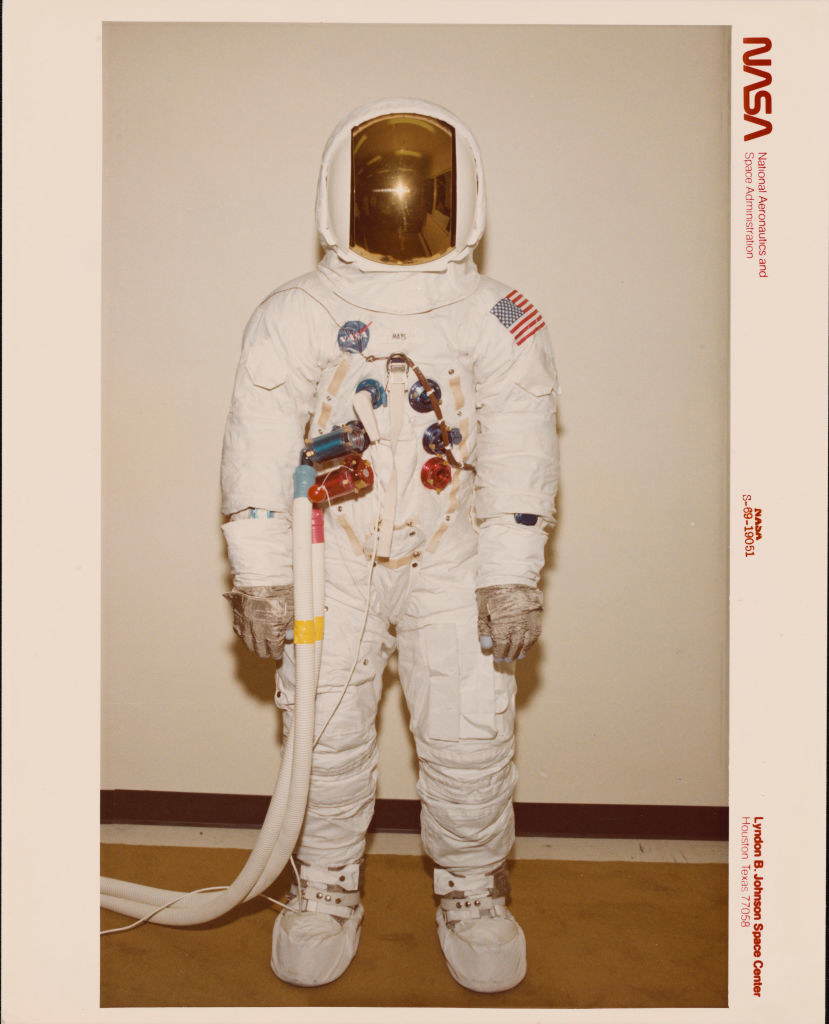
In 1965, Hamilton Standard decided to remove Playtex from the project because they allegedly wanted to design the spacesuits on their own. After Playtex's firing, NASA decided to hold a competition to once and for all decide who would be developing the spacesuit. The issue? They didn't invite Playtex. Company officials headed to NASA's Houston headquarters and asked for a shot at entering the competition. In just six weeks, Playtex developed their version of the spacesuit, complete with 21 layers that allowed astronauts to complete their essential functions. Their suit went head-to-head with those developed by the major defense contractors, and ended up beating them all out.
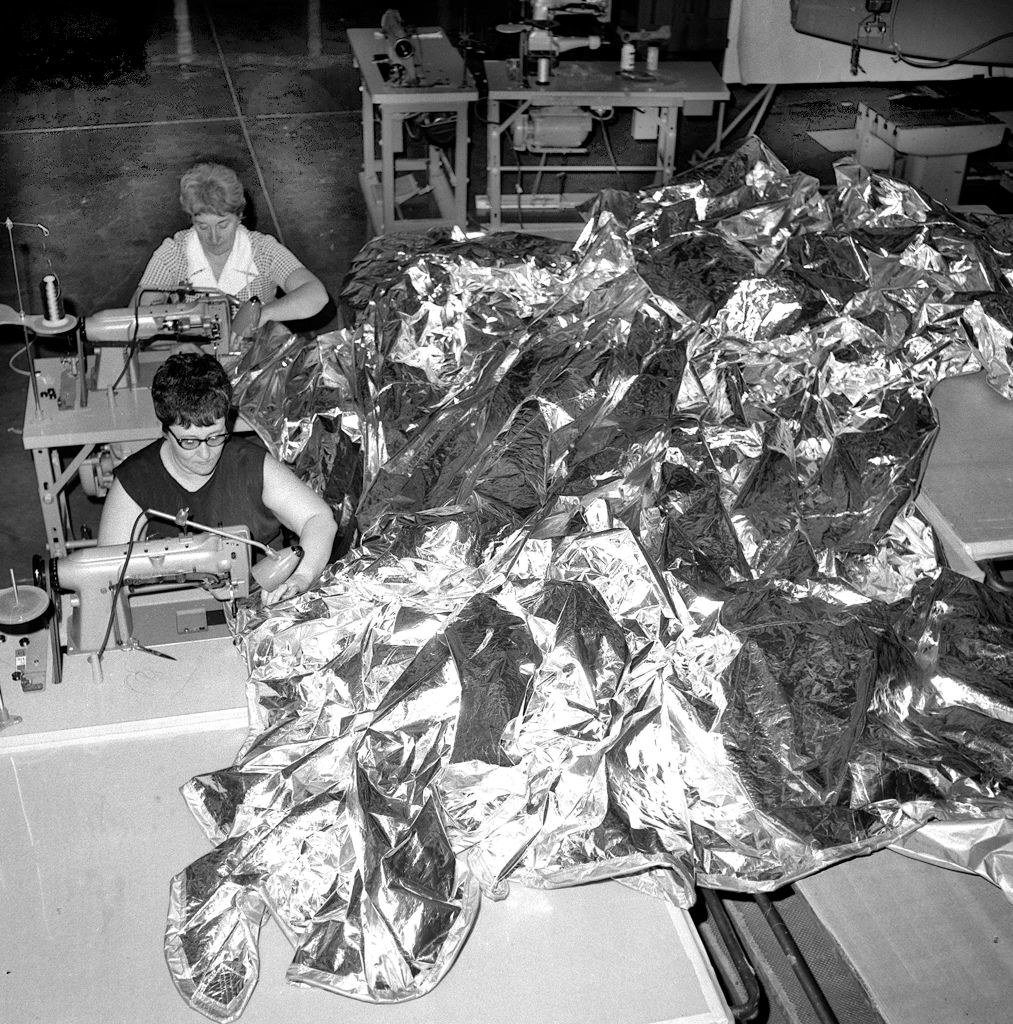
To further demonstrate the quality of their spacesuit, Playtex sent a technician out to play football while wearing the suit, which was inflated by attached air hoses. He was able to play for hours, thus proving that Playtex's design could withstand intense physical activity. They won the bid, and got to work producing spacesuits that were specifically tailored to each astronaut. Some of the layers were made of the same materials Playtex used to manufacture their bras. On the 25th anniversary of the moon landing, astronaut Neil Armstrong called the suits "tough, reliable, [and] almost cuddly," and said it was "true beauty" that they worked so well.
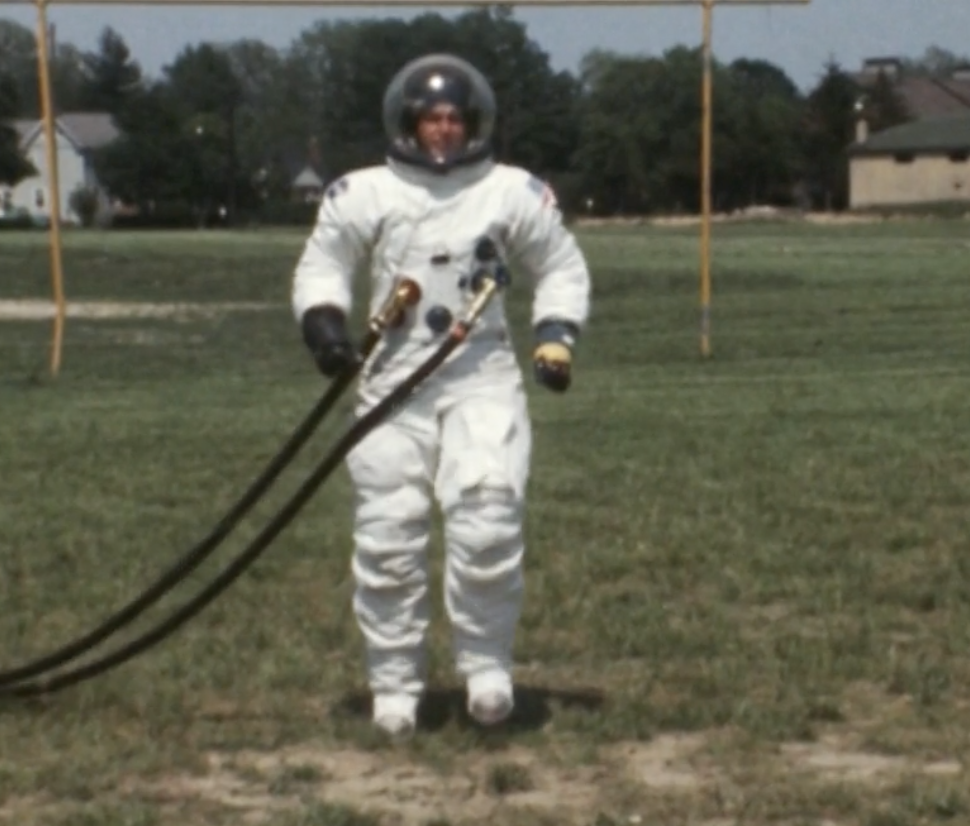
30. Ever wondered why saffron is so expensive? It's all in the harvesting. Only a tiny portion of the saffron flower is used in cultivating the spice. It must be harvested by hand, meaning it takes a long time to accumulate. In fact, it's estimated that it takes about 75,000 saffron flowers to make one pound of saffron spice!

31. When Princess Diana was killed in 1997, Elton John was tapped to perform a song for her funeral. John asked his longtime songwriting partner, Bernie Taupin, to write a song similar to his 1973 hit "Candle in the Wind," which was written about Marilyn Monroe's death. In 2014, Taupin told Rolling Stone that he had been a huge Monroe fan and wanted to write a song that explained that "the reason she was so popular, was that she was very much somebody people could fall in love with without her being out of reach." The term "candle in the wind" actually came from Clive Davis, who used the phrase to describe singer Janis Joplin after her death in 1970.
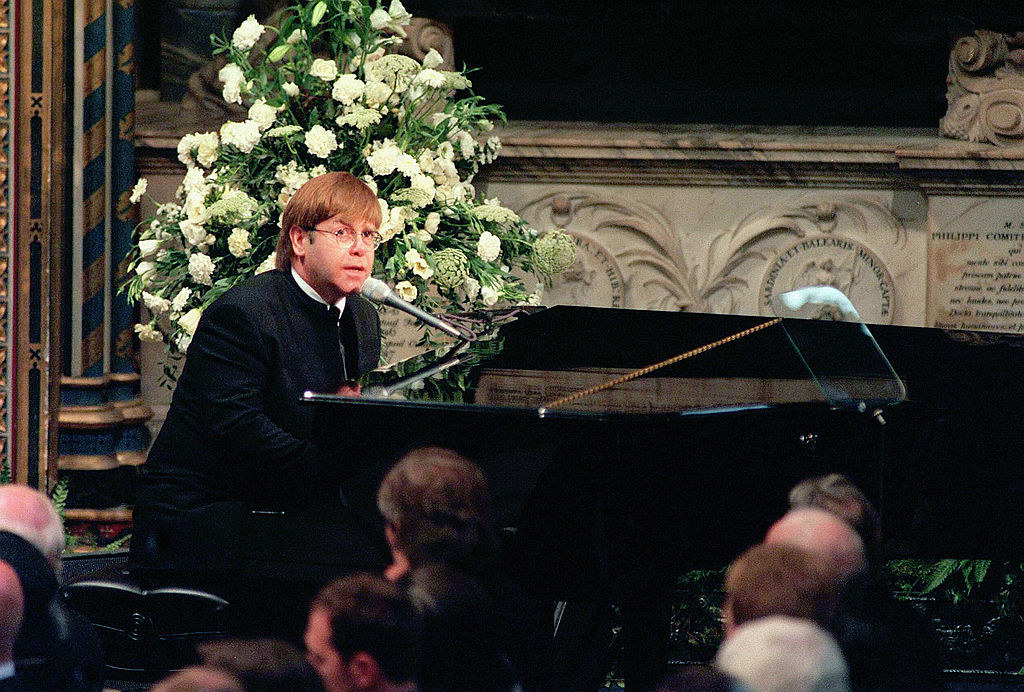
The exact story of what happened is a tad unclear. Taupin said he misunderstood John's request, and ended up tweaking the original "Candle in the Wind" lyrics to reflect details about Diana's life instead of penning an entirely new track. Meanwhile, in Me, John's memoir, he revealed that Richard Branson had asked him to create a new version of "Candle in the Wind" on behalf of Diana's family. "Candle in the Wind" was reportedly one of her favorite songs. Regardless of how it all went down, John performed the new version, dubbed "Candle in the Wind '97" at Diana's funeral.

The song immediately became a smash hit. In fact, it remains one of the biggest selling songs of all time! "Candle in the Wind '97" ended up selling 33 million copies, was the only song to ever be certified Diamond in the United States, and remained on the charts in Canada for three years. In the wake of Diana's death, news footage showed people lining up outside of record stores in London to secure their own copy of the song. Despite the success, John said he will only play the song at the request of William and Harry, Diana's children. It has not appeared on any of John's albums, and was only released as a single. In his memoir, John wrote that he thought the song's continued success was confusing. "It almost felt like wallowing in her death, as if the mourning for her had got out of hand," he wrote.
View this video on YouTube
32. Churchill, a town in Manitoba in Canada, is often called the polar bear capital of the world. As a result, town officials have developed several strategies to keep citizens safe, should they have a run-in with a polar bear. In 2000, the town closed their open-air dump to prevent curious bears from coming into town to scope out scraps and food. Many citizens leave their doors unlocked so that anyone who comes face-to-face with a polar bear can run inside for protection. The town is even testing out military radar that can detect polar bears, so they can issue those in the bear's path with proper safety warnings, and use tactics like loud noises and strobe lights to deter the creatures.

33. President Harry Truman and his wife, Bess, might have one of the sweetest presidential love stories I've ever heard. Harry first met Bess Wallace during Sunday school at the First Presbyterian Church in Independence, Missouri in 1890, when he was 6 years old and she was 5. For years, Harry would frequently talk about the "beautiful curly haired girl...the most beautiful girl I ever saw." Harry allegedly said that he was never attracted to any other woman and never went on any dates because he was so infatuated by Bess.
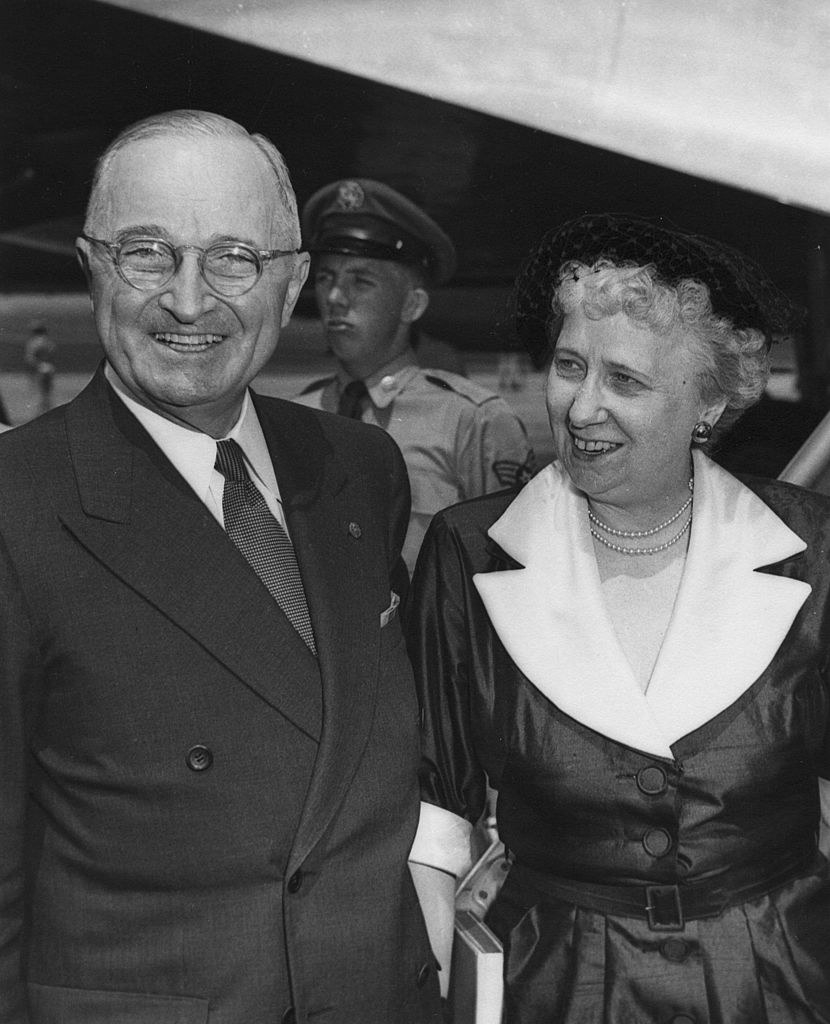
It wasn't quite love at first sight for Bess. Through high school, Bess reportedly would let Harry walk her home from school, which he saw as an encouraging sign. "I was lucky if I got to carry her books home for her sometimes," he said. Soon, Harry and Bess were separated. Bess's father died by suicide, so her mother moved them away from their Missouri home. Meanwhile, Harry's family fell on financial hard times, so he headed to Kansas City to find work. In 1906, Harry moved back to Missouri, right around the time when Bess also moved back to live with her grandparents. In a twist of fate, Harry's aunt just so happened to live across the street from the home Bess shared with her grandparents. In the fall of 1910, Bess's mother sent a cake over to Harry's aunt. Harry saw this as an opportunity to see Bess, and volunteered to return the cake plate.
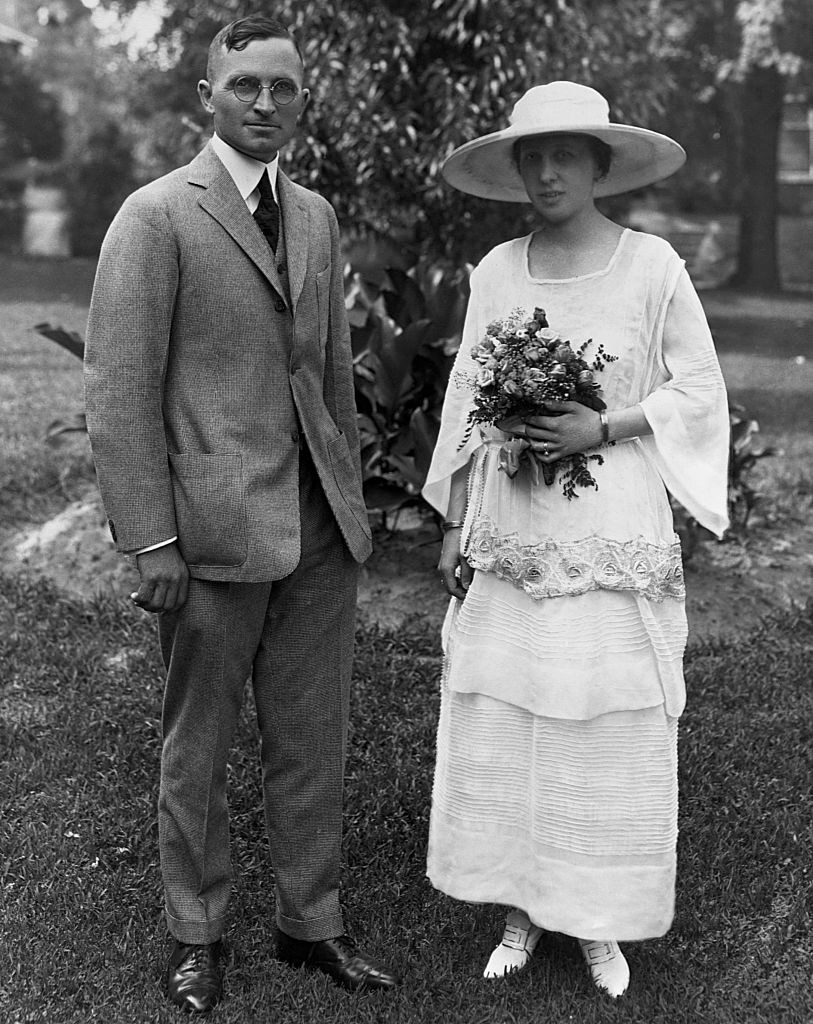
By December 1910, the pair began exchanging letters, and Harry frequently took Bess on outings. In April 1911, Harry broke his leg, leaving him unable to travel to see Bess. Unsure of what to do, Harry decided to propose to Bess via letter. "You may not have guessed it, but I've been crazy about you ever since we went to Sunday school together," he wrote. "But I never had the nerve to think you'd even look at me. ... I can't keep from telling you what I think of you." After thinking it over for several days, Bess turned him down, but they remained friends. In November 1913, Bess told Harry that her feelings had changed, and she was in love with him. They married in 1919, and were together for over 60 years.
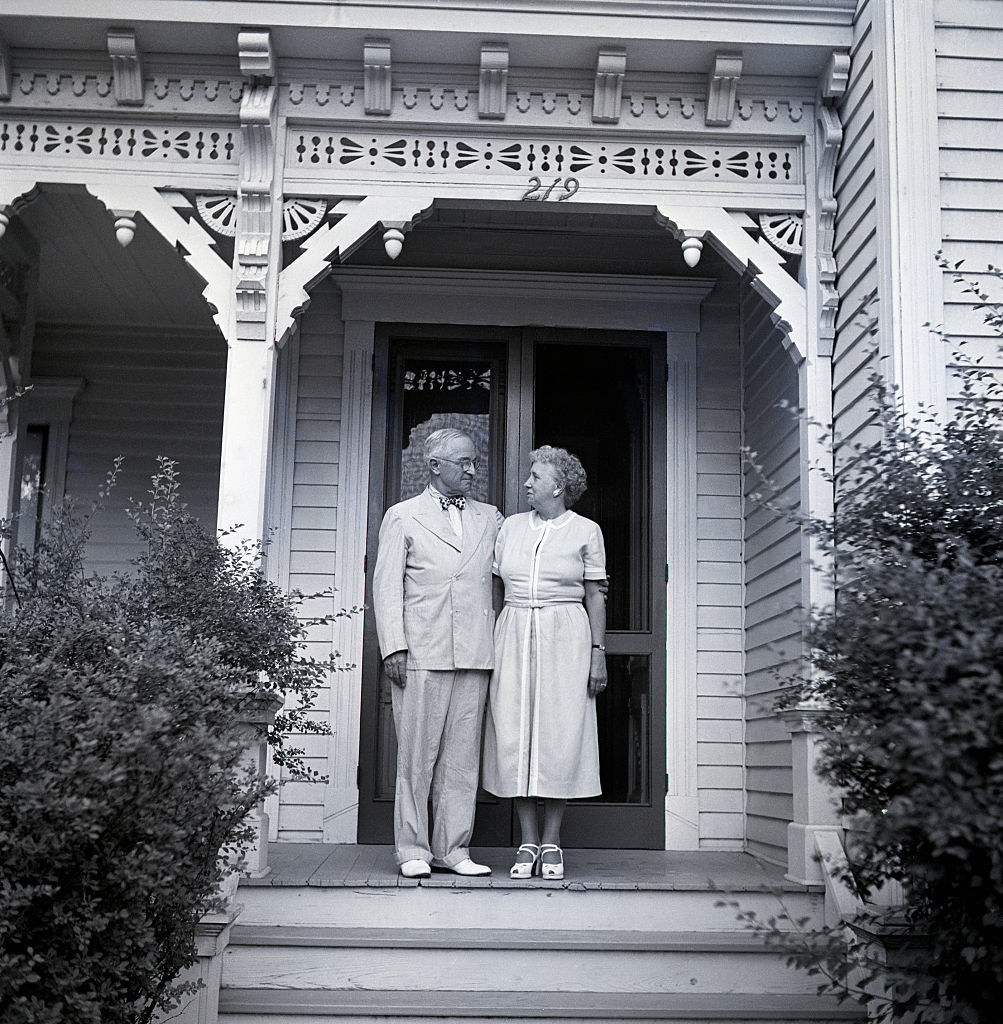
34. Adventurous eaters, this one's for you! There's a possibility that some of the food left on board the Titanic was still edible through the 1980s. According to Holger W. Jannasch, a biologist, there was likely some lingering brie and wine in the ship's pantries after it sunk in 1912. In 1985, Jannasch revealed that as long as the brie was boxed, it would probably still be okay to eat, as the conditions under the sea halted the cheese's degradation process. He added that any wine "may still be drinkable and possibly of excellent quality, the normal aging process being slowed down during the [then 73] years of deep-sea storage at about 36°F."
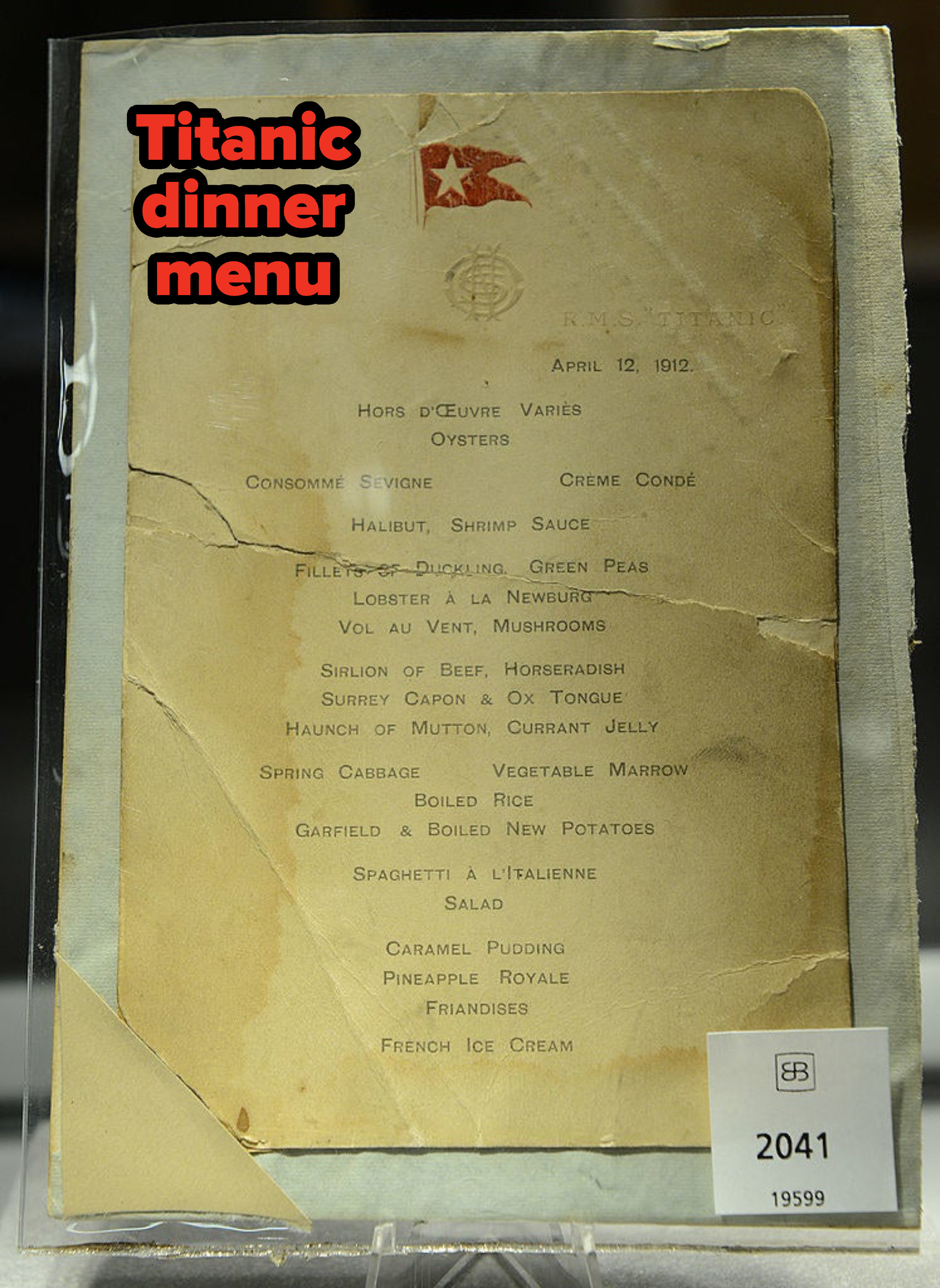
35. While there's no question that Wham!'s "Last Christmas" is a certified Christmas classic, it took the song 36 years to reach No. 1 on the British charts. When the song was released in 1984, it hit No. 2, and even earned the honor of being the highest-grossing UK single of all time that didn't reach No. 1. So, what song was blocking it? It was none other than Band Aid's "Do They Know It's Christmas," which Wham!'s George Michael actually appeared on.
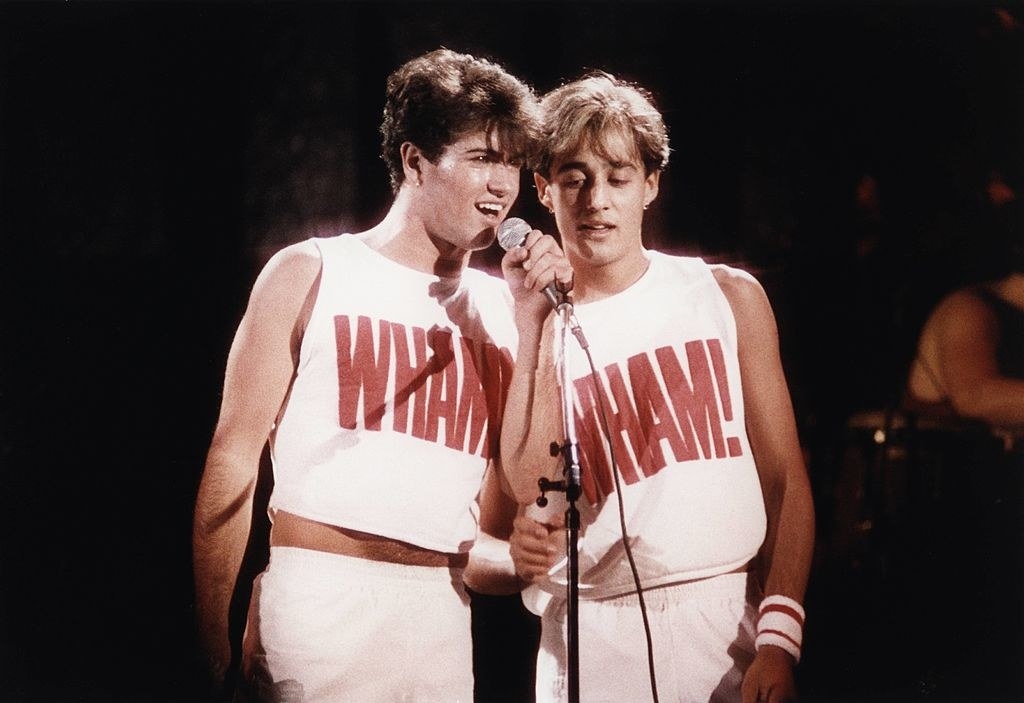
In 1984, dozens of British stars gathered to perform "Do They Know It's Christmas," with all proceeds from the song going toward Ethiopian famine relief. Michael actually ended up donating all of the profits that he earned from "Last Christmas" to the same cause. "Band Aid was great, but it was only one day out of everybody’s lives," he said in a statement. "I don’t think that’s enough. And you can’t not have a conscience about these things when you’re making a ridiculous amount of money. I tried to get the record company, CBS, to give their share, too, but they didn’t want to 'set a precedent.' But I hope some other people in the Christmas Top Ten will do the same."
View this video on YouTube
36. While it's pretty much impossible to attend a concert without seeing what feels like a million cellphones in the air, the phenomenon was first reported at a U2 concert in Chicago. The phones replaced the once-popular tradition of holding lighters in the air during performances. Soon, artists started encouraging concertgoers to hoist their phones in the air during shows. "It makes it look like the stars at night," Duran Duran frontman Simon Le Bon told the crowd at a 2005 show at Madison Square Garden. "And it makes you all look so much more beautiful."

37. In 1976, children around the world were likely devastated when Mister Rogers announced he was going on a hiatus. While Mister Rogers' Neighborhood was on pause for three years, Rogers ended up coming back from his extended break to film what would be his only holiday special. Although the 1977 special was called Christmastime with Mister Rogers, Rogers ensured he kept up his trademark theme of inclusivity by including Hanukkah songs like "I Have a Little Dreidel."
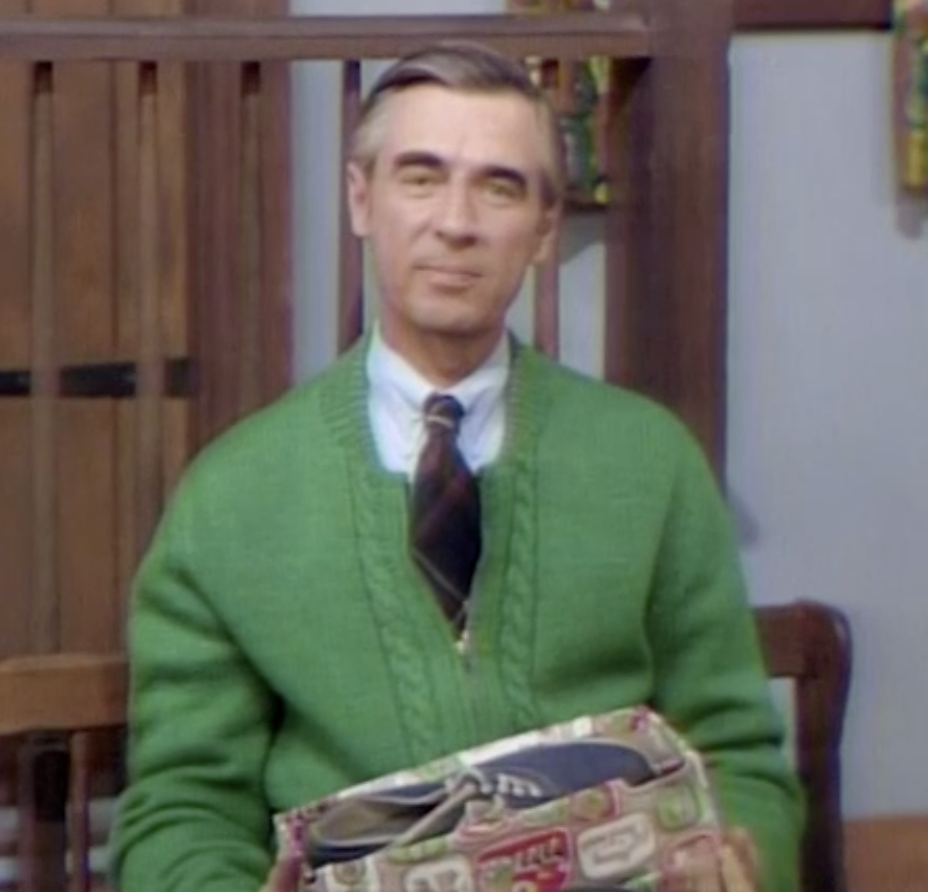
For the children who didn't celebrate Christmas or Hanukkah, Mister Rogers invented his own holiday by wishing everyone a "Merry Slopperydozafanoondapuck." While this was likely quite a mouthful for young audiences, the holiday had a sweet message, translating to "what a difference one person can make."
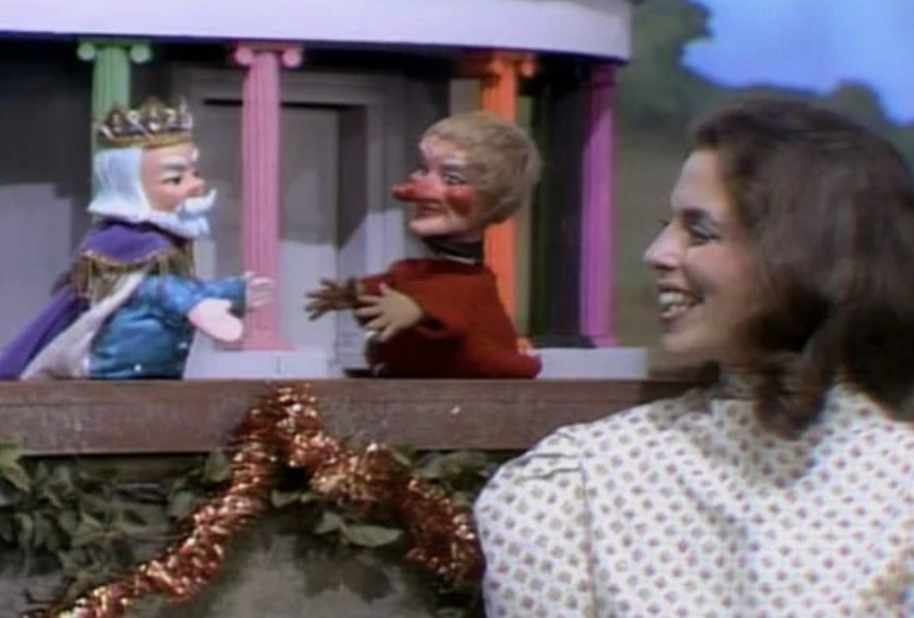
38. When Bob Barker took over the reins of The Price Is Right on September 4, 1972, his inaugural prize was a fur coat, an item he would later refuse to promote on the show. Barker, who celebrated his 99th birthday this week, later became an animal rights activist who banned many animal products from the show, including furs. Barker also called out CBS for offering trips to SeaWorld and the Calgary Stampede as part of The Price Is Right prize packages, and claims that he was snubbed from the show's 40th anniversary taping because of his comments.
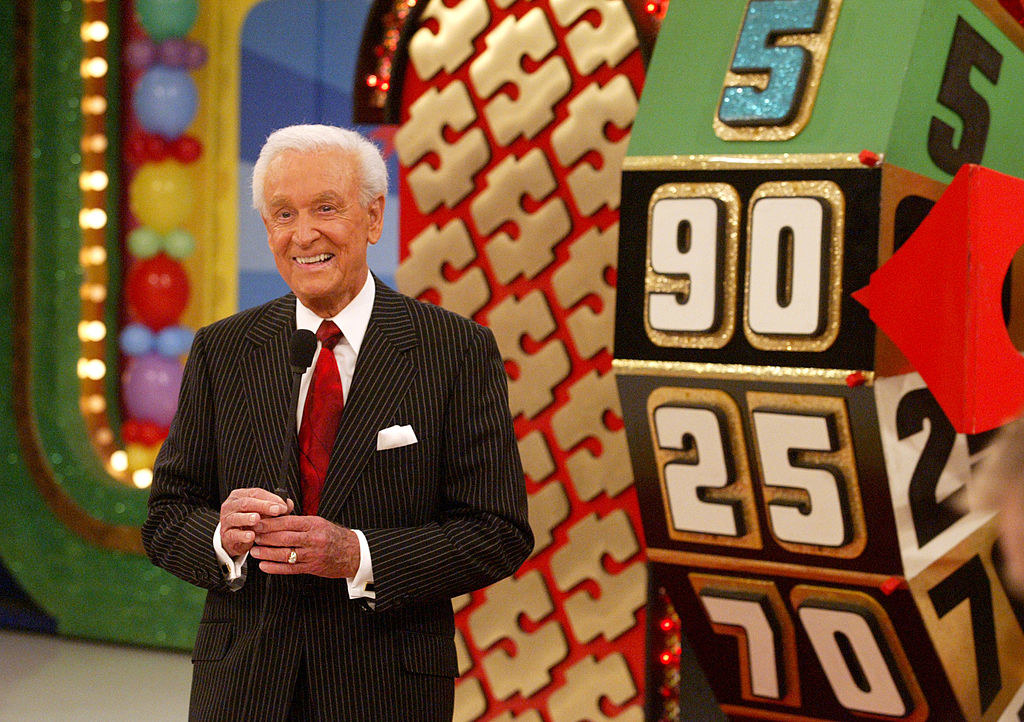
39. Chances are, if you celebrate Christmas, you grew up hearing the story of Rudolph the Red-Nosed Reindeer, singing the classic song, or watching the beloved stop-motion adaptation. Rudolph made his official debut in 1939 as a sales gimmick by Montgomery Ward, a department store. Ahead of the holiday season, the store asked copywriter Robert L. May to develop a Christmas story that they could give away to shoppers to help promote the store. The company actually thought this would be a cost-saving measure. In previous years, they had purchased coloring books from another vendor to give away, and allegedly believed that they could save money by producing their own.

The story became a huge hit. In the first year of distribution, Montgomery Ward reportedly gave away 2.4 million copies of Rudolph the Red-Nosed Reindeer. After about a decade, the store gave May the rights to the story. May's brother-in-law, Johnny Marks, decided to turn the story into a song, which was sung by Gene Autry and released in 1949. In 1960, Marks became friends with Arthur Rankin, an animator who had joined forces with Jules Bass to form Rankin/Bass, a production company that developed children's TV specials. By 1964, Rudolph the Red-Nosed Reindeer had made its TV debut, and has aired every single year since, making it the longest-running Christmas special in history.
40. Through the late 1960s, men with long hair were not allowed in Disneyland. While Disney did not officially have a dress code for guests, they did have one for employees, which stated that male employees were not permitted to have mustaches, beards, or long hair. The dress code was allegedly implemented because Disney officials associated men with facial hair or long hair with hippies, beatniks, and those who promoted "un-American activities," which they believed went against Disney's image. By the 1970s, the unofficial dress code for guests was lifted.

41. If you thought Elvis Presley deserved all of the credit for "Hound Dog," then you'd simply be incorrect. Before Presley put his own spin on the song, Big Mama Thornton, also known as Willie Mae Thornton, recorded the track in 1952, five years before Presley. Her version spent seven weeks at the top of the Billboard R&B chart, but largely lost notoriety once Presley released his cover. Thornton, who grew up in Alabama, was first introduced to music through the Baptist church. She left home in 1940 and joined Sammy Green's Hot Harlem Revue, where she was dubbed the "New Bessie Smith."
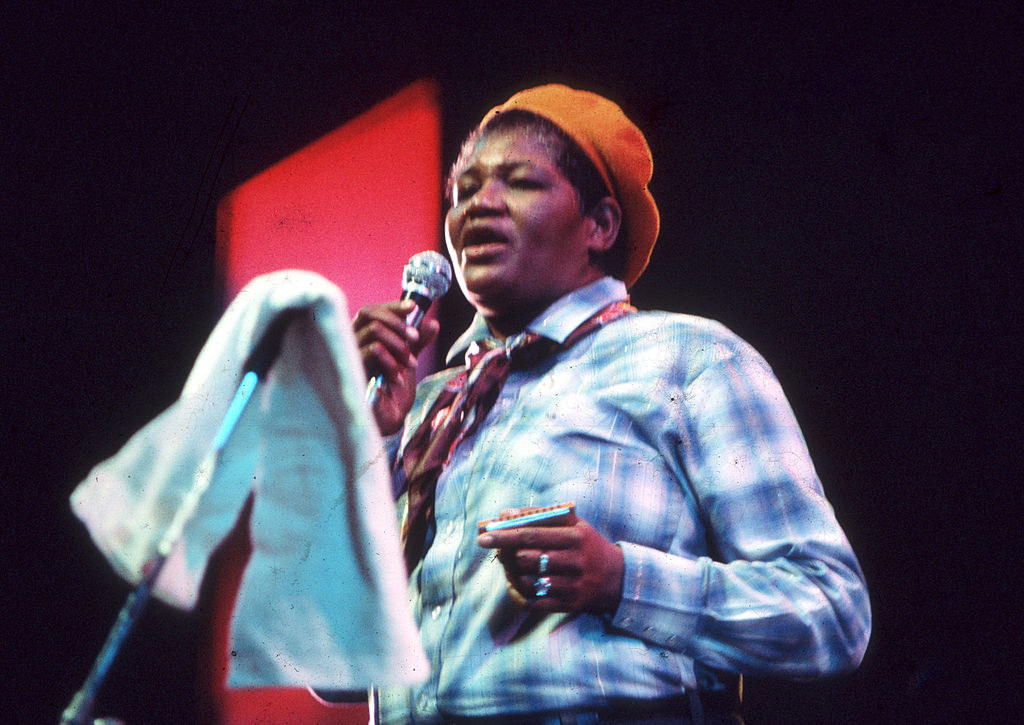
In 1948, Thornton moved to Houston and signed a recording contract with Peacock Records in 1951, where she got the opportunity to record "Hound Dog." By the 1960s, Thornton began touring through Europe, where she was one of the few female blues acts to break through. She achieved one of her lifelong dreams in 1969 when she signed a deal to record a gospel album. While the blues movement in America began to lose steam in the 1970s, Thornton continued to tour through Europe. She was inducted into the Blues Hall of Fame in 1984.
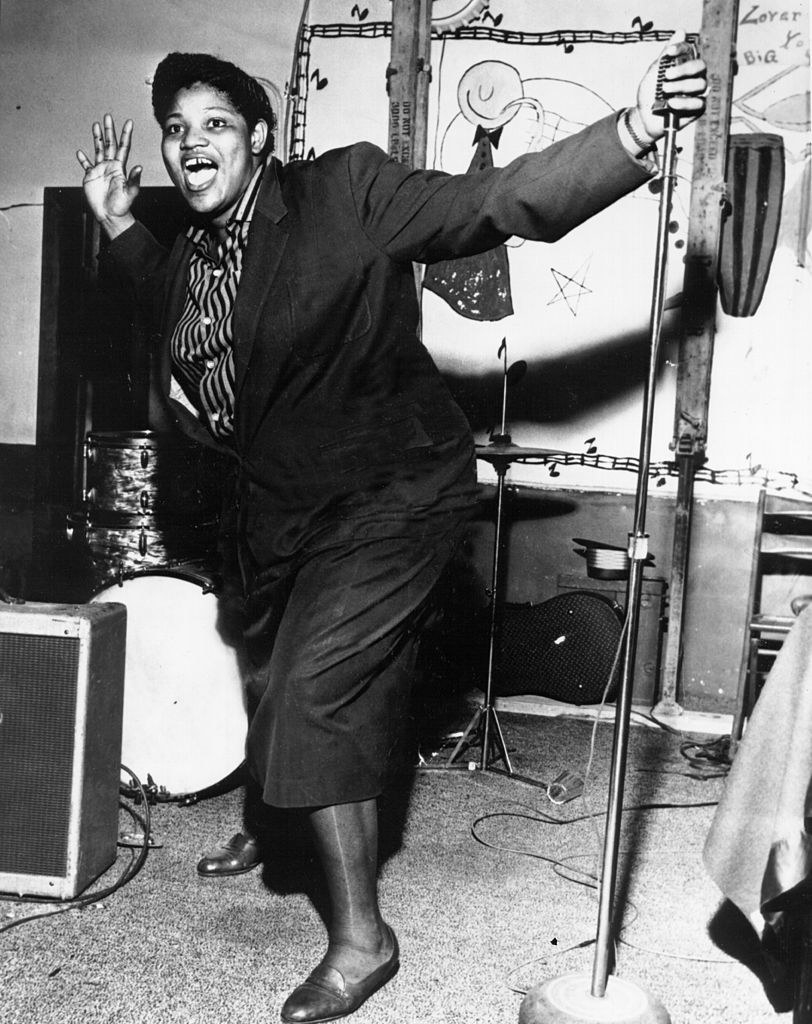
42. Titanic opened in theaters 25 years ago this week. Although the film became one of the most successful movies of all time, it was originally a huge gamble. Previous films about the tragedy hadn't been very successful, and the only other movie director James Cameron made that was set at sea was 1989's The Abyss, which ended up being a total flop. To make matters worse, the movie's budget ended up doubling from its original $110 million cost, making it the most expensive film to ever be made at the time. What's even wilder is that Titanic's alleged $220 million price tag cost even more than it did to build the actual ship! The Titanic cost about $7.5 million to make, which, adjusted to today's money, is about $200 million.
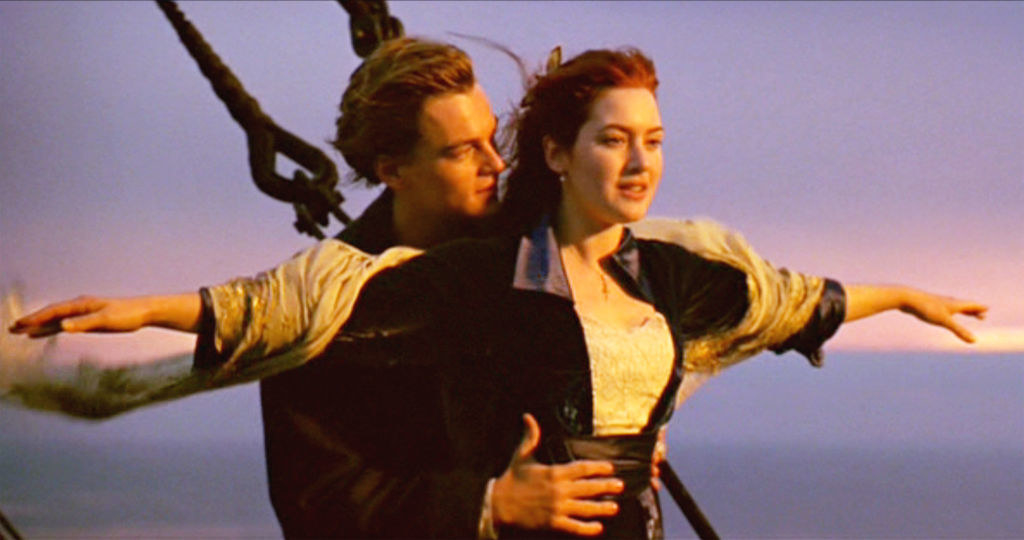
43. You've probably heard of the many conspiracies that Elvis Presley is still alive, but this one has a very interesting holiday spin! Some believe that Presley, who died in 1977, is not only alive, but can be spotted in a scene of the classic holiday hit Home Alone, which premiered in 1990. Several scenes in the film take place in an airport, as Kate McCallister tries to rush back home to Chicago, where she and her family accidentally left their young son Kevin behind. A few eagle-eyed viewers claim that Elvis can be seen in the background of one of these scenes, waiting in a long line to speak to a customer service representative and notably looking perturbed by the wait.
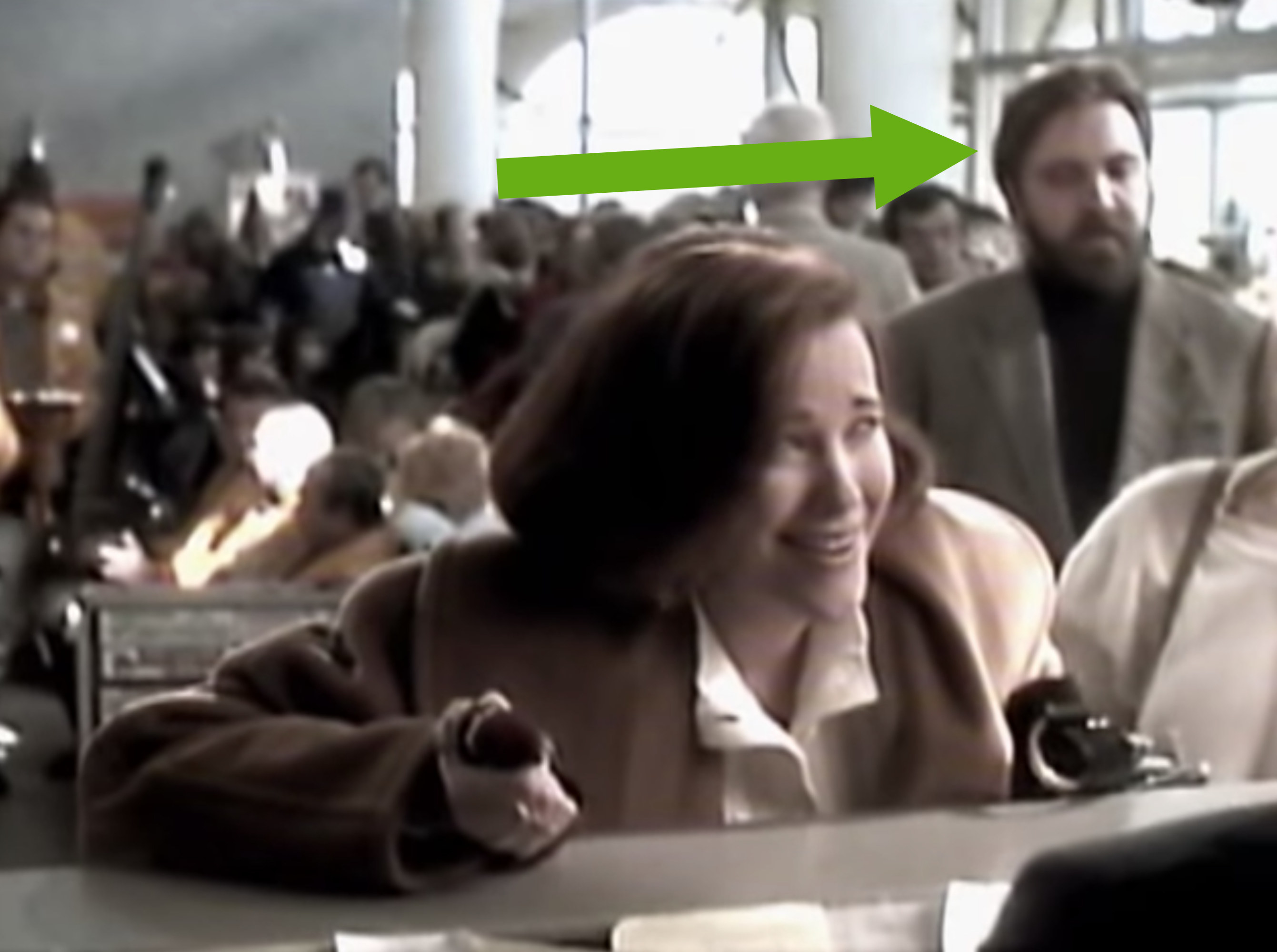
So, why are people so convinced that this is Elvis? Had Presley not died in 1977, he would have been 55 years old at the time of the movie's release, which many believe tracks with the man's appearance. Presley, who was famous for his dark pompadour, actually was a natural blonde, so some who believe this theory have assumed that he quit dyeing his hair at some point. The true kicker is that Elvis was allegedly self-conscious about his long neck, with his ex-wife Priscilla appearing to confirm the insecurity in a 1979 interview. The potential Elvis in the movie is wearing a turtleneck, leading people to wonder if the actor chose to sport that particular style to cover up his neck during his alleged appearance.
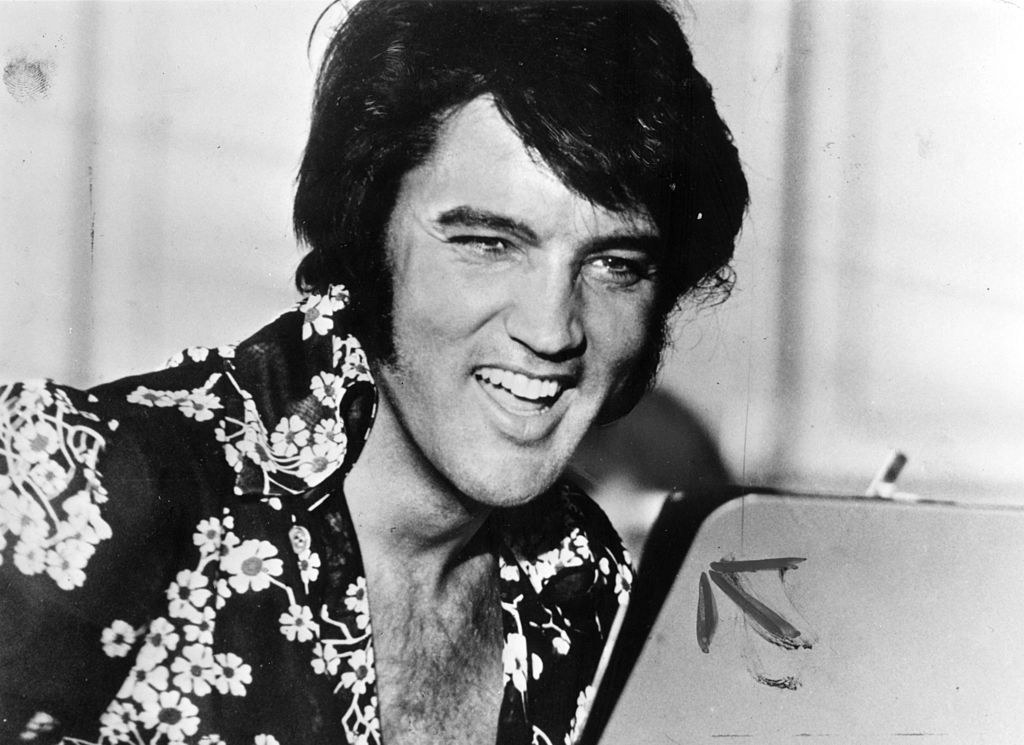
Some hardcore believers have even compiled videos comparing the actor's blink-and-you'll-miss-it mannerisms to video footage of Presley. This theory has seemingly been debunked by none other than Home Alone director Chris Columbus and child star Macaulay Culkin in a director's commentary clip. While watching the scene, Columbus brings up the theory to Culkin. "They are convinced, these people, that this is Elvis Presley," he said. "That he's faked his death, and because he still loves show business, he's an extra in Home Alone." Both Columbus and Culkin shared a big laugh over the theory. "Look at this guy, he's not Elvis Presley!"
44. If you were planning to kiss someone under the mistletoe this holiday season, you might wanna rethink that choice! Mistletoe is actually a parasitic plant that attacks and can eventually kill trees by slowly weakening them. According to an ancient Celtic ceremony, mistletoe was used to create an elixir to cure infertility, which historians believe laid the groundwork for the plant to become associated with holiday romance. The plant first appeared in pop culture in 1820 when it was featured in one of Washington Irving's holiday stories (don't worry, we'll learn all about him later!). And as for the name mistletoe? It roughly translates to "bird dung," which isn't quite the holly jolly name I was envisioning.
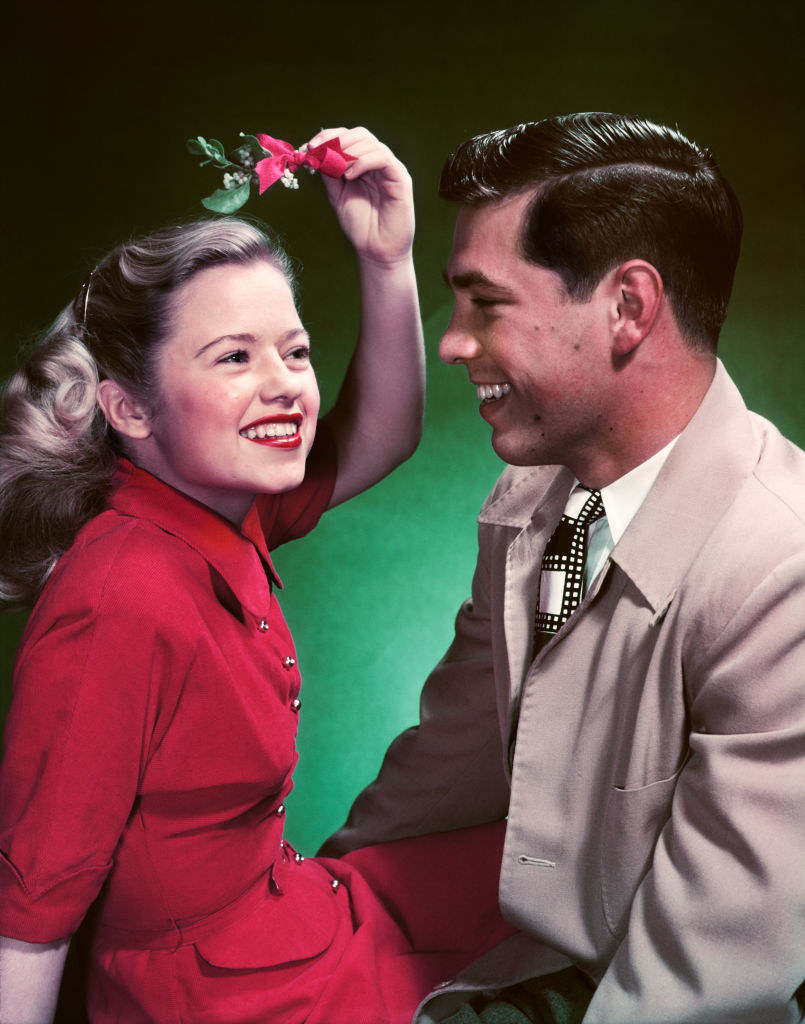
45. After Princess Diana and King Charles III separated in 1992, Diana allegedly removed Chanel from her fashion rotation because their double-C logo reportedly reminded her of Charles and his girlfriend, Camilla Parker Bowles. In 1996, designer Jayson Brunsdon said he was helping to dress Diana for an appearance and suggested that she wear a pair of shoes featuring the classic Chanel logo. "I found a pair of Chanel shoes, and I said, 'Well, these would look great with the Versace,' and she said, 'No, I can't wear linked Cs, the double C.'" he recalled. "I asked why, and she said, 'It's Camilla and Charles.'"
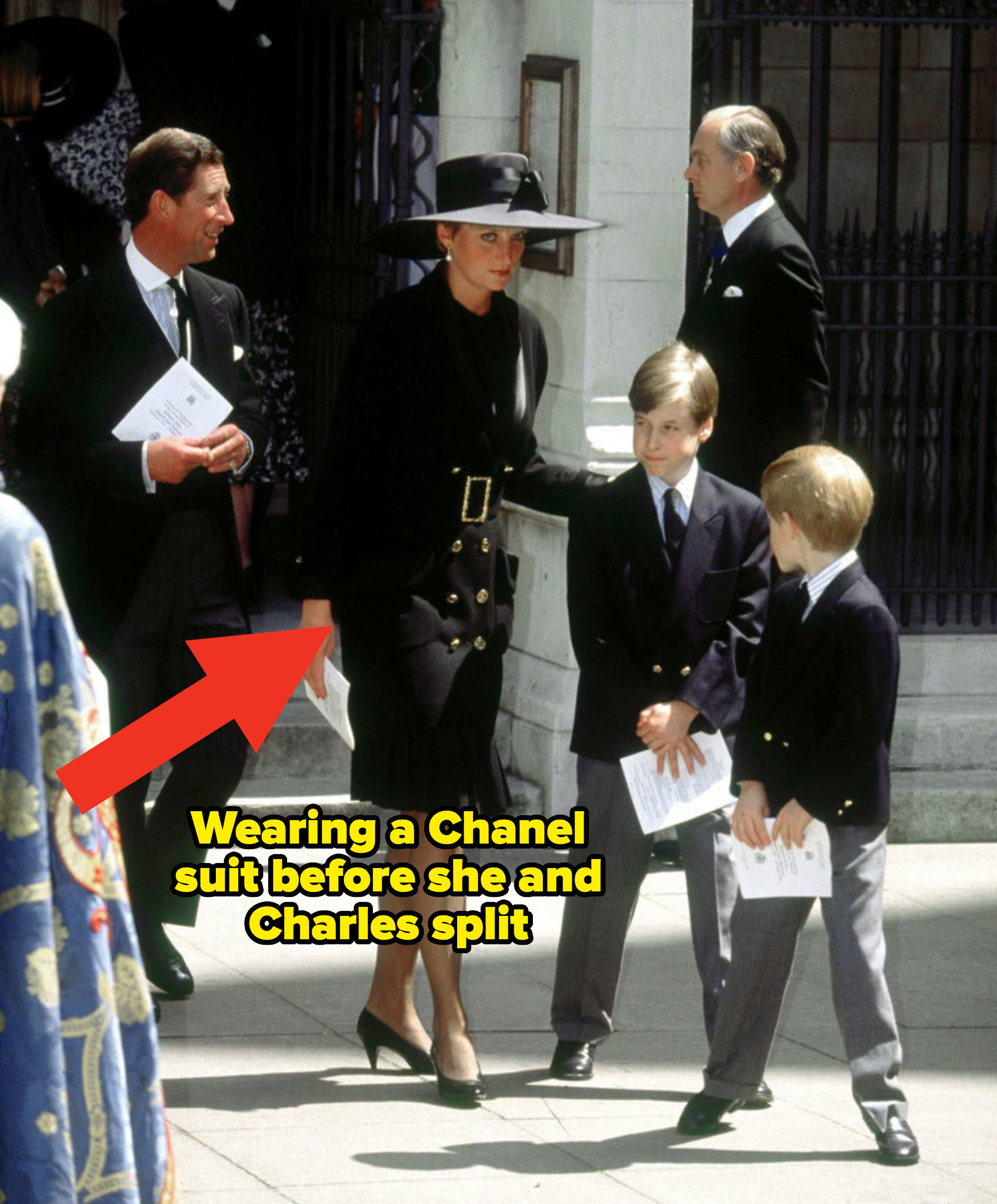
Brunsdon said that he totally understood why Diana would be hesitant to wear the shoes. "The shoes were quite boldly Chanel; I think they had gold linked Cs on them," he said. "And I think for photo optics, people would have honed in on that considering it was so fresh after the divorce as well." Just a year before, Diana made her own public comments about Charles and Camilla's relationship in her famous Panorama interview. "There were three of us in this marriage, so it was a bit crowded," she revealed.
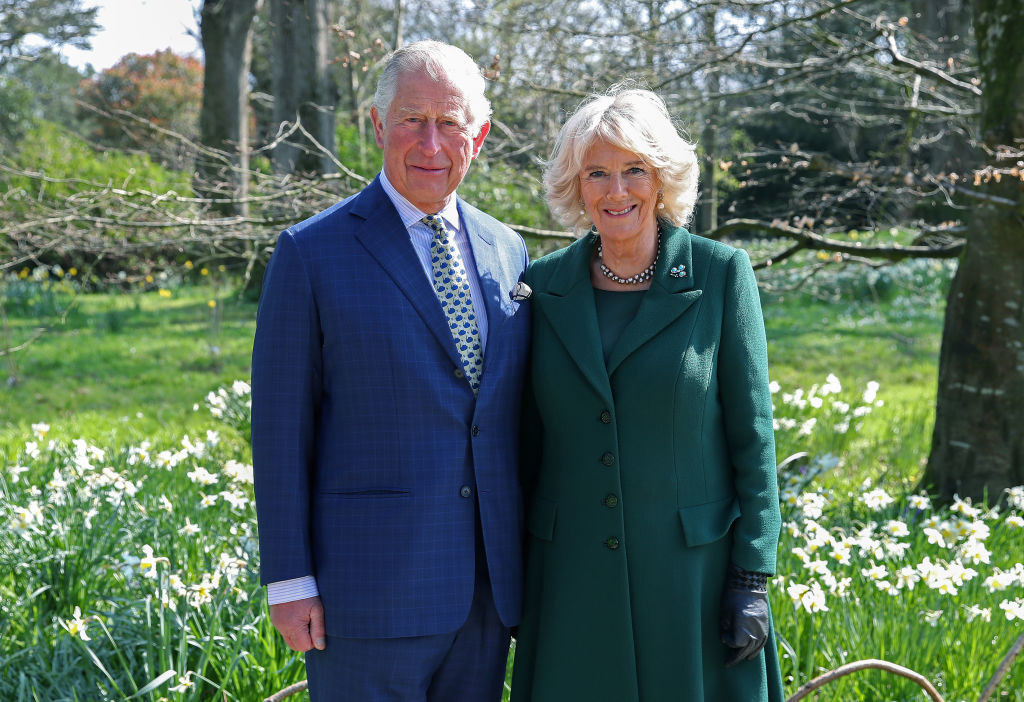
46. While you've probably learned about the way penguins regurgitate their food into their baby's mouth, did you know that penguins' stomachs also act as refrigerators for food for their young? When penguins catch prey, they sometimes swallow it whole and store it inside their stomachs. Once inside the stomach, the food remains at body temperature. Enzymes prevent the penguin from digesting the food until it's ready to eat.
47. Jimmy Boyd's classic song "I Saw Mommy Kissing Santa Claus" was initially condemned by the Catholic Church in Boston when it came out. The song actually was created by Saks Fifth Avenue, after the department store released a postcard featuring a man dressed as Santa Claus kissing a woman while holding a confused child. They commissioned the song to accompany the card, and in 1952, 13-year-old Jimmy Boyd recorded the track, which became a rousing success and quickly reached No. 1.
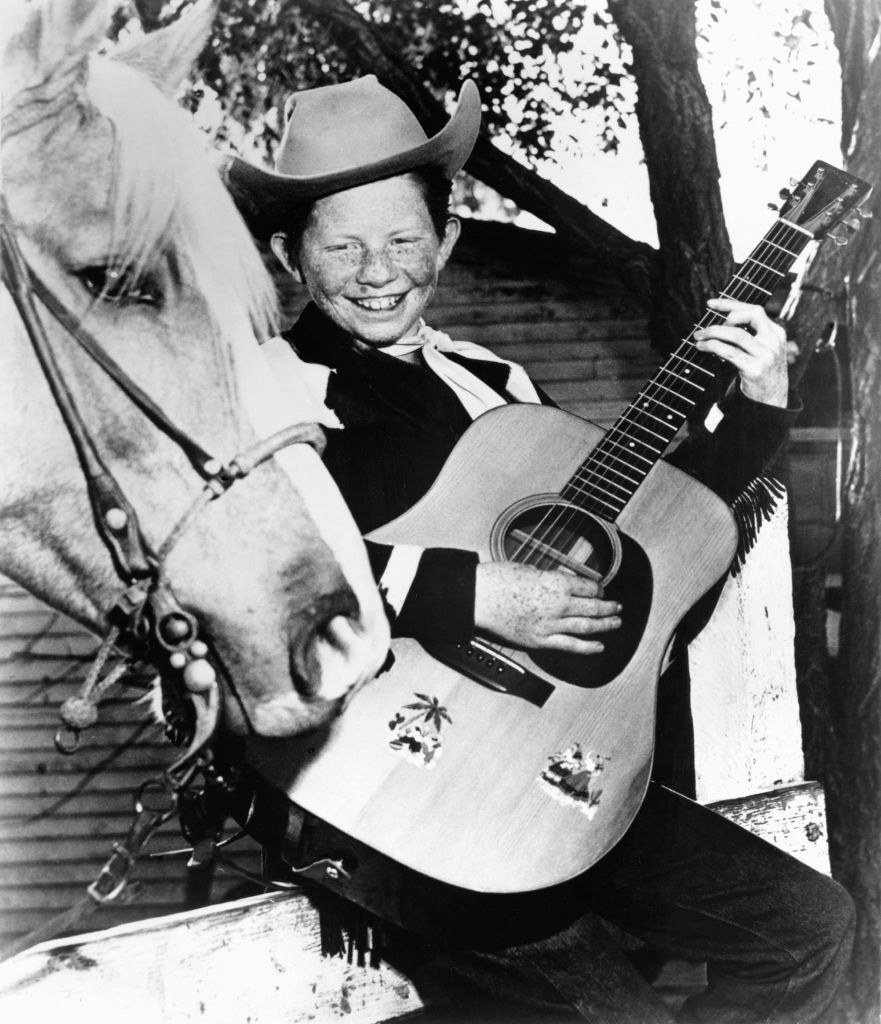
Despite the song's evident popularity, not everyone was feeling the love. Upon hearing the song, the Catholic Archdiocese in Boston condemned it because it implied "even a tenuous link between sex and the religious holiday." The church's outrage was reportedly so influential that several radio stations even took the song out of their rotations. In order to get the song reinstated, Boyd actually met with a group of priests and reportedly explained that the whole joke of the song was that the Santa in question was actually the child's father dressed up like Jolly Old Saint Nick, so the mother was not committing adultery. The priests must have accepted Boyd's explanation, because they supposedly changed their minds about the holiday classic.
View this video on YouTube
48. Harry Truman was the first president to celebrate Hanukkah at the White House. On May 8, 1951, Israeli Prime Minister Ben-Gurion presented Truman with a menorah as a birthday gift after Truman officially recognized the State of Israel. The menorah dated back to at least 1767, and was originally located at the Synagogue of Buergel, near Frankfurt-on-Main, Germany. The menorah had been found broken into pieces in 1913, and after being repaired, had been acquired by the Jewish Museum in New York. In 1979, Jimmy Carter held a menorah lighting ceremony, a tradition that every president since has participated in. In 2001, George W. Bush held the first White House Hanukkah party.
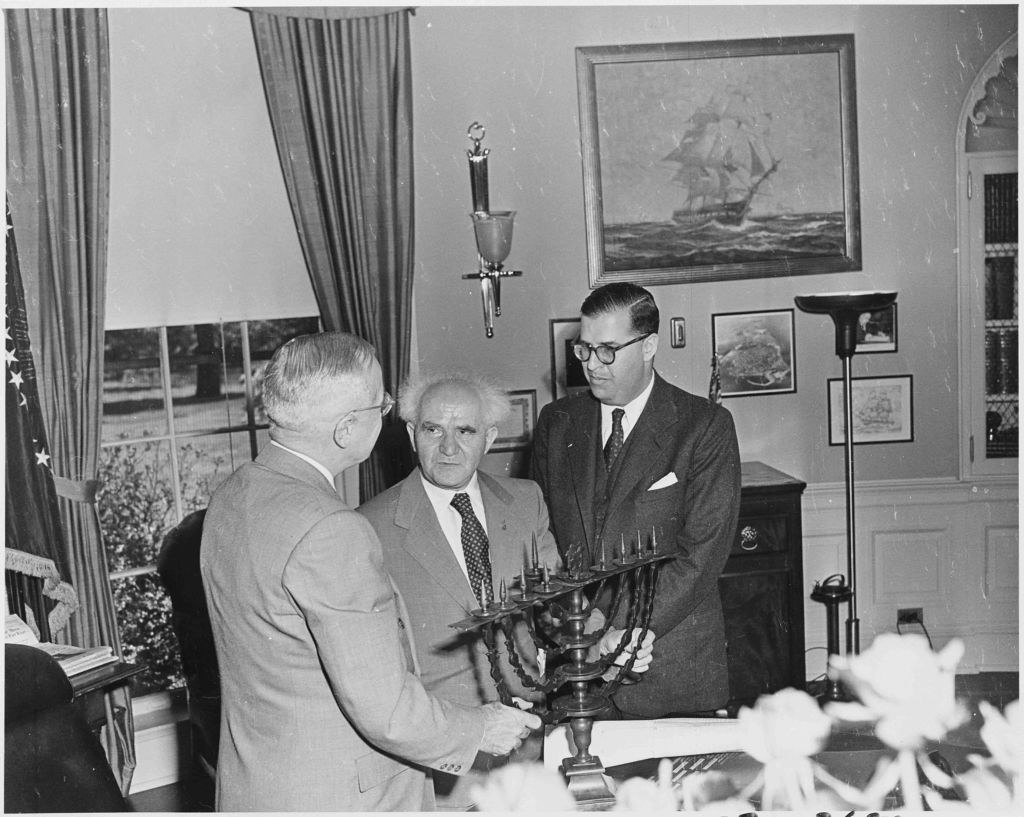
49. When the Gemini 6A launched on December 15, 1965, astronauts Tom Stafford and Wally Schirra decided to celebrate the flight with a rendition of a holiday favorite: "Jingle Bells." Just before the spacecraft was due to re-enter Earth's atmosphere, Stafford made an announcement over the radio, saying, "We have an object, looks like a satellite going from north to south, probably in polar orbit...very low, looks like he might be going to re-enter soon...Standby one, you might just let me try to pick up that thing." Much to the surprise of those on the other end, Stafford began jingling a set of bells he smuggled aboard, while Schirra played the harmonica for a rousing rendition of "Jingle Bells."
View this video on YouTube
Their performance marked the first musical transmission from space. "Wally came up with the idea," Stafford recalled in 2005. "He could play the harmonica, and we practiced two or three times before we took off, but of course, we didn't tell the guys on the ground. We never considered singing, since I couldn't carry a tune in a bushel basket." When their instruments were not in use, the astronauts attached them to the walls of the spacecraft using Velcro and dental floss. Both the harmonica and the bells are now on display at the National Air and Space Museum.

50. Thanks to evolution, reindeer have been able to rather impressively adapt to living in cold temperatures. Their noses are designed to warm air before they breathe it in, ensuring that their mucous membranes remain moist. Their fur also traps air, allowing them to stay warm. Perhaps the most remarkable thing of them all is the way their hooves adapt for the seasons! When the ground is wet and soggy in the summer, their hooves provide extra grip. In the winter, when the ground is icy, the pads on their hooves tighten, giving them extra traction.

51. Although Washington Irving's "The Legend of Sleepy Hollow" helped to define American Halloween culture, his work also shaped the way we celebrate Christmas. Irving's work notoriously popularized St. Nicholas as a beloved holiday character. According to biographer Andrew Burstein, Irving "did all he could to make minor customs into major customs — to make them enriching signs of family and social togetherness." Irving's affection for Old Saint Nick started in one of his short stories in which he wrote, "Good St. Nicholas came riding over the tops of the trees, in that self-same wagon wherein he brings his yearly presents to children," and alleged that St. Nicholas told the Dutch to settle in Manhattan, effectively creating New York City.
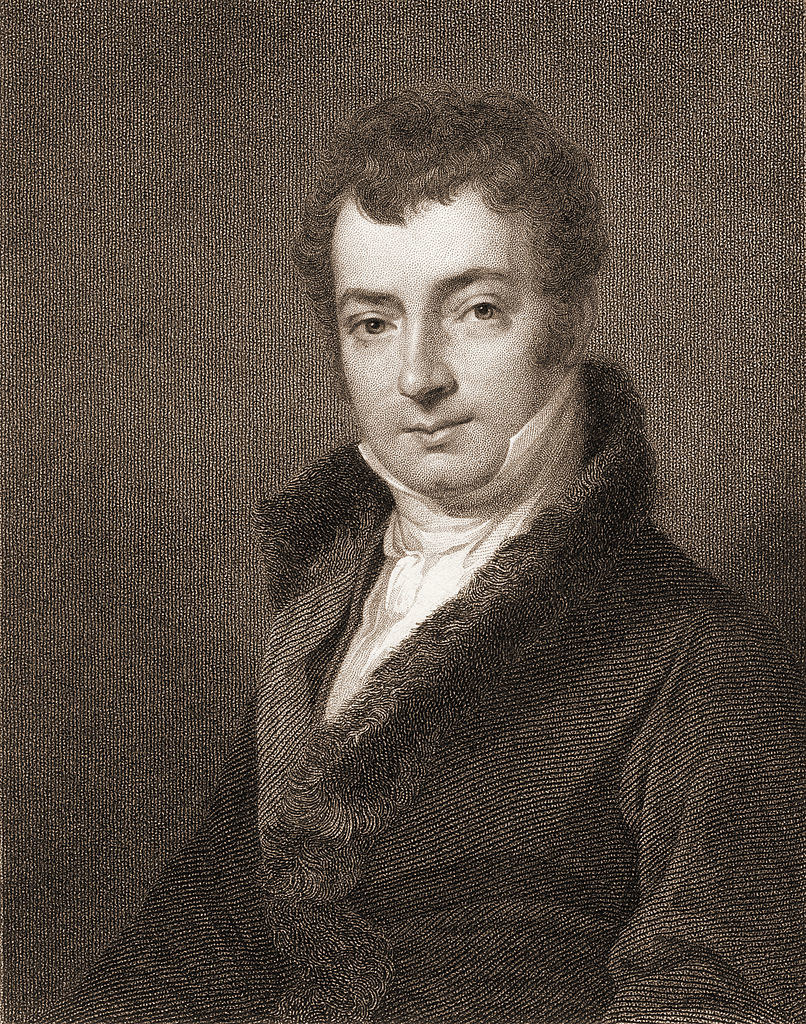
Irving continued to promote St. Nicholas for years. In 1835, he helped found the Saint Nicholas Society of the City of New York, and served as the organization's secretary until 1841. He frequently wrote about Christmas as a time to exchange gifts and feast with family, all with his St. Nicholas legend at the helm. While some argue that Charles Dickens's work also helped to popularize the holiday as we know it, historians say that Irving's holiday essays truly laid the foundation. "Americans embraced Irving’s vision of Christmas as their own, marking the revival of a holiday that had been banned in parts of the country for the excessive drinking and fighting it spurred in the populace."
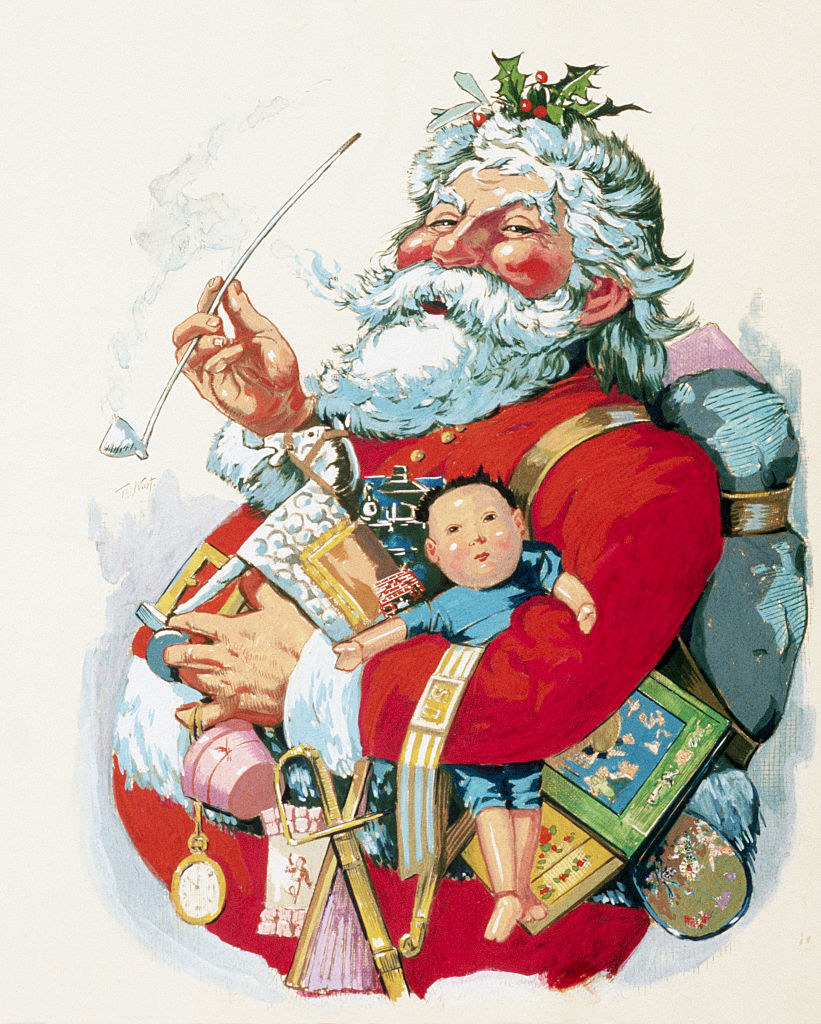
52. Will Ferrell's Elf performance was so good that he was allegedly offered $29 million to reprise his role as Buddy the Elf in a sequel, which he quickly turned down. "I remember asking myself: Could I withstand the criticism when it's bad and they say, 'He did the sequel for the money?'" Ferrell told the Guardian. "I decided I wouldn't be able to. I didn't want to wander into an area that could erase all the good work I've done."
It also turns out that Ferrell was pretty well prepared to tackle the role of Santa's sidekick. Before becoming a successful actor, he worked as a mall Santa Claus, with his future Saturday Night Live cast mate, Chris Kattan, working as his elf. On an episode of Jimmy Kimmel Live!, Ferrell joked that he was a "mobile Santa" because he didn't have a chair or sleigh setup at the open-air mall in Pasadena, California where he worked. Instead, he and Kattan spent four weekends traveling from store to store to spread Christmas cheer. "We’d be like, 'Hello, J.Crew, ho ho ho,' 'Merry Christmas, Sephora, how is everyone doing,' and they got so sick of us, by the fourth weekend, they’d be like, 'Hi, Santa,'" he revealed.
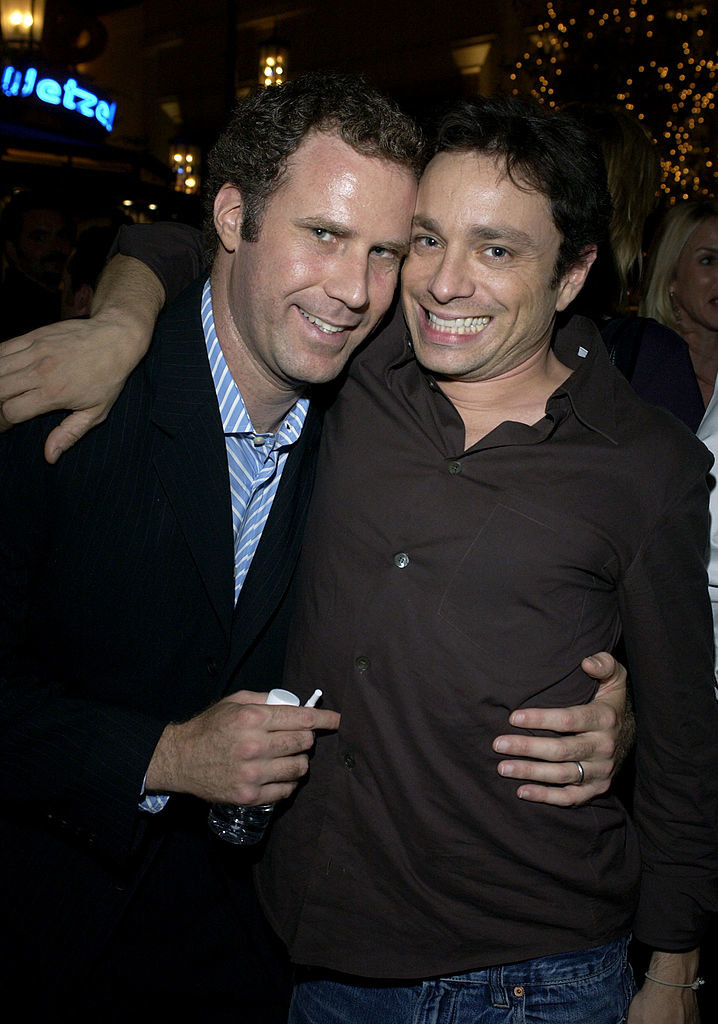
53. Some believe the tradition of leaving cookies and milk for Santa started during the Great Depression as a way for parents to teach their children the importance of giving to others. Cookies were actually brought to America in the late 17th century by the Dutch. As import laws on items like cookie cutters were eliminated, cookies became more popular in the United States as Americans began to put their own spins on classic recipes.
54. President Herbert Hoover considered himself to be the first student at Stanford. Hoover was reportedly the first student of the school's first class to sleep in a campus dormitory. While at Stanford, Hoover formed the school's football team, which he also managed. He helped organize the first "Big Game," the traditional football game between Stanford and the University of California, Berkley, which is still held today. After graduating from Stanford, Hoover moved to Australia, then China to work in the mining industry.
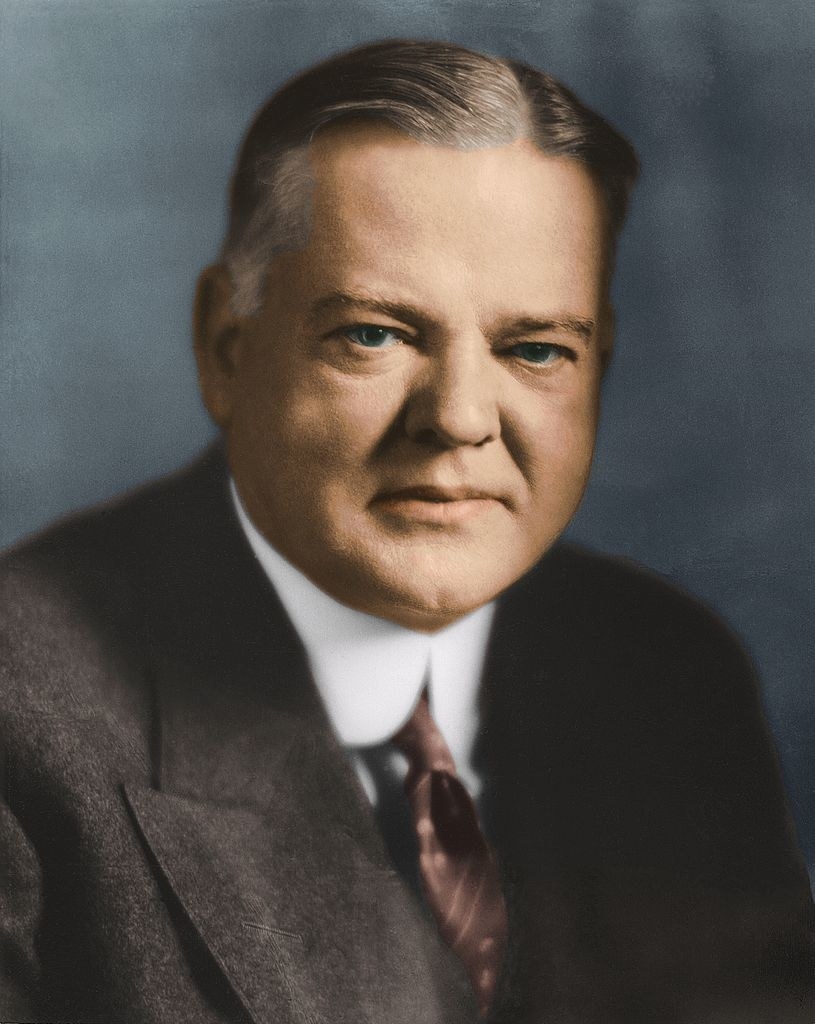
His time in China ended up paying off once he got to the White House! Hoover and his wife Lou, who both spoke some Mandarin Chinese, would allegedly have entire conversations in the language while in the White House to prevent people from overhearing them, although historians believe Lou had a better grasp on the language than her husband.
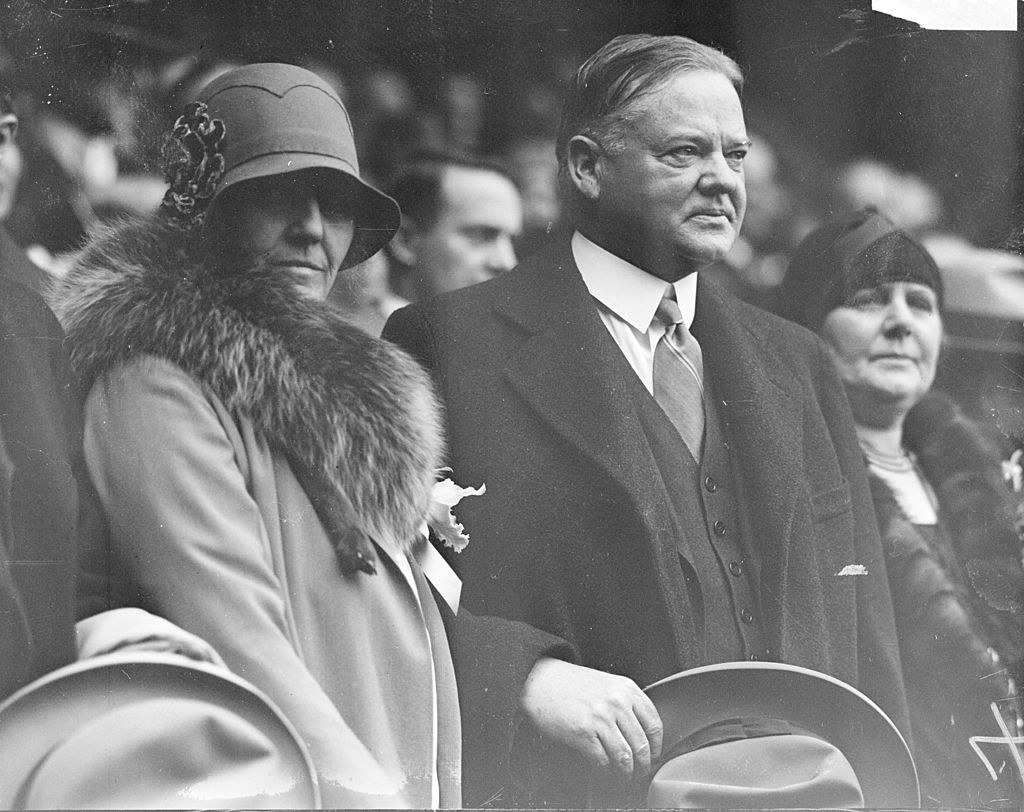
55. While dreidels are now seen as a staple during modern Hanukkah celebrations, they were actually invented as a secret way for Jewish people to engage with their culture. In the 19th century, Greek-Syrians had outlawed Jewish studies. A group of rabbis reportedly developed dreidels, which have the letters Nun, Gimel, Hei, and Pei, which stand for Nes Gadol Haya Poh, or "a Great Miracle Happened Here," on them to allow Jewish people to continue to engage with the Torah while seemingly just playing a game.
56. TBH, this one might take the cake for one of the greatest pranks of all time. On April 1, 1996, beloved fast food chain Taco Bell took out full-page ads in seven newspapers announcing that they had purchased the Liberty Bell, which is located in Philadelphia. "In an effort to help the national debt, Taco Bell is pleased to announce that we have agreed to purchase the Liberty Bell, one of our country's most historic treasures," the ad read. "It will now be called 'The Taco Liberty Bell' and will still be accessible to the American public for viewing. While some may find this controversial, we hope our move will prompt other corporations to take similar action to do their part to reduce the country's debt."

Once the news broke, some talk show hosts allegedly believed the stunt, and aired segments questioning the country's values. Mike McCurry, Bill Clinton's press secretary, must have thought the joke was hilarious, because he joined in on the fun. "We will be doing a series of these things," he said. "Ford Motor Company is joining today in an effort to refurbish the Lincoln Memorial. ... It will be the Lincoln Mercury Memorial." Although former National Park Service Director Roger Kennedy made sure he clued the public in on the fact that it was just a joke, park rangers around the country reportedly fielded tons of calls from people who were outraged that the country would sell the bell, and didn't check to see that it was, in fact, just an April Fool's stunt. Taco Bell ended up donating $50,000 to efforts to preserve the bell.

57. This year's winter solstice will take place on December 21, marking the longest day and shortest night for the Northern hemisphere. Turns out, it tends to be a pretty historical day! The Pilgrims arrived at Plymouth on the solstice in 1620, Pierre and Marie Curie discovered radium on this day in 1898, and the Apollo 8 spacecraft launched during 1968's solstice.

58. One of my favorite Christmas traditions is the 24-hour marathon of A Christmas Story, so let's take a look behind the scenes of the holiday classic, shall we? When it came to casting the movie, director Bob Clark auditioned thousands of child actors to take on the role of Ralphie, but ended up giving the role to Peter Billingsley, who was the very first actor Clark saw during the audition process! Jack Nicholson was in talks to star in the movie as the Old Man, Ralphie's father, but was allegedly asking for more money than the film's budget allowed.
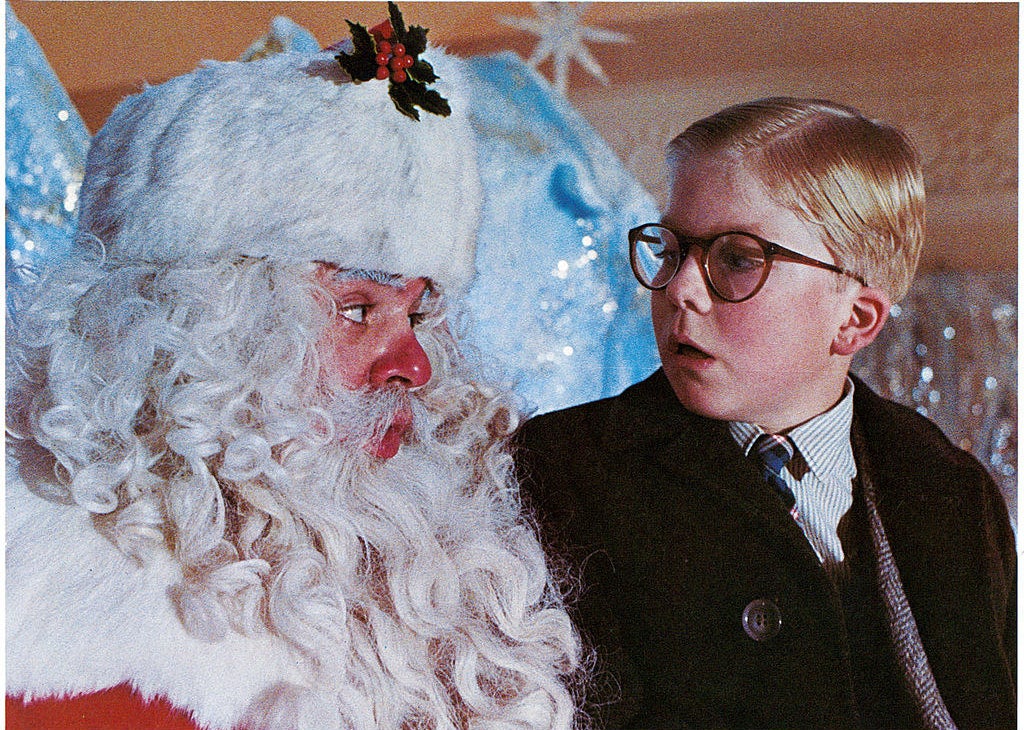
Once filming for the flick went underway, production had to jump into action to create the snowy Indiana town the movie takes place in. Although they filmed in Cleveland, Ohio, and Toronto, there was reportedly no snow, so production had to freeze water to create fake snow. It took about 24 hours to create the winter wonderland seen in the film. In one memorable scene, Ralphie is dressed as a cowboy, complete with chewing tobacco in his mouth. While many actors typically used black licorice to mimic the look of chewing tobacco, Billingsley was allegedly given real chewing tobacco instead. Billingsley later revealed that after trying the tobacco, his lips started burning, he got incredibly dizzy, and he started sweating.
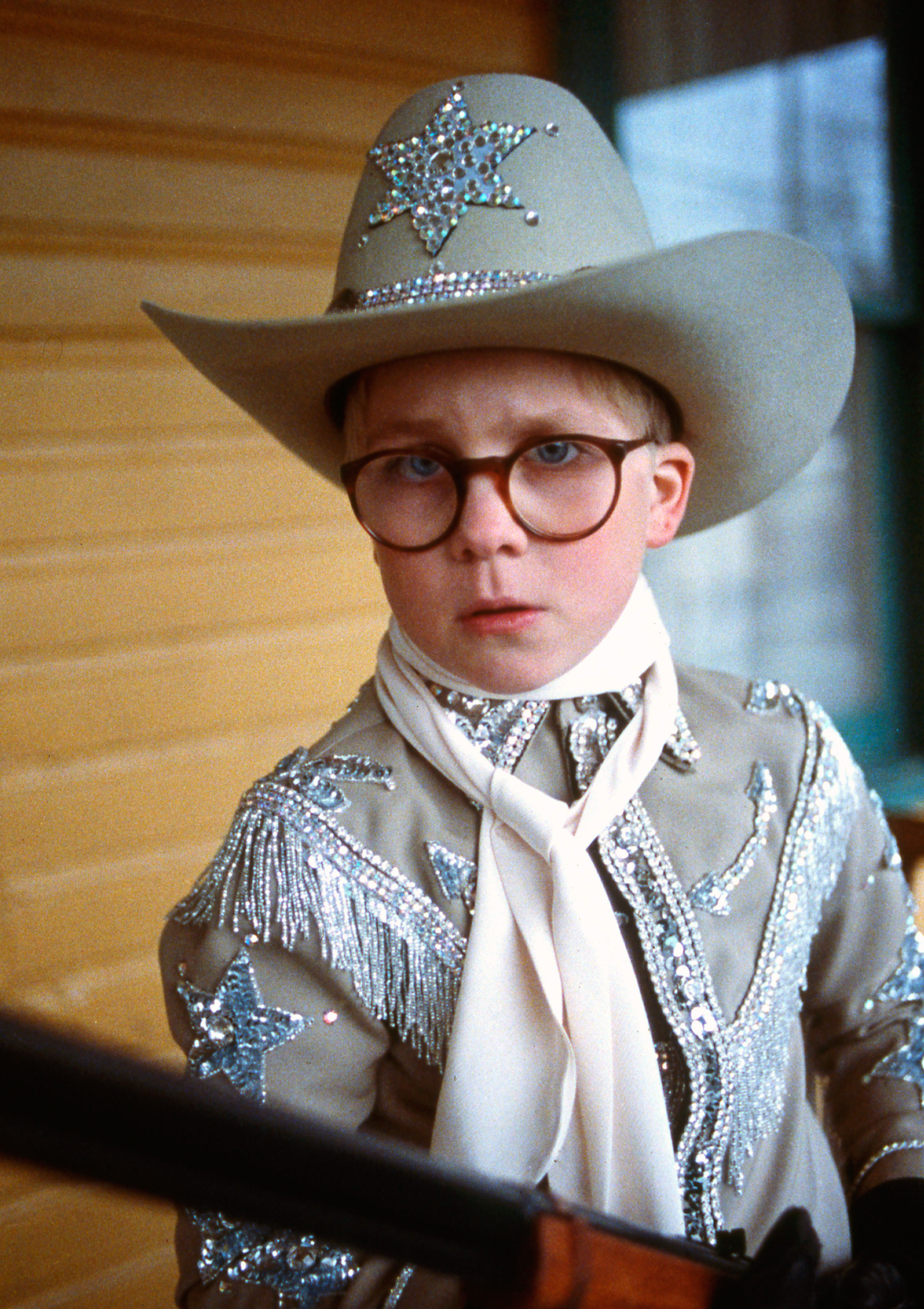
But perhaps the most iconic moment of the entire movie was the scene in which a character named Flick is triple-dog-dared to stick his tongue to a frosty pole. The scene was actually filmed by cutting a hole into the pole and putting a suction tube inside. Scott Schwartz, who plays Flick and now runs a child actor advocacy group, said the worst part of filming the scene was not having his tongue stuck to the pole, but the frigid temperatures while filming outside during a Canadian winter. MythBusters actually put the scene to the test and found that in freezing conditions, a tongue actually can get stuck to a metal pole, as saliva turns into "a kind of superglue."
And as for the movie's leg lamp? In the movie, the Old Man wins the lamp after entering a contest. The movie was actually based on a book written by Jean Shepherd, who said he was inspired to write about the lamp after seeing a large leg in a Nehi Soda advertisement. Reuben Freed, the movie's prop designer, said he had no clue what the lamp was supposed to look like, so he presented Shepherd with several potential designs until they landed on the version that made its way into the movie. All three of the lamps Freed made for the film were broken over the course of filming.
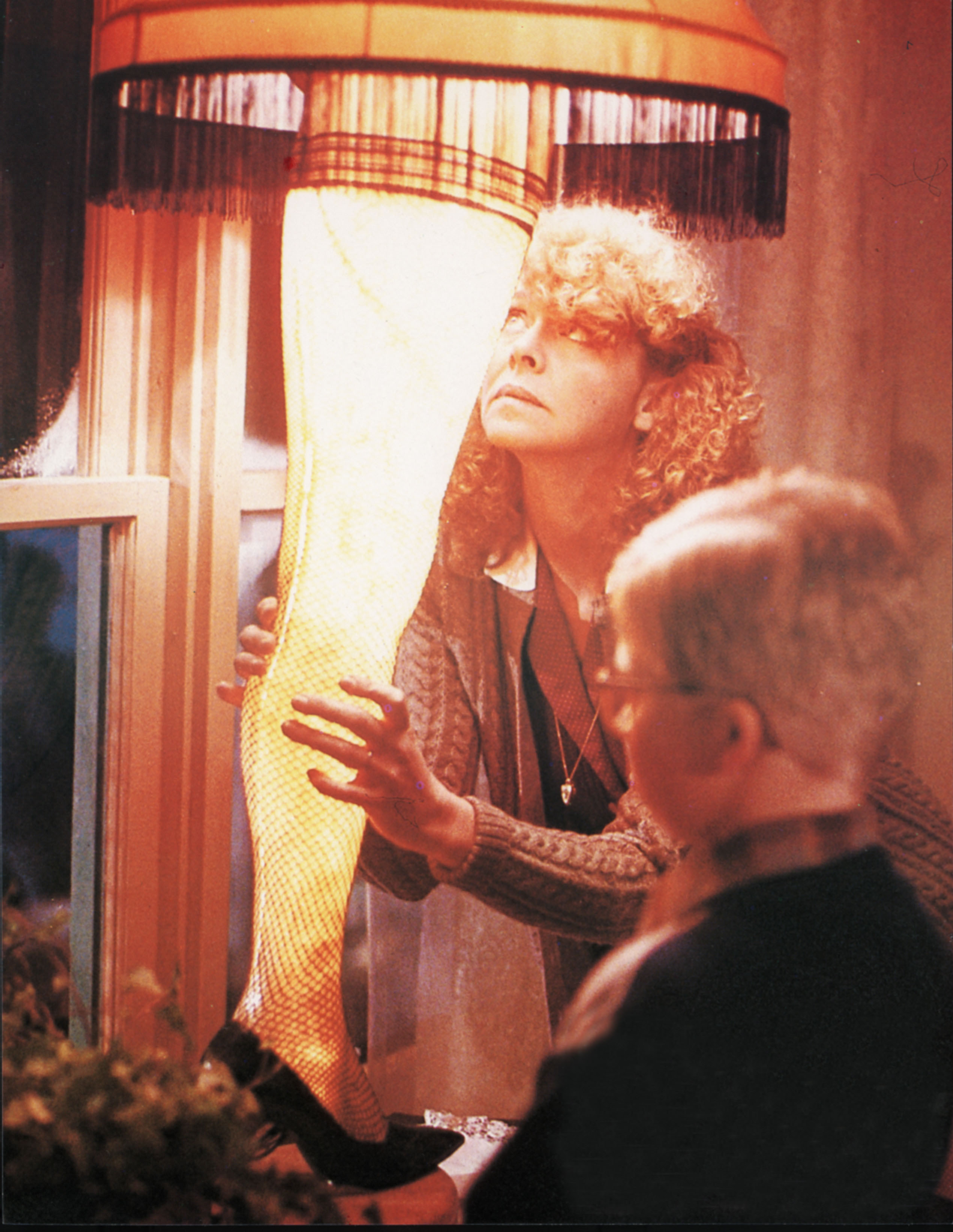
59. While you might assume that the phrase "Bah, humbug" loosely translates to "I hate Christmas," it's actually a bit different. Back in the 1700s, "humbug" was seen as a slang word that often represented "nonsense," “a hoax; a jesting or befooling trick,” or any “thing which is not really what it pretends to be." It's believed that the phrase, which was uttered by Scrooge in Charles Dickens's A Christmas Carol, was actually calling the holiday a scam, with the character believing Christmas tricked people into spending their money and feeling happy and cheerful.
60. The song "Baby, It's Cold Outside" has become increasingly controversial over the years, so I decided to deep dive into the song's history. The song was written in the 1940s by Frank Loesser, who penned the song to sing with his wife at parties, allegedly as an indication that they wanted their guests to leave. The original version of the song labeled the man's verses as "wolf," while the sections intended for the woman to sing were labeled "mouse." Loesser's wife was reportedly furious when her husband sold the song to MGM in 1948 to be featured in the movie Neptune's Daughter. The song was widely regarded as a holiday hit until 2004, when two National Post columnists called the song "an ode to statutory rape."
The column was reportedly written to be tongue-in-cheek to poke fun at political correctness, but some took it seriously. Over the following years, some radio stations pulled the song. A 2010 article from Persephone took a look at the historical context of the song, claiming that lines like "what's in this drink?" was a common joke at the time. Others have positioned the song as an "anthem for progressive women," arguing that it advocates for "women’s sexual liberation," by pushing the boundary that unmarried women weren't supposed to spend the night at a man's house.
View this video on YouTube
61. And finally, Bess Flowers, known as "The Queen of Hollywood Extras," was one of the most prolific character actors of all time and appeared as an extra in over 350 movies throughout her 40-year career. Flowers, who was originally from Texas, ran away from home and planned to head to New York to escape her overbearing father. She originally wanted to become a Broadway star, but later saw an advertisement for California that inspired her to change course and head to Hollywood instead. In 1922, Flowers got her first role. She was often chosen for parts because of her statuesque height. "[The studios] liked tall women because [leading men] didn’t have to bend down to kiss them and ruin their profile," she once said.
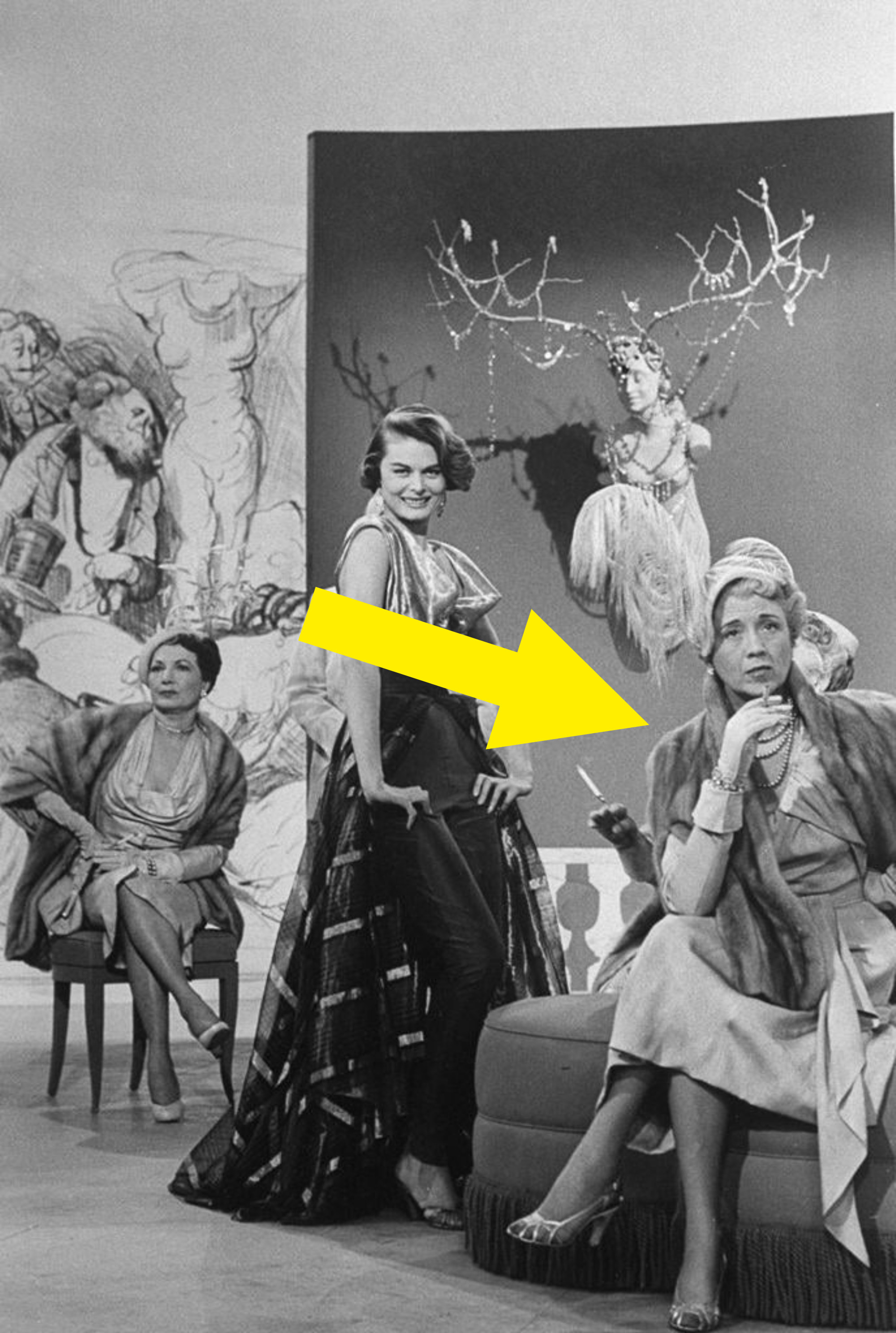
As "talkies" gained prominence and silent films began to lose popularity, Flowers began to take on bit parts, and also appeared as an extra in dozens of films. Flowers was notorious for buying many of the costumes she wore in films. Whenever agencies were looking for an extra who could provide her own stylish outfit for a scene, they often turned to Flowers. In fact, Flowers had so many clothes that she required a special wardrobe room later in her life when she lived at the Motion Picture Country House in Los Angeles.
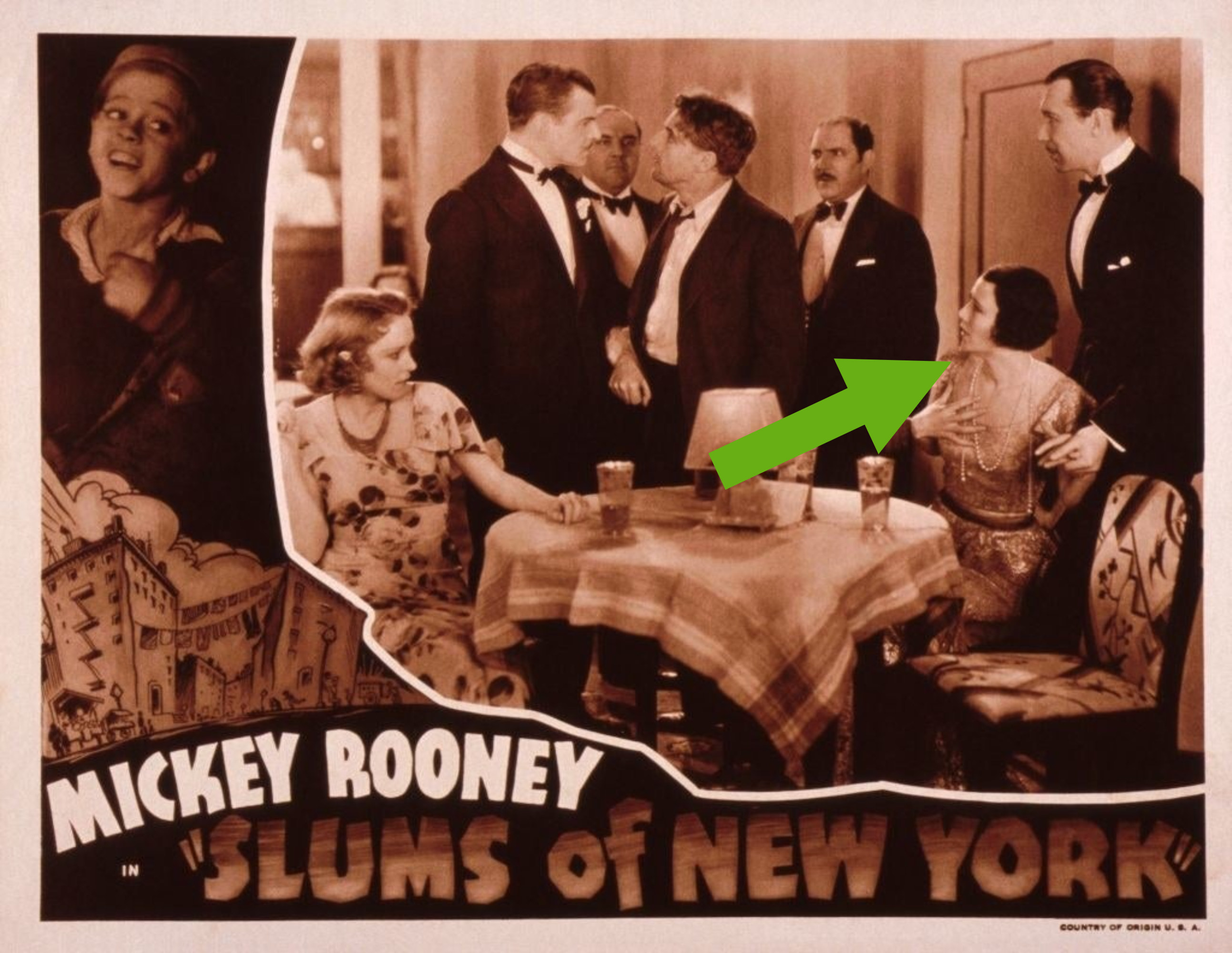
Flowers was well-known among notable directors of the time, including Frank Capra and Alfred Hitchcock, who would often request her when looking for extras. Although Flowers rarely received screen credit for her roles, which seldom had any dialogue, she was very recognizable in her work as an extra. As a result of her decades in Hollywood, Flowers has the unique distinction of acting in 23 films that were nominated for Best Picture, making her the actor who has appeared in the most nominated films. In 1945, she helped establish the Screen Extras Guild, which ensured fair pay and working standards for film extras. Flowers made her final film appearance in 1964, and died in 1984.
